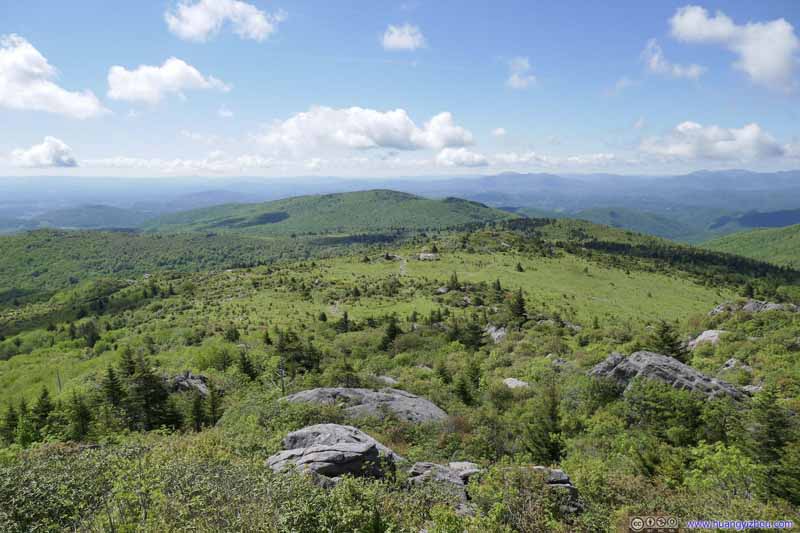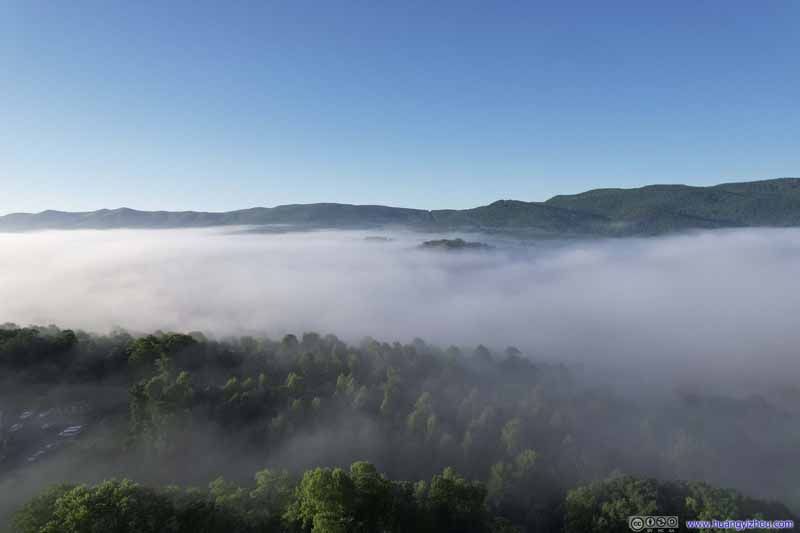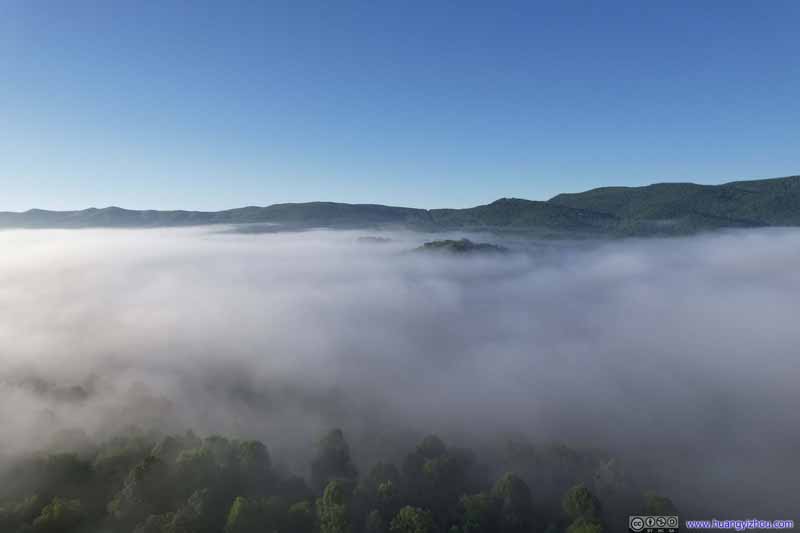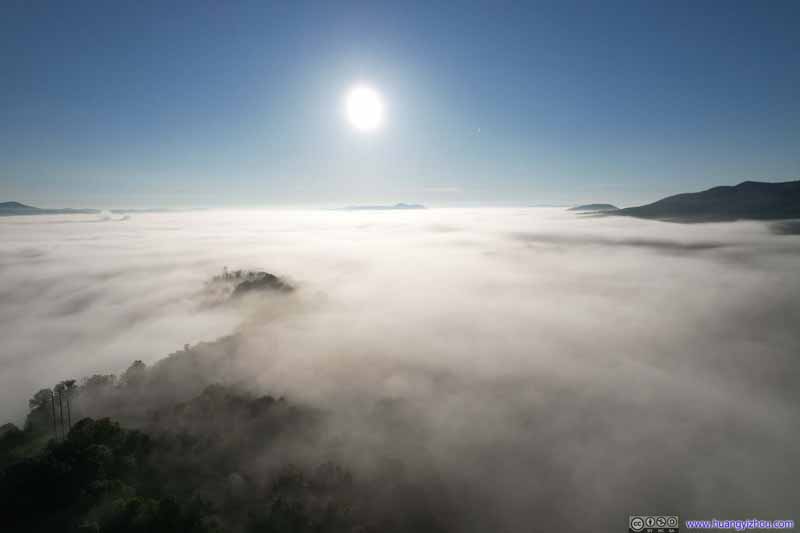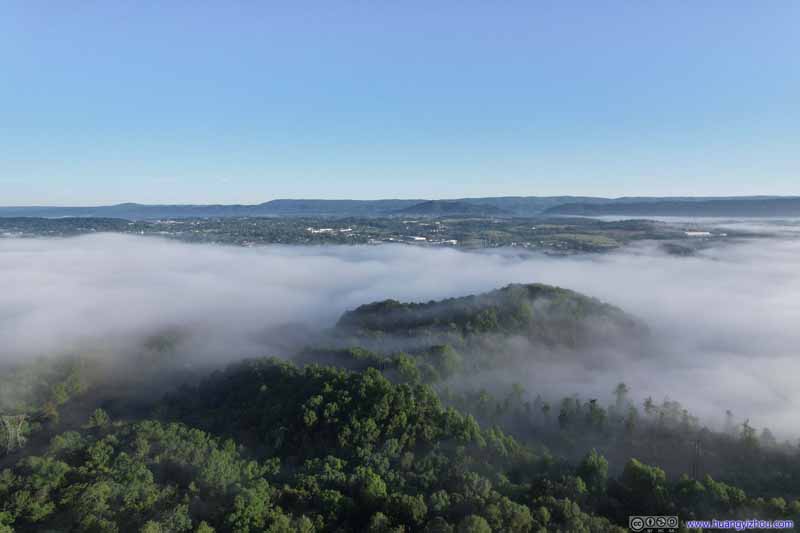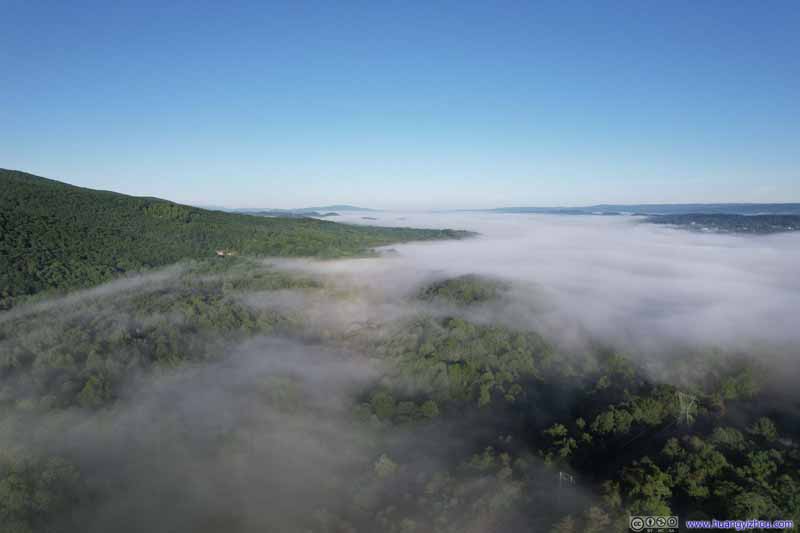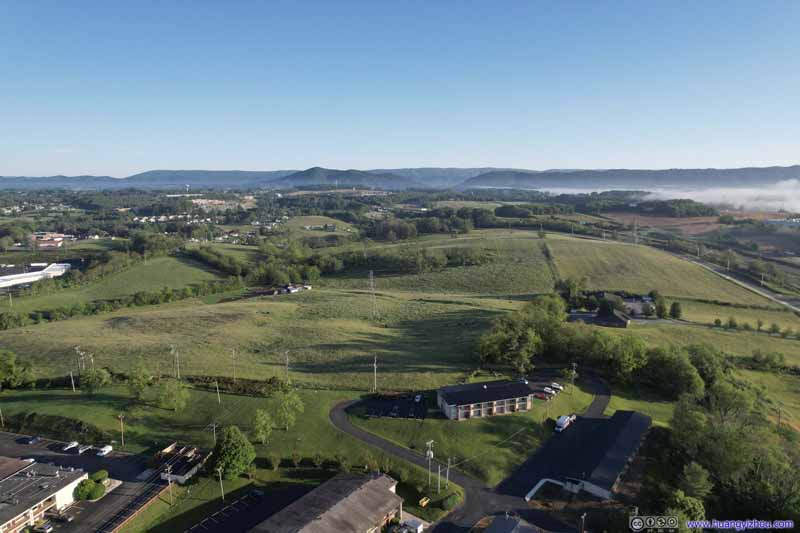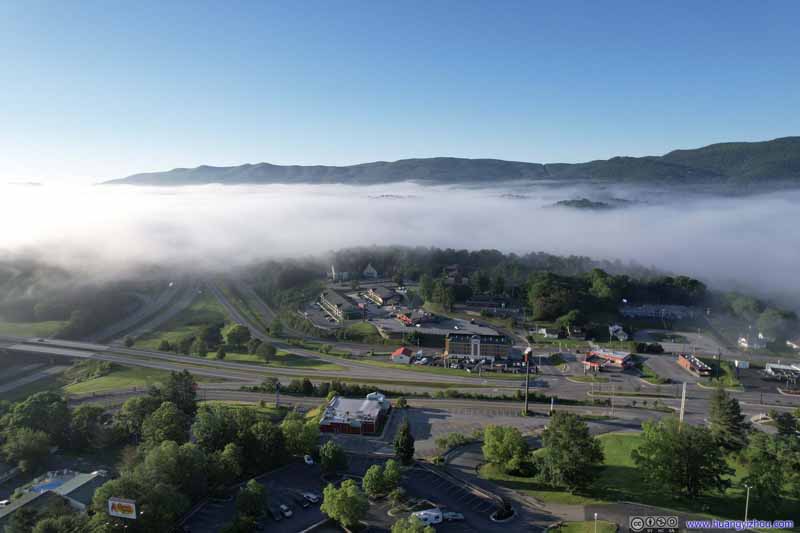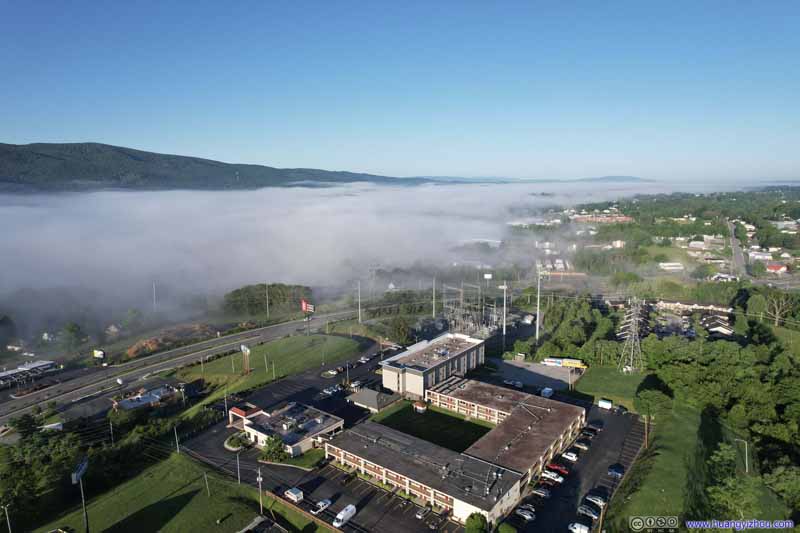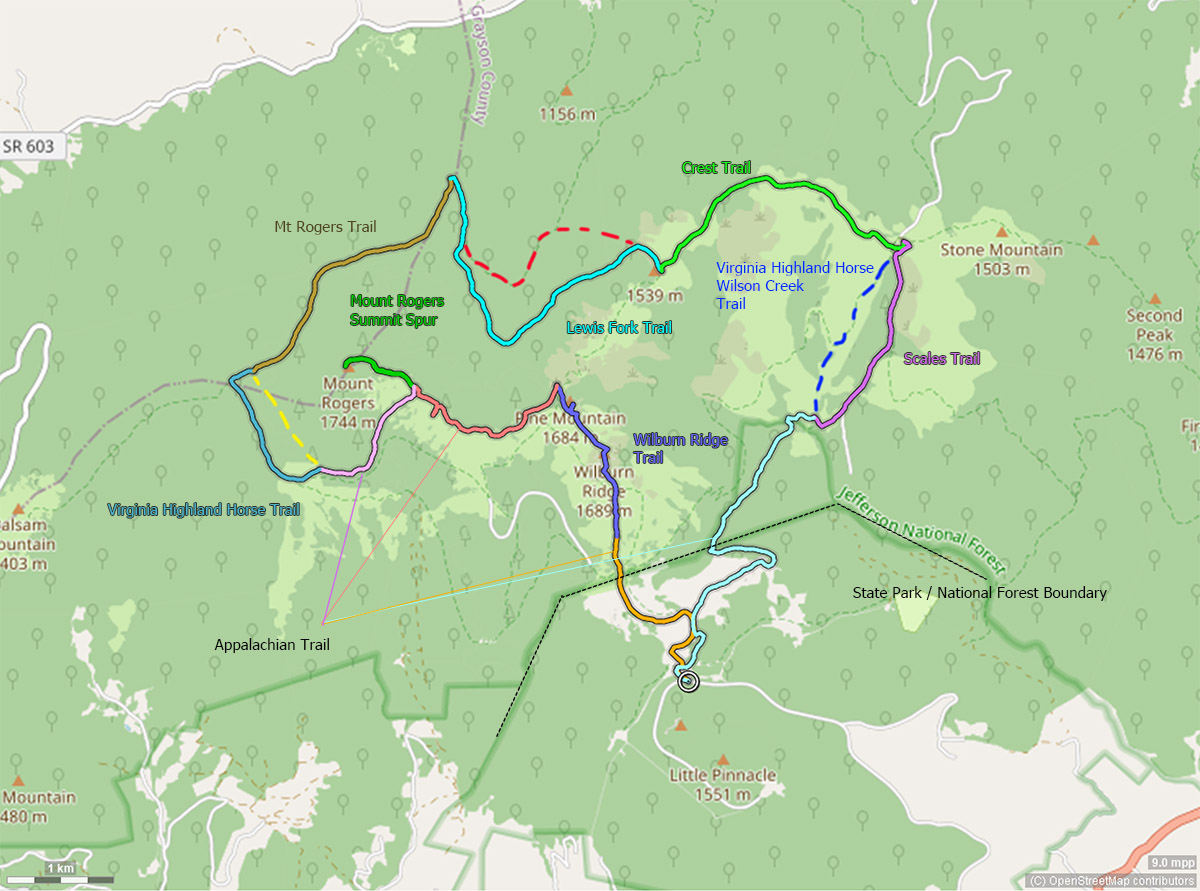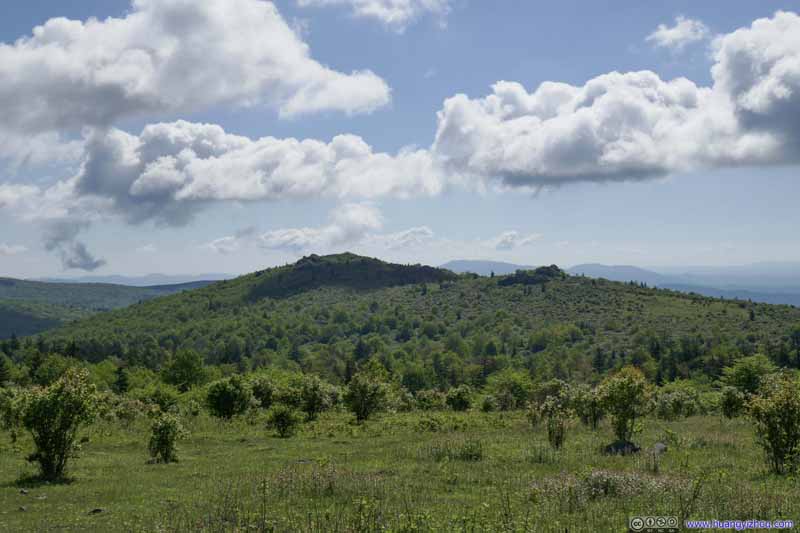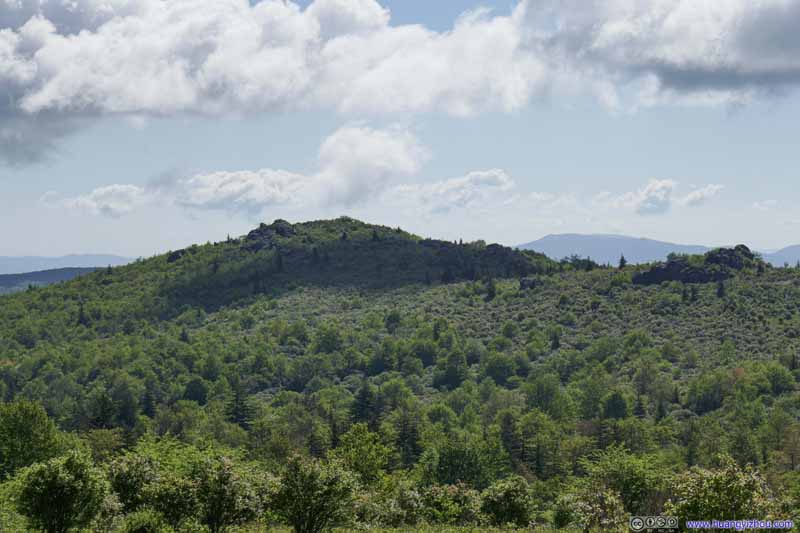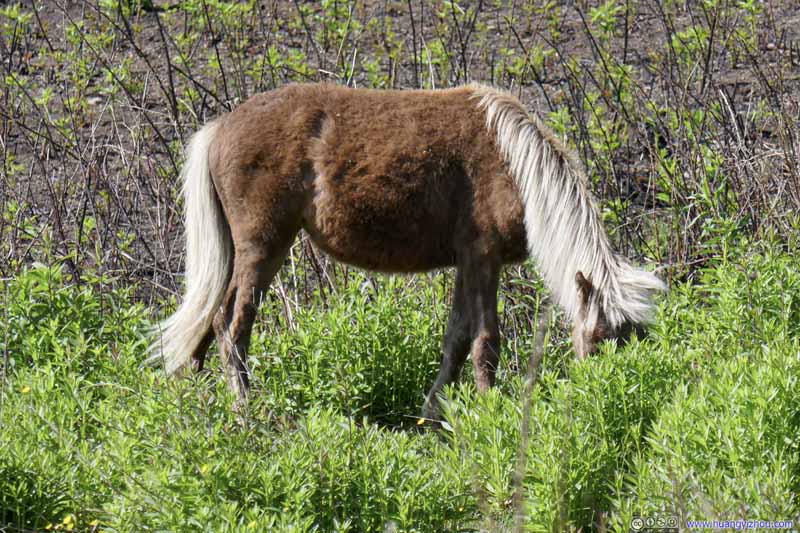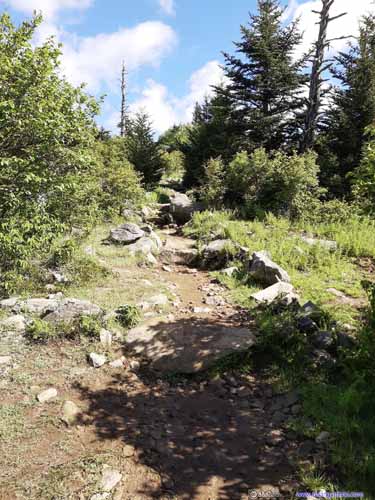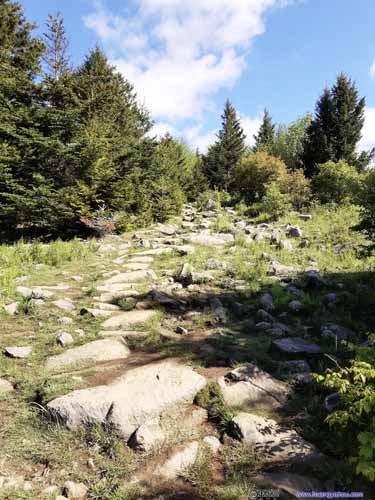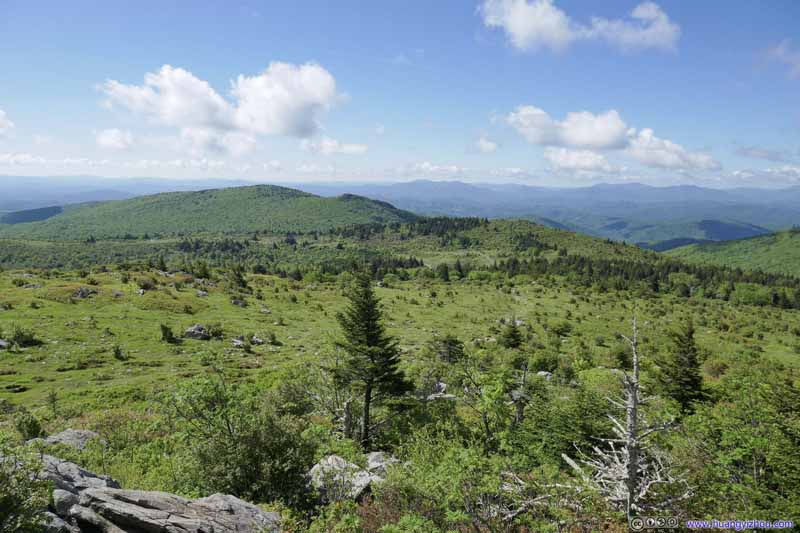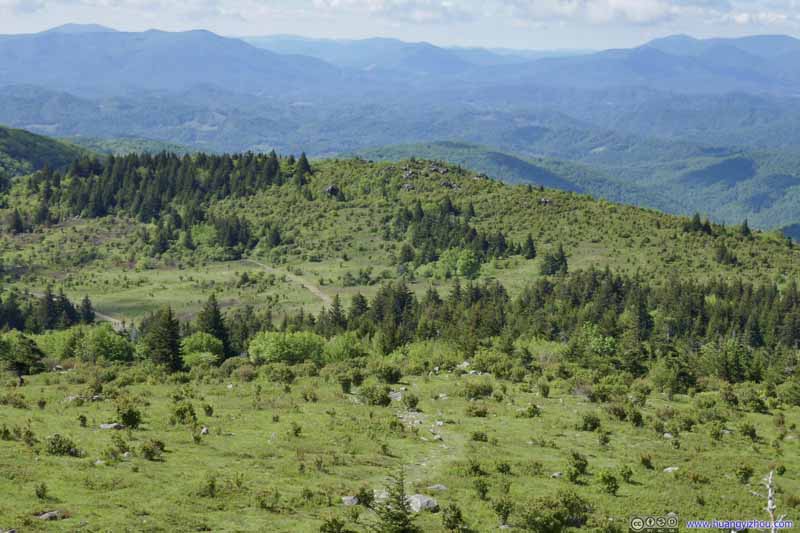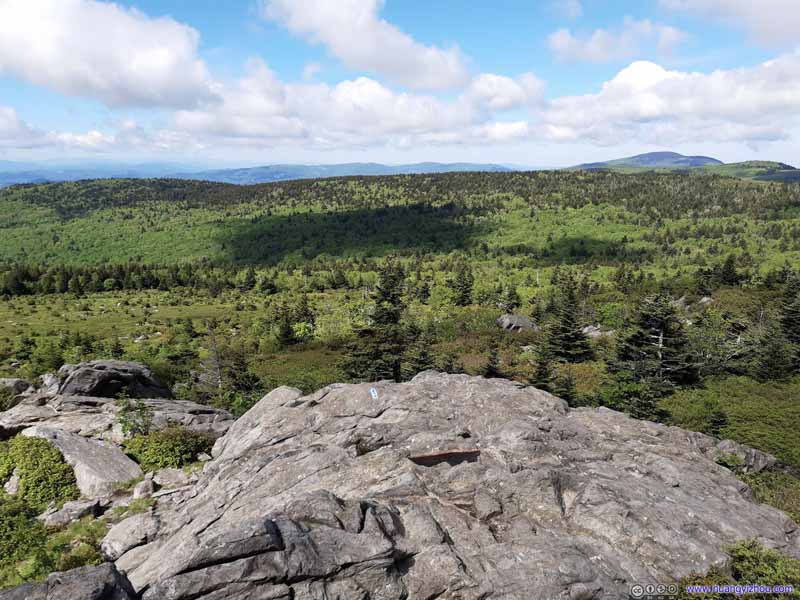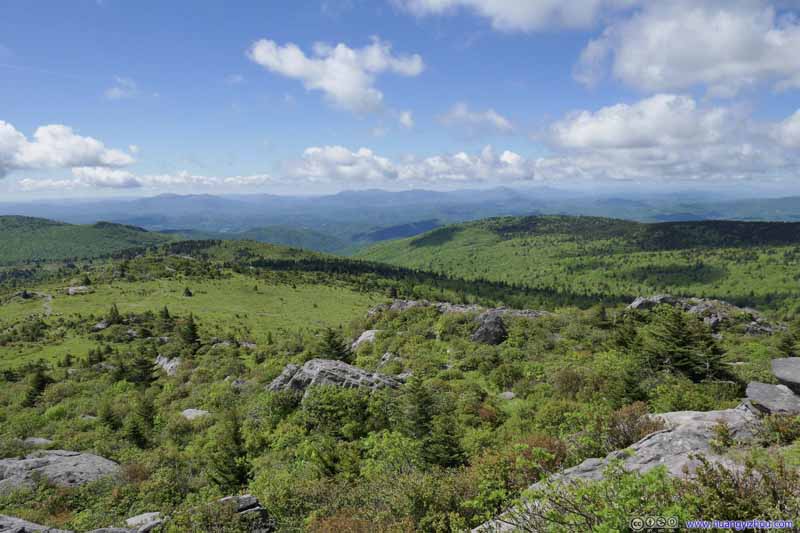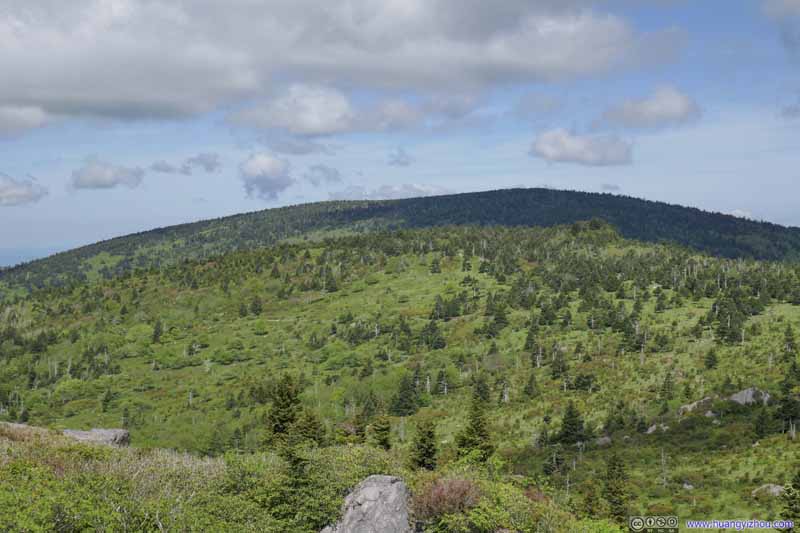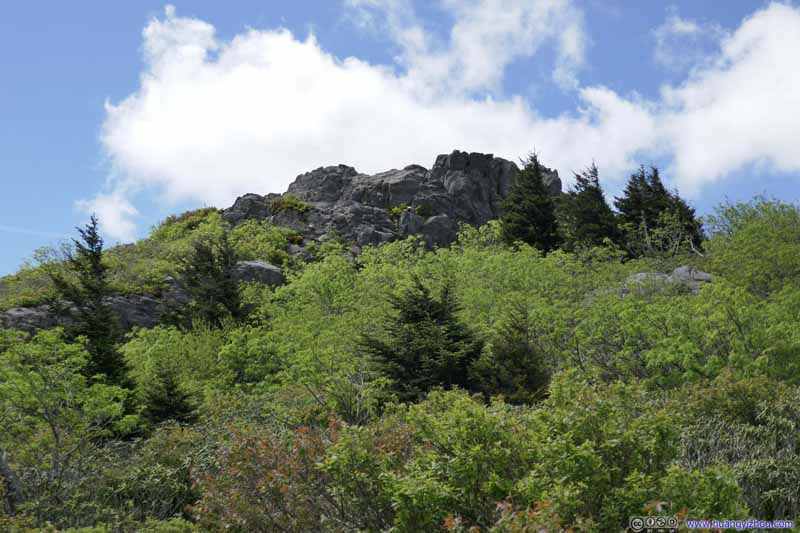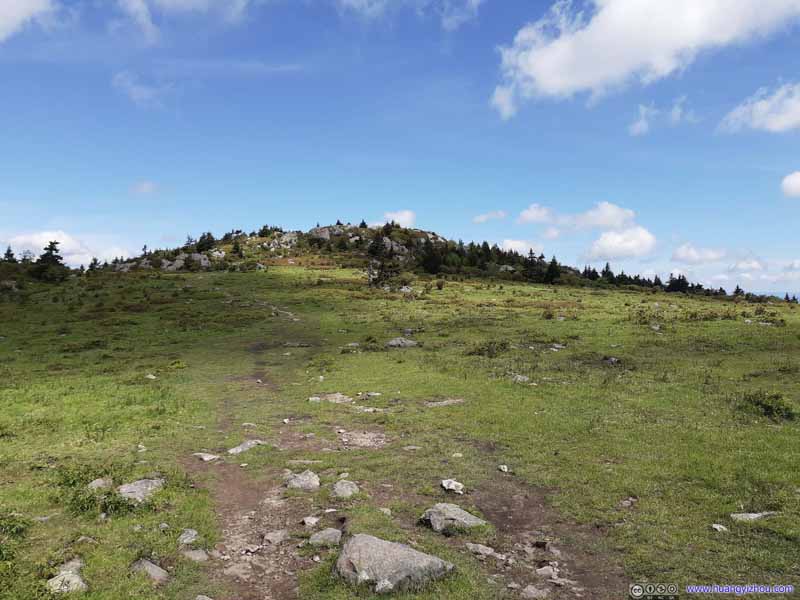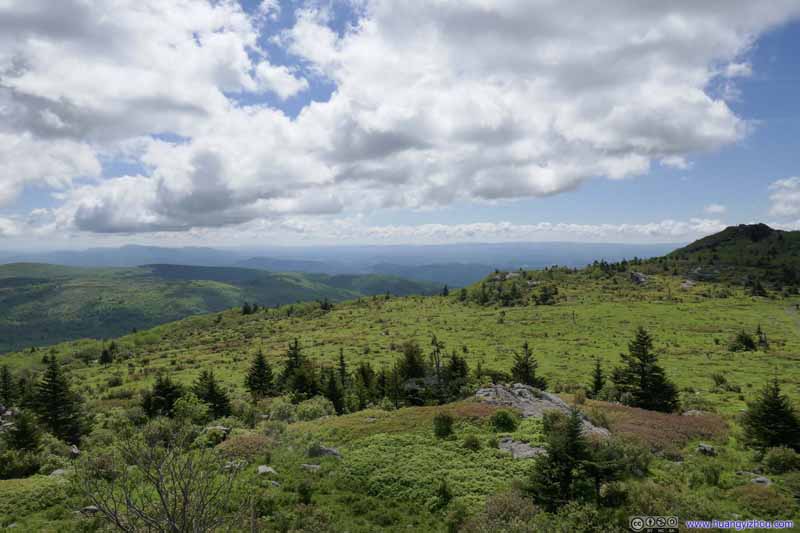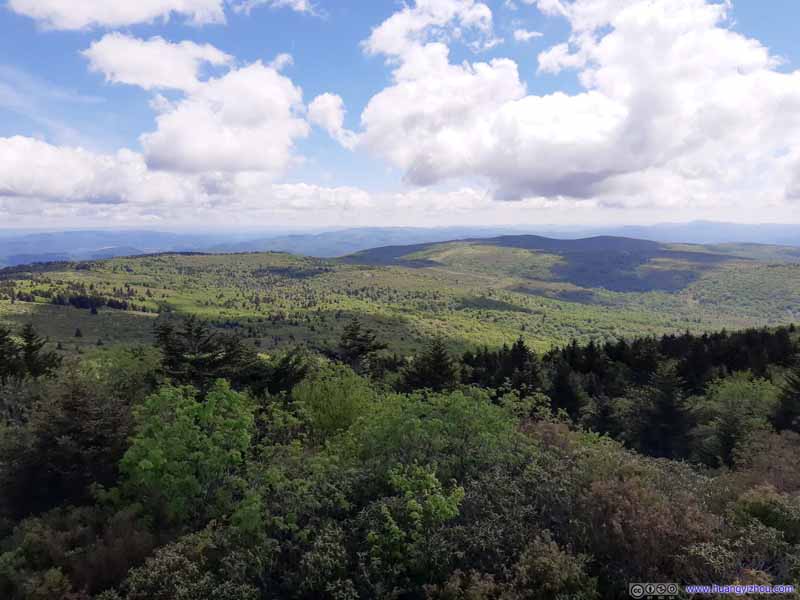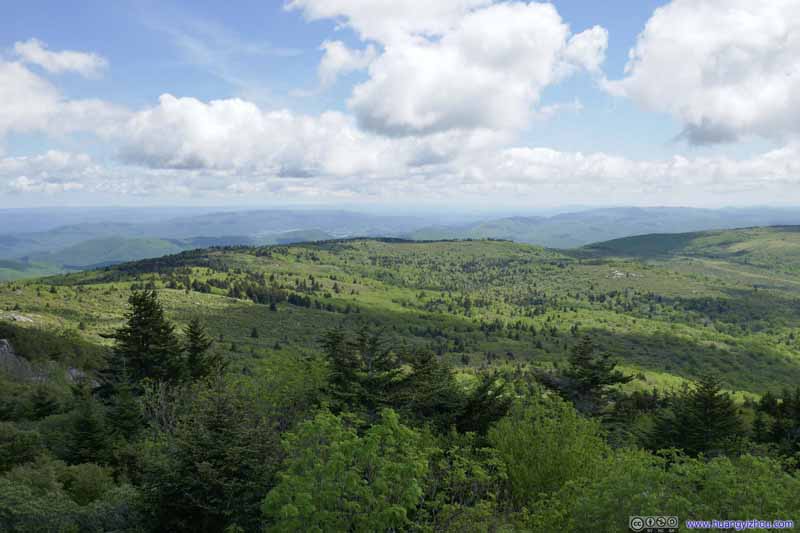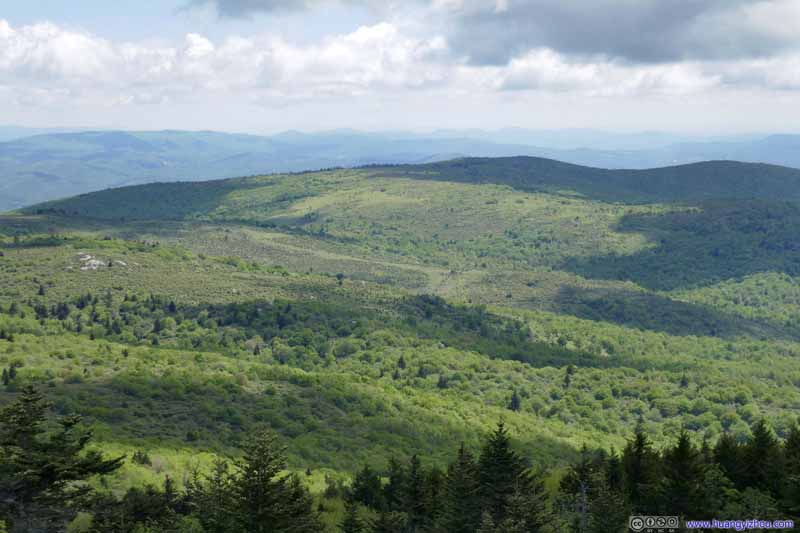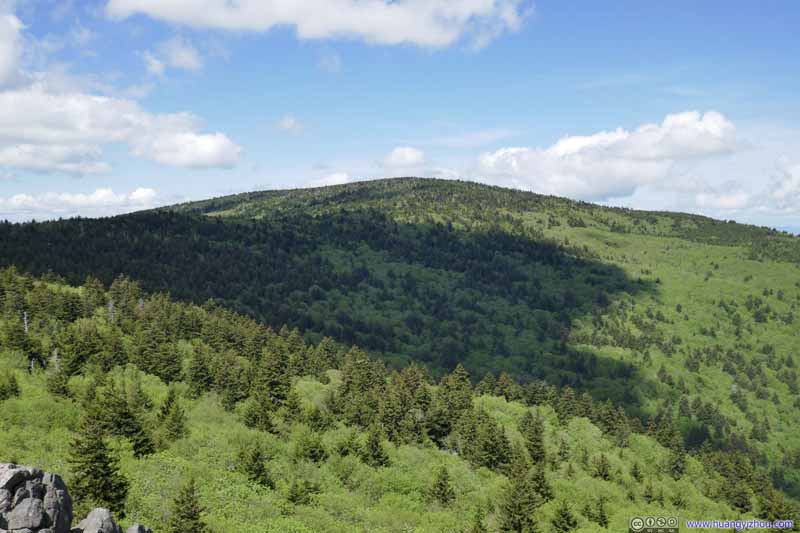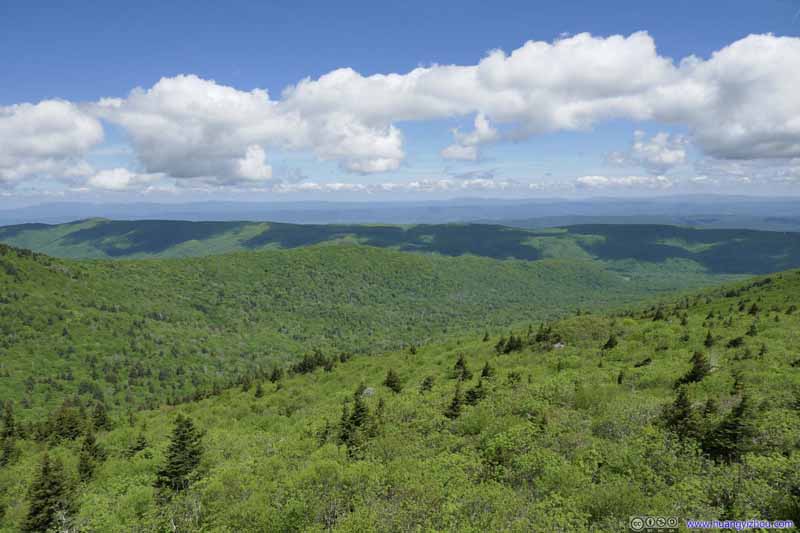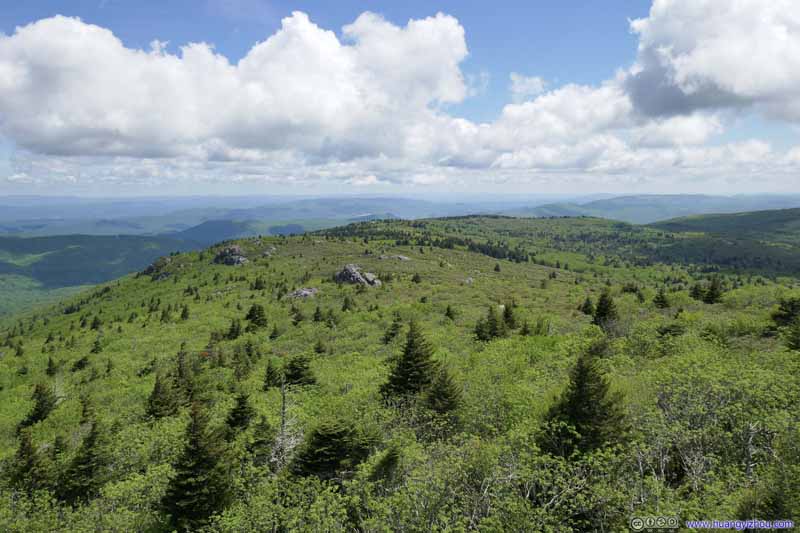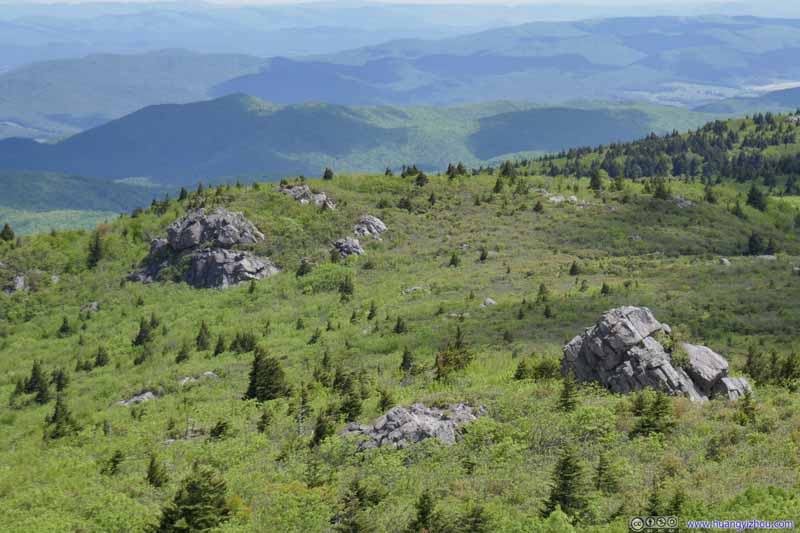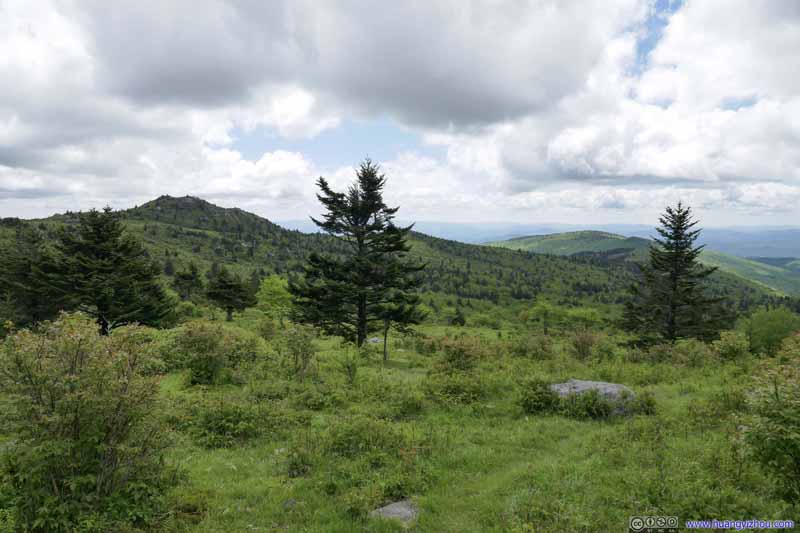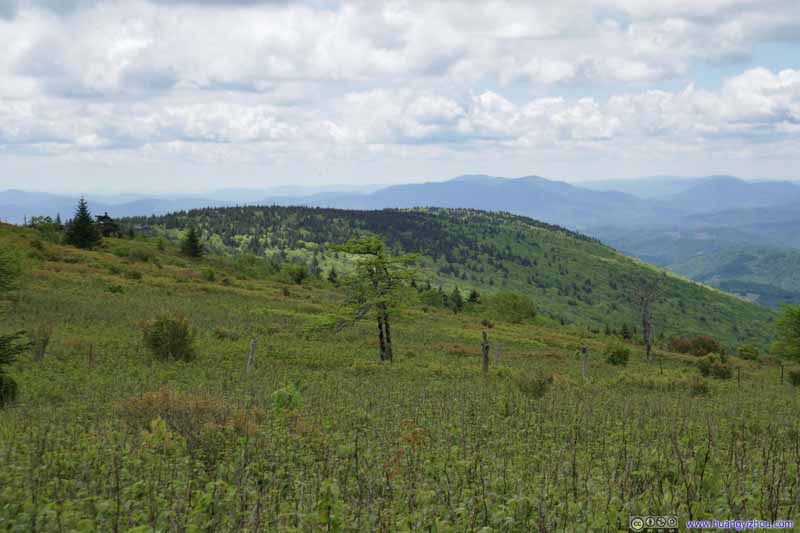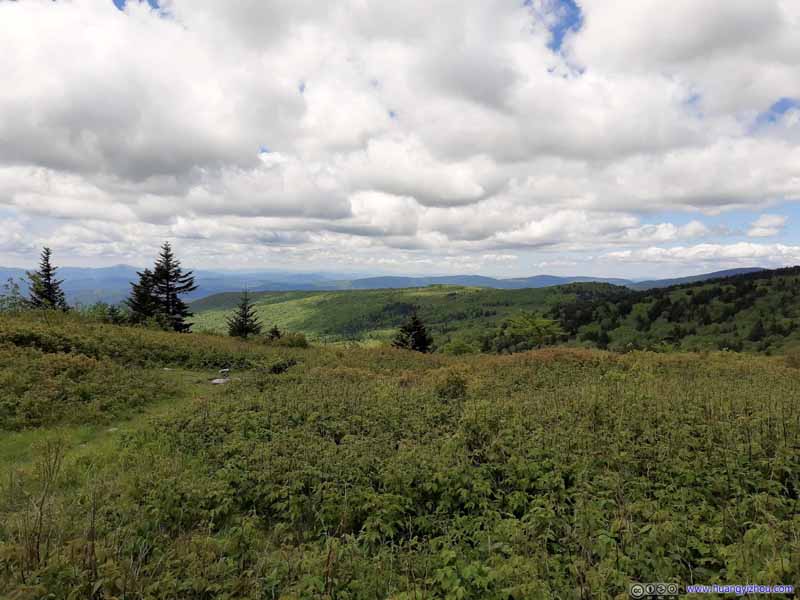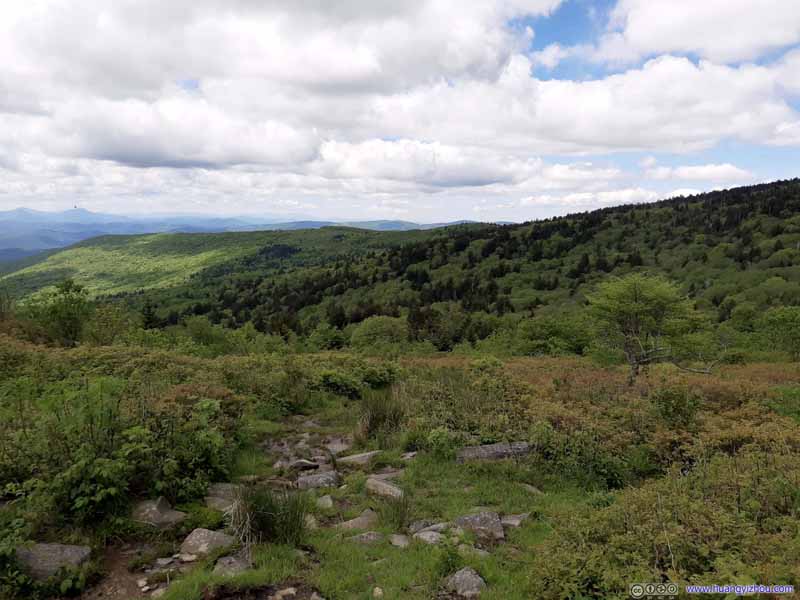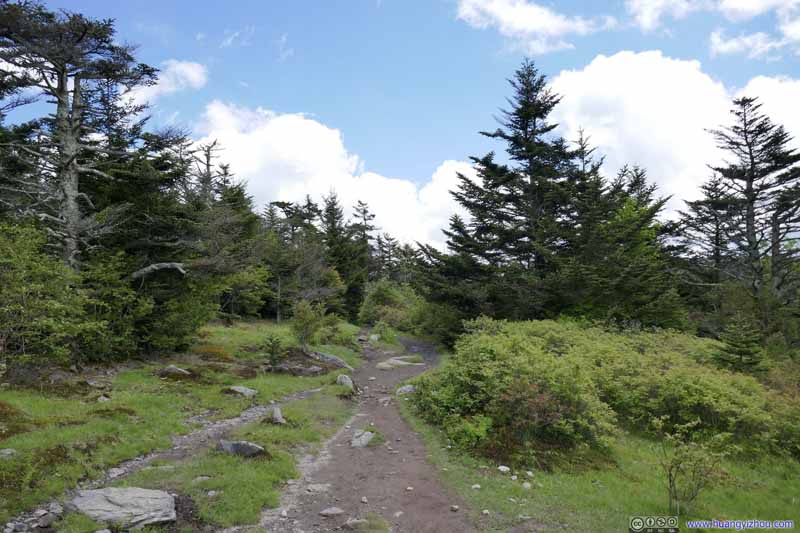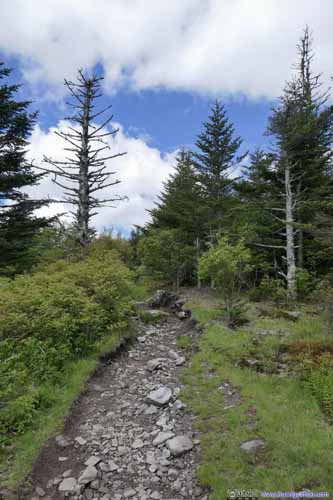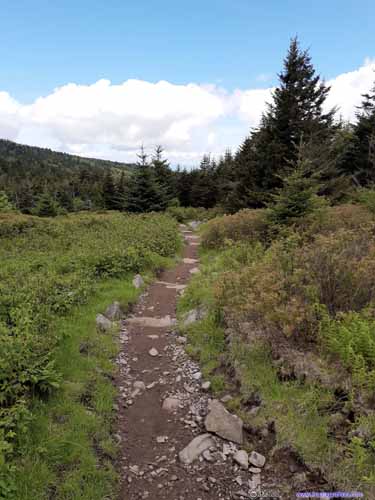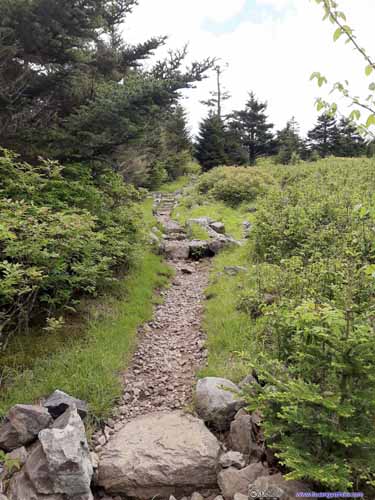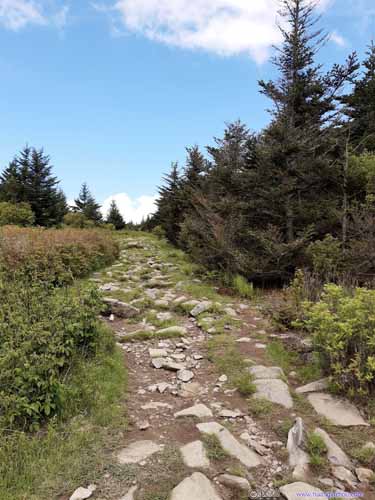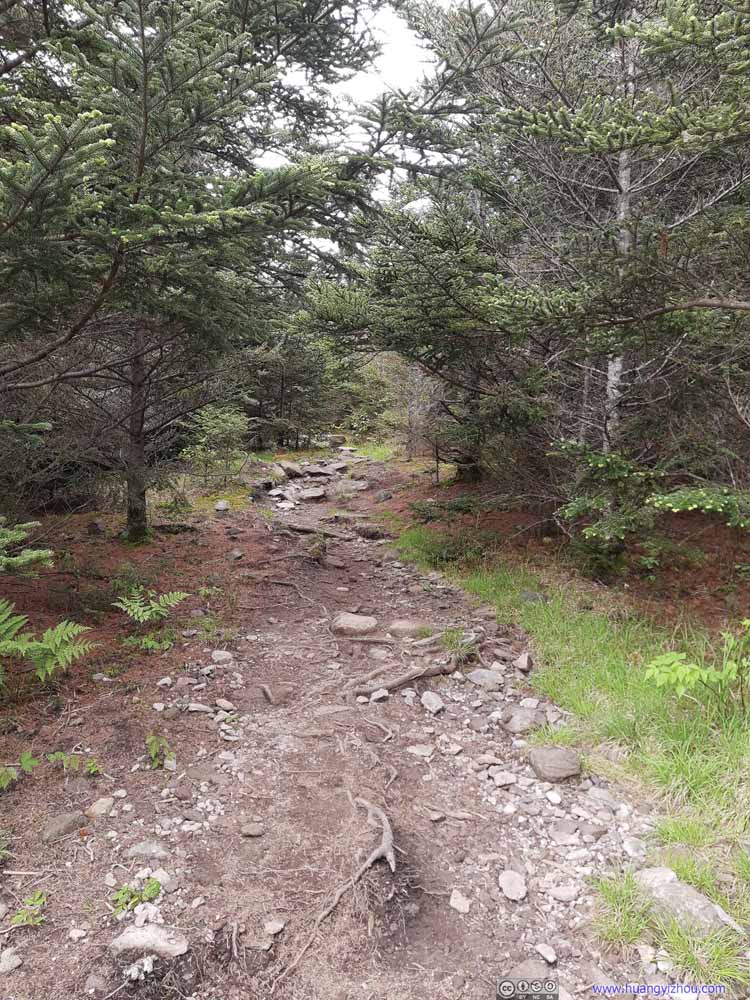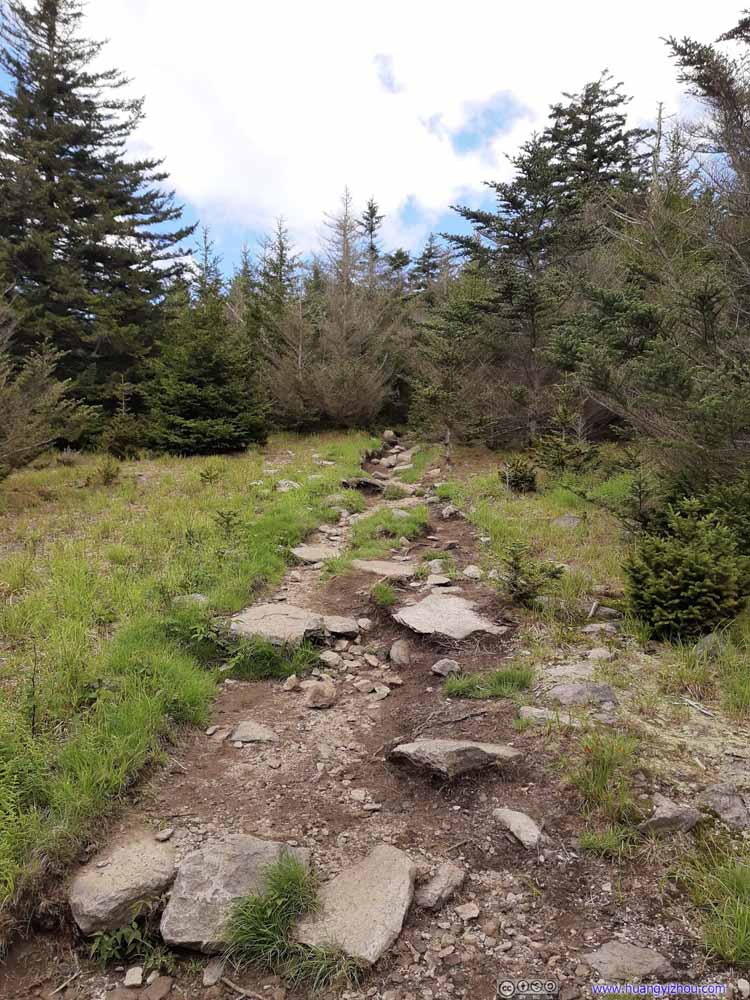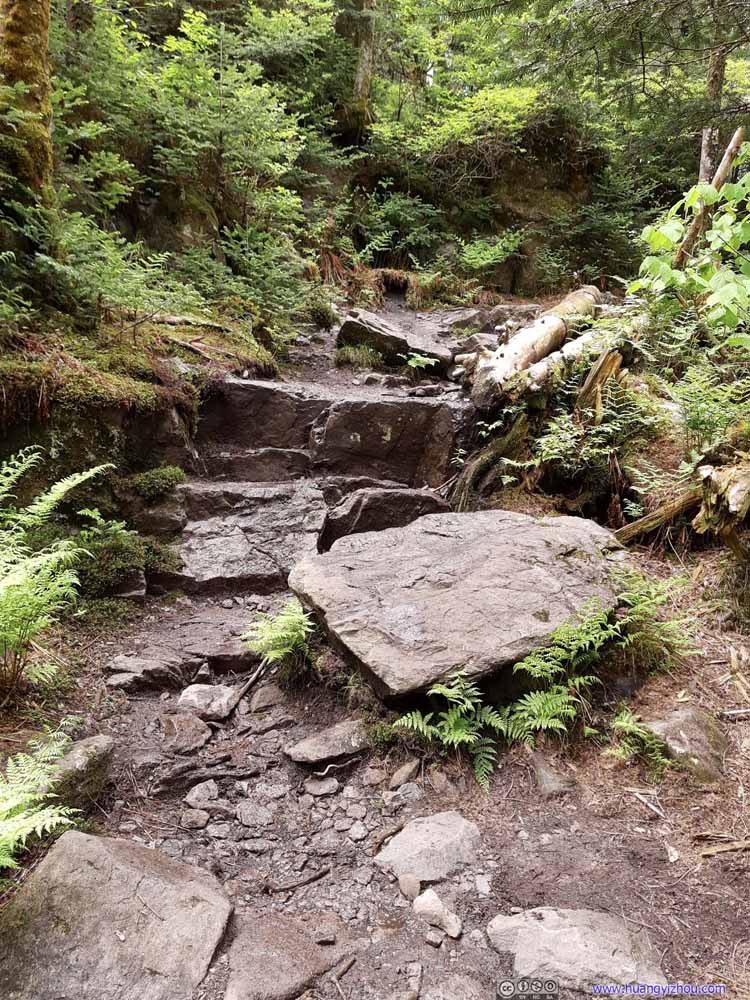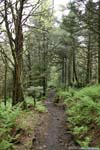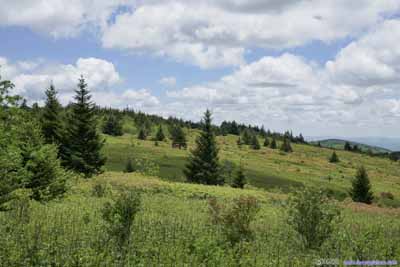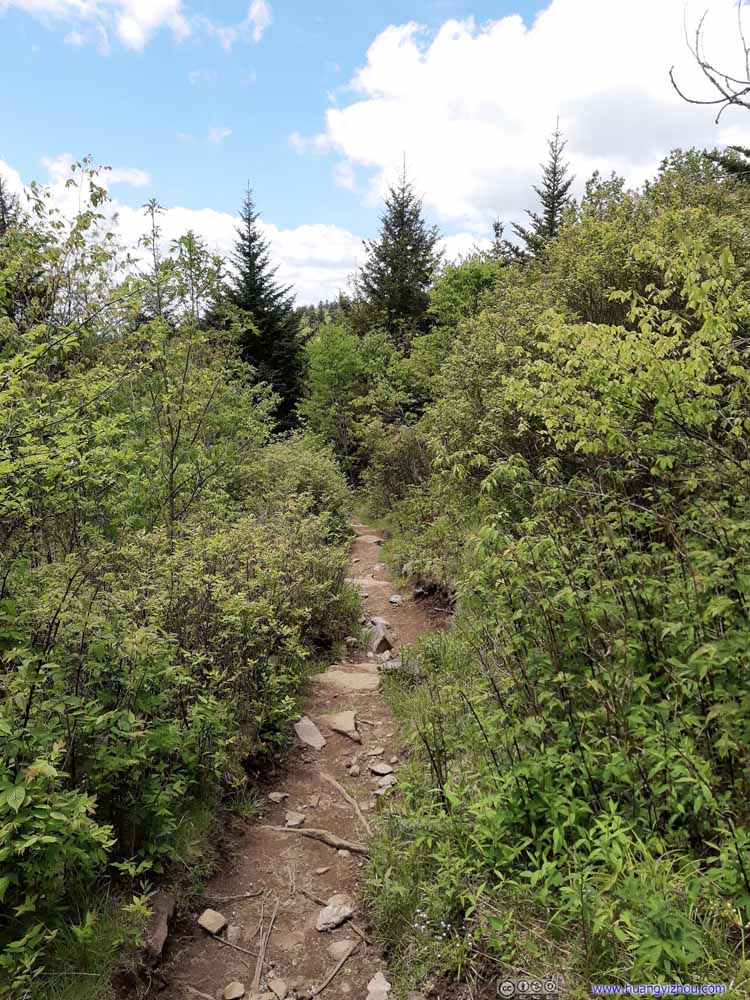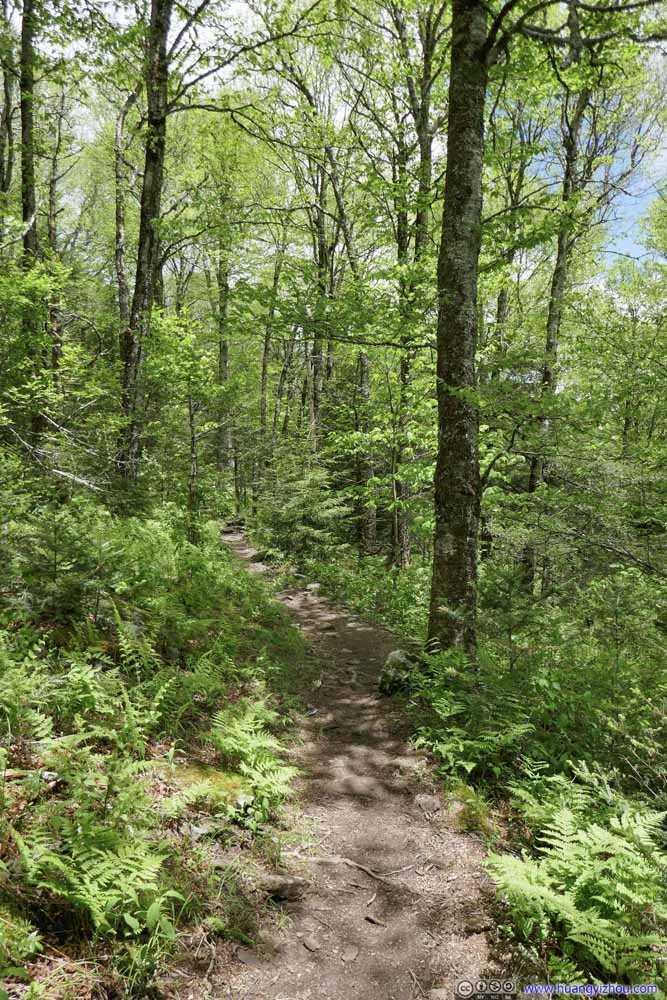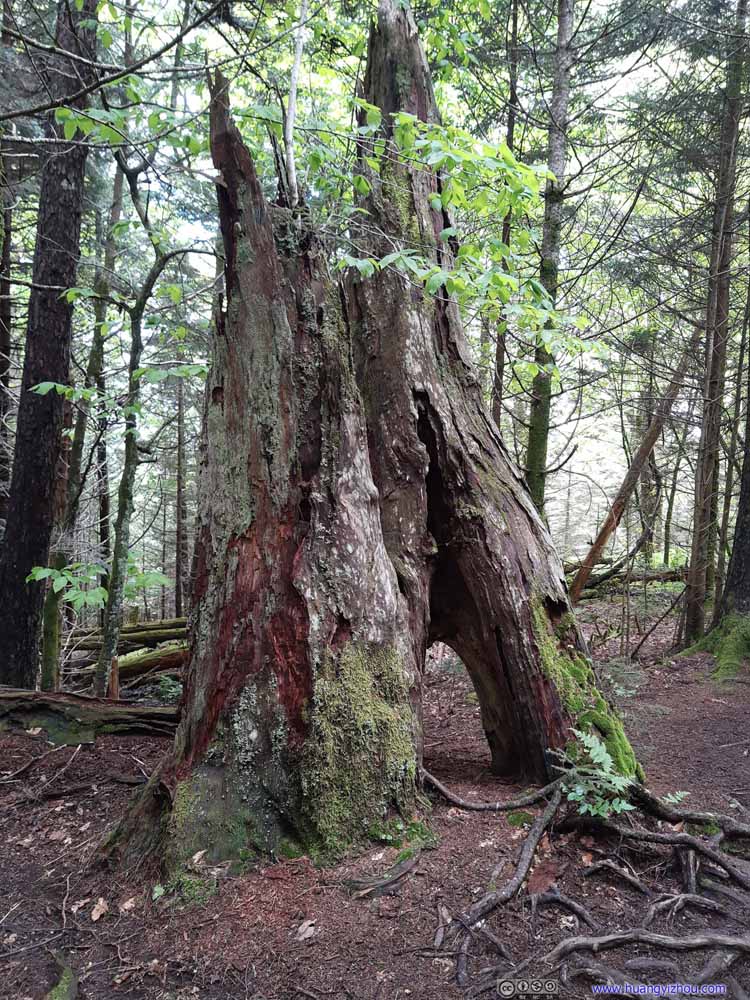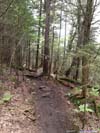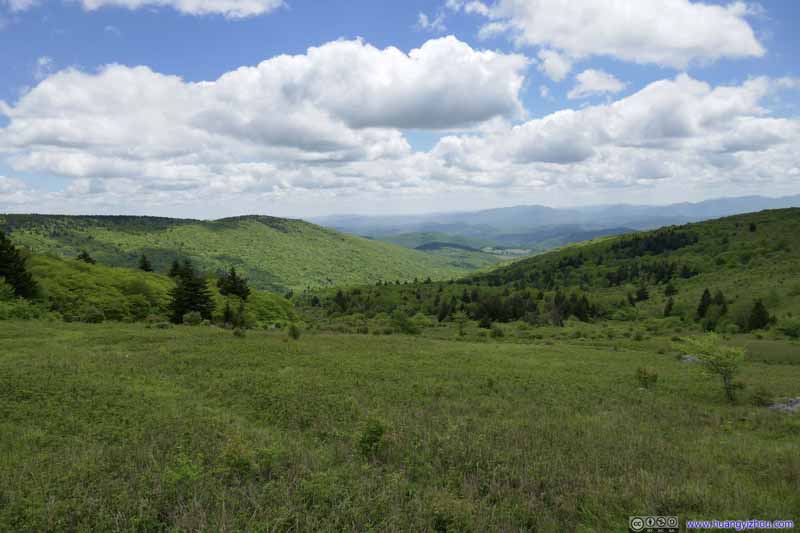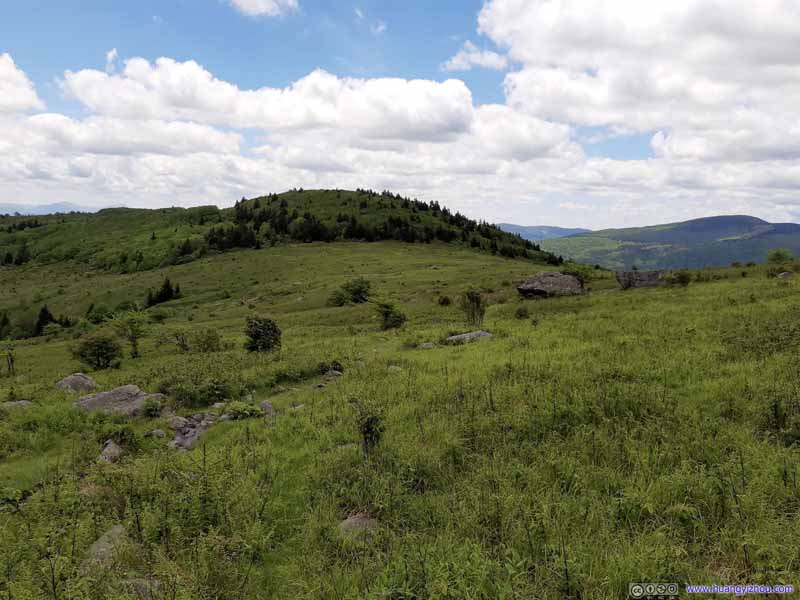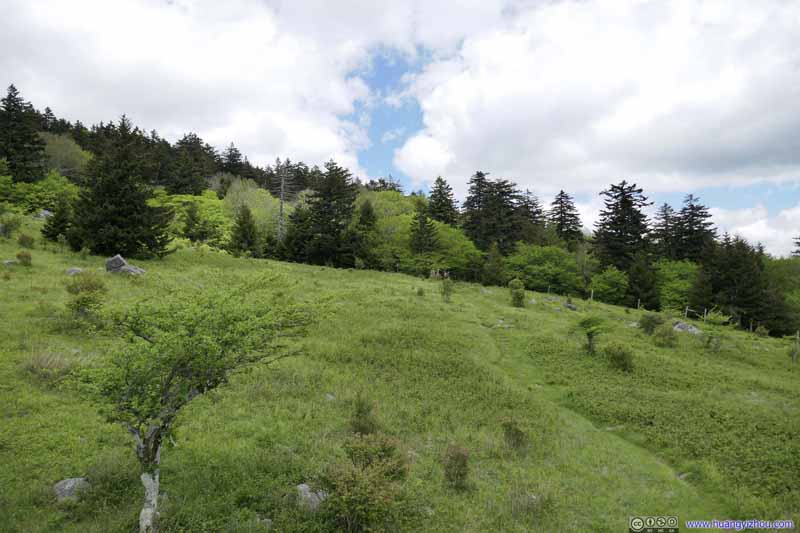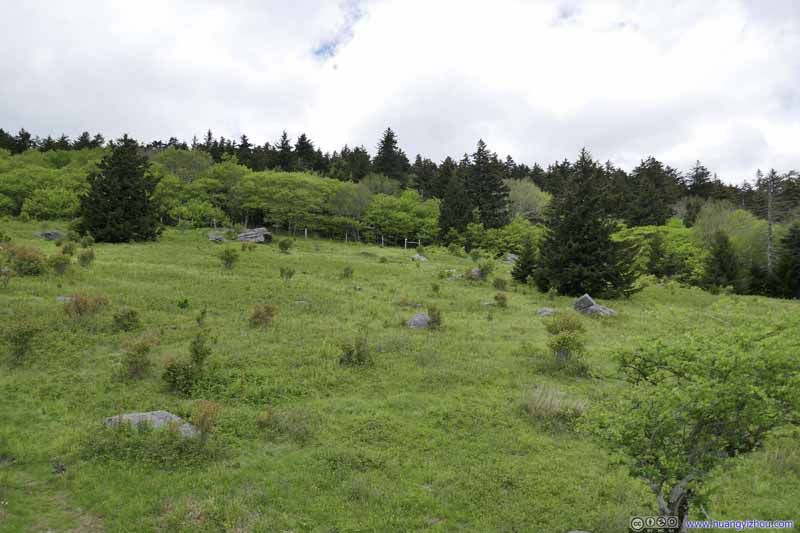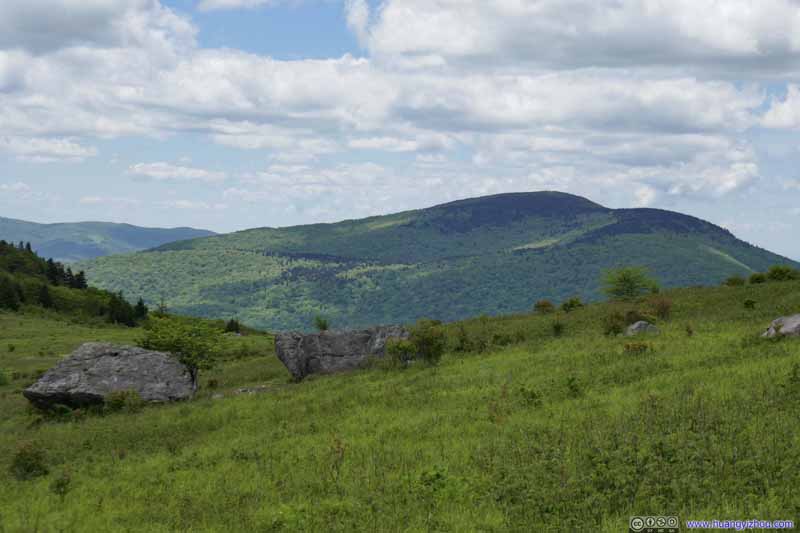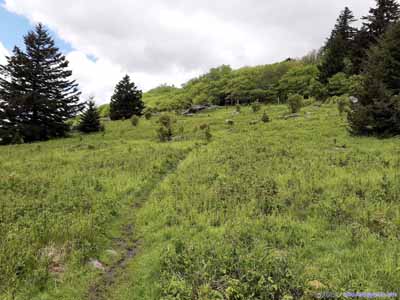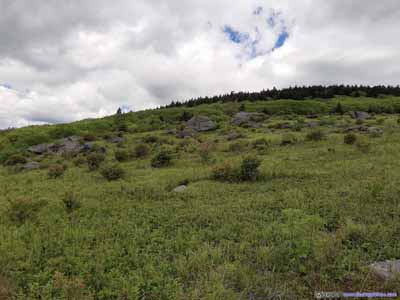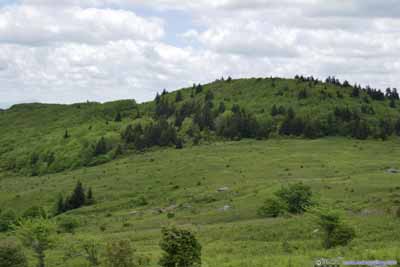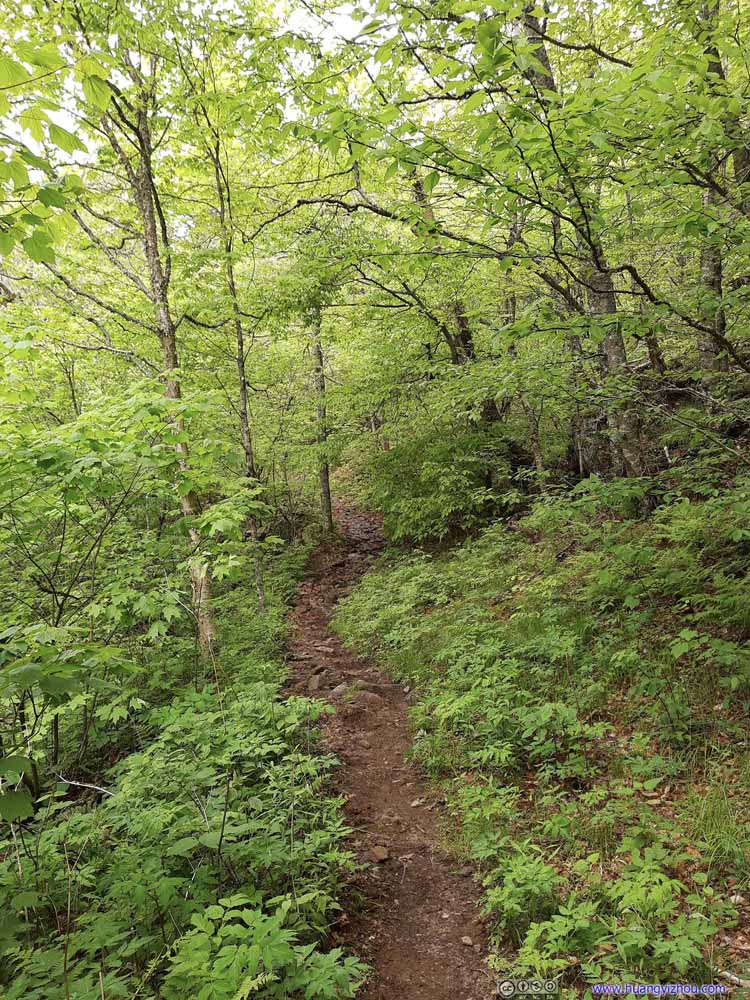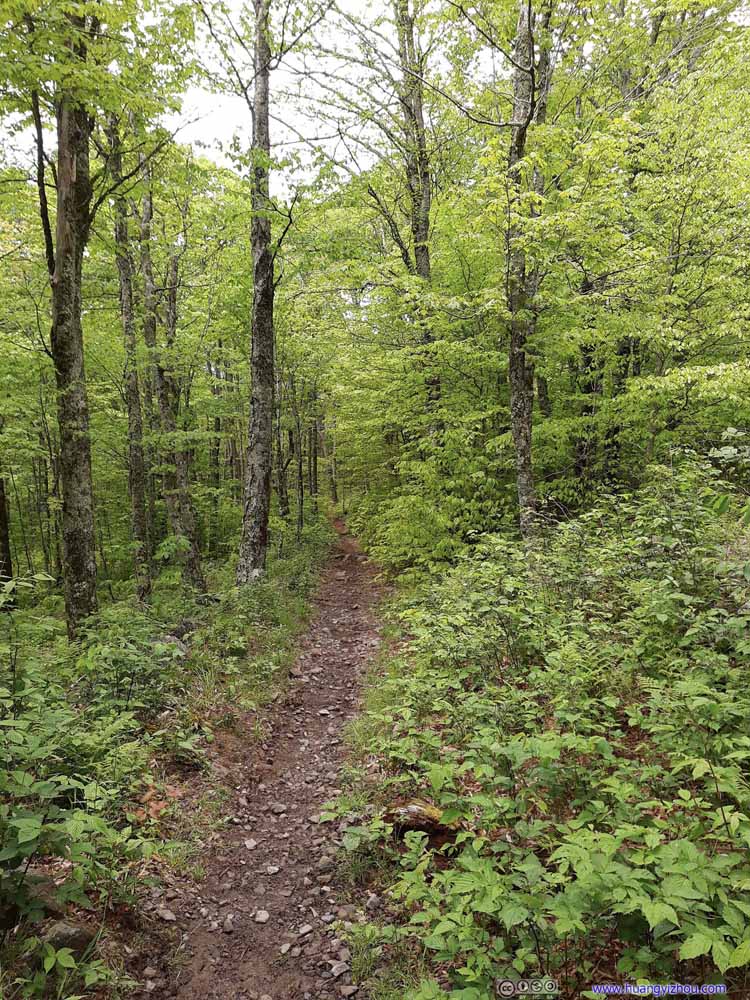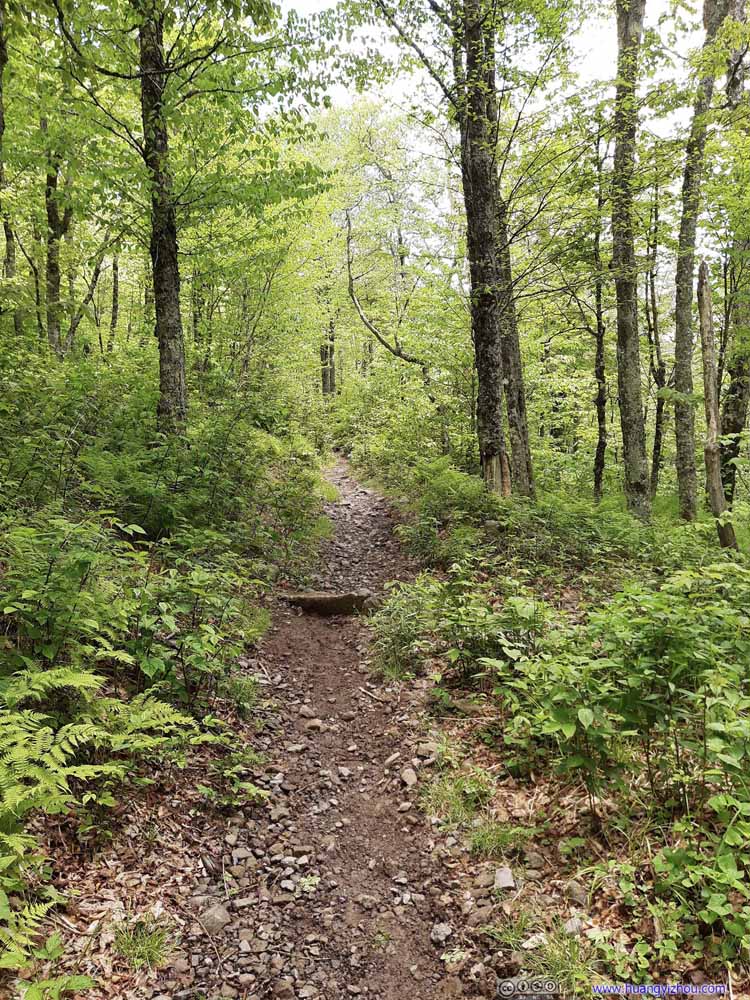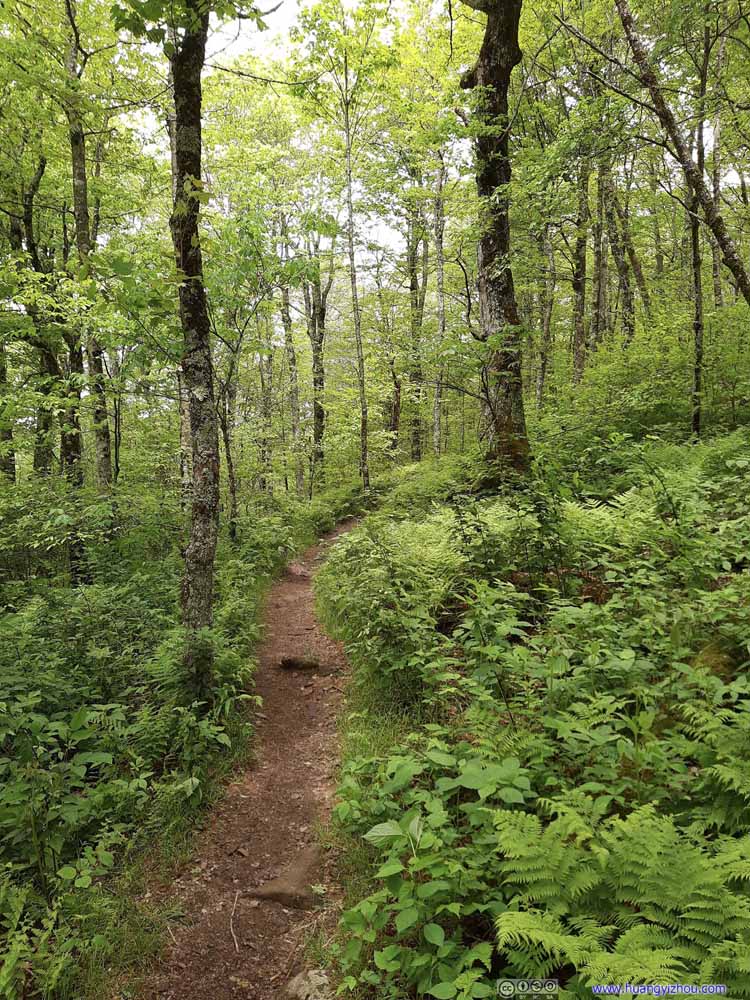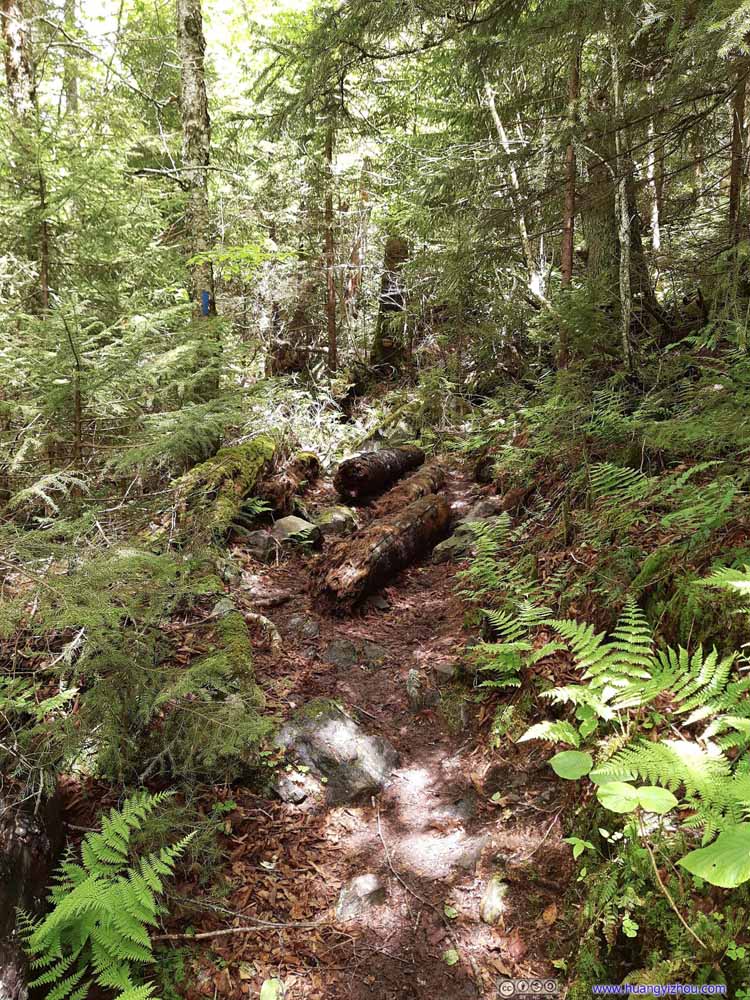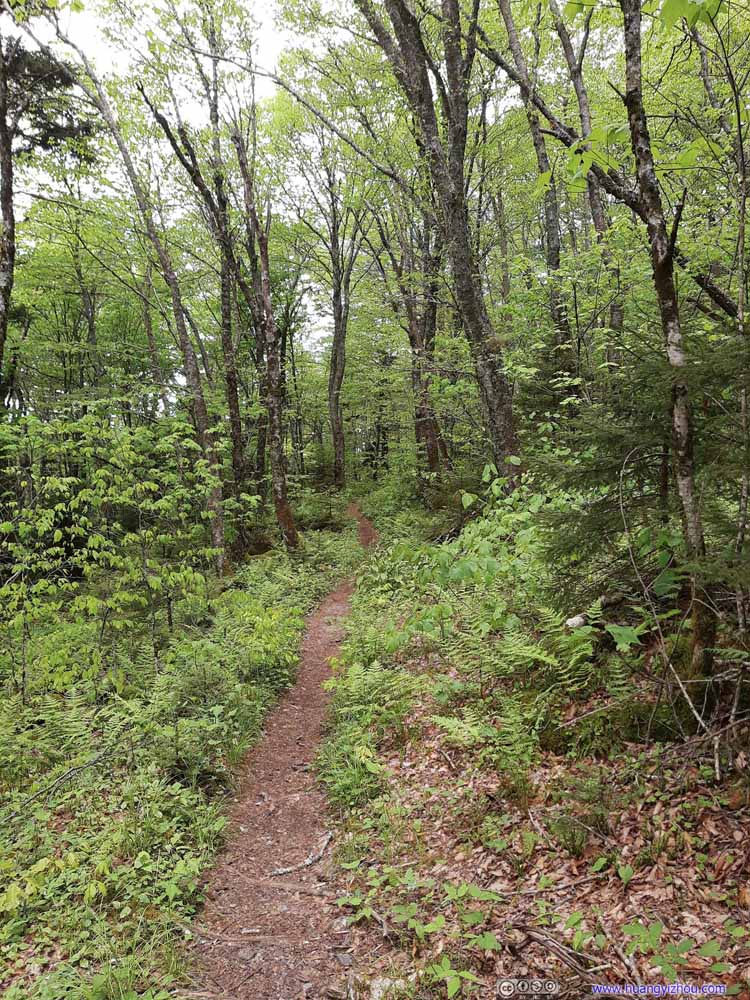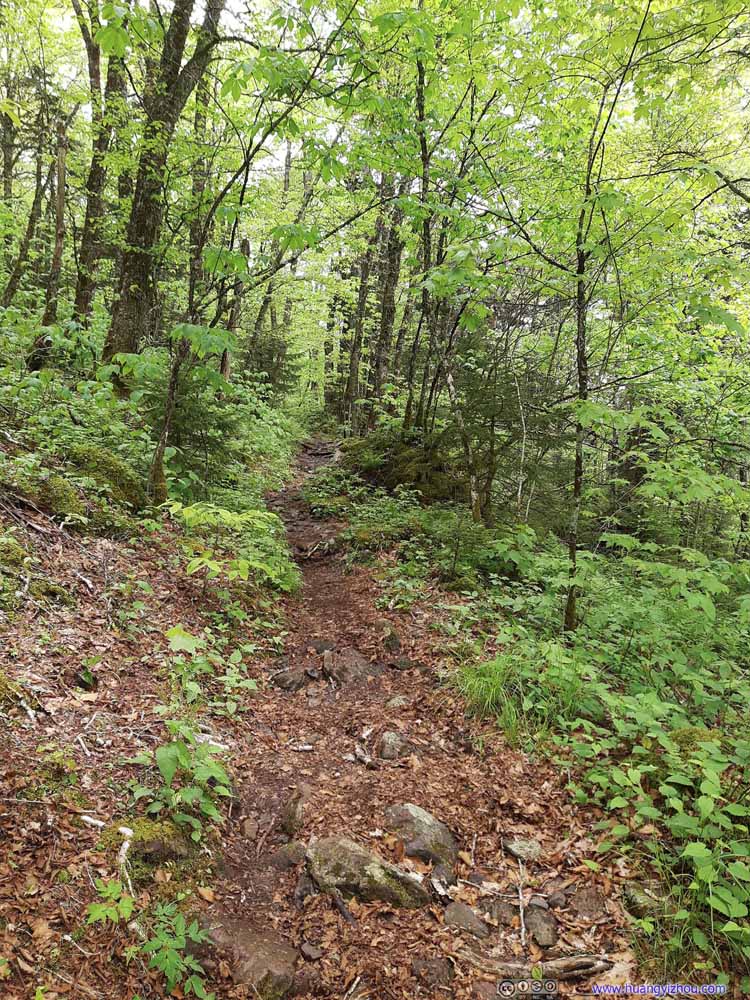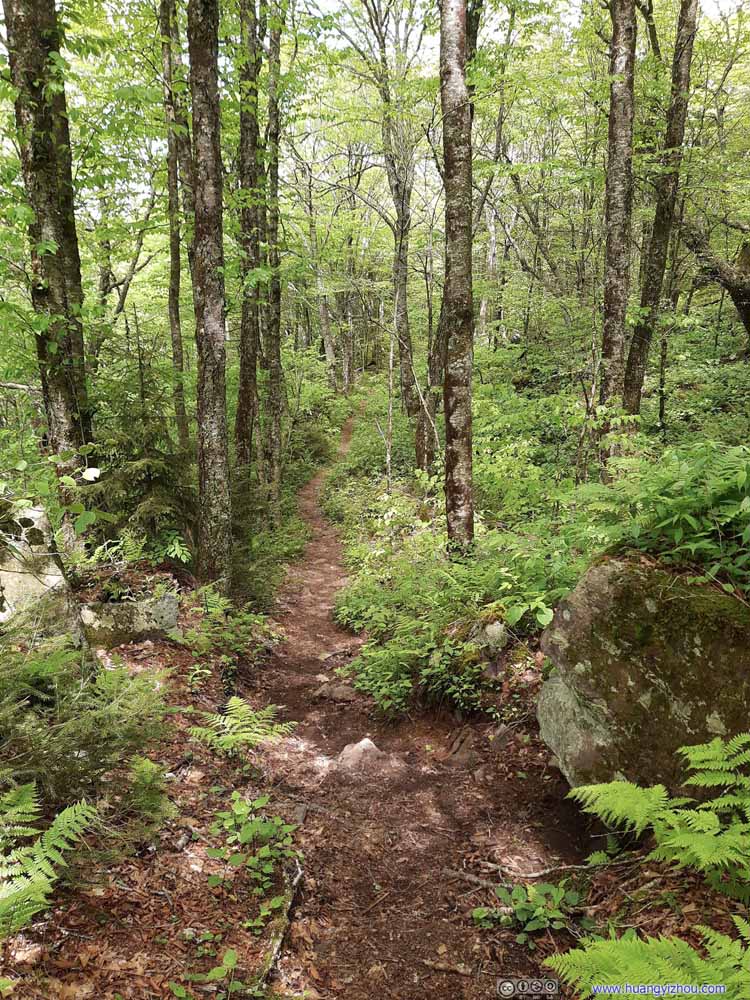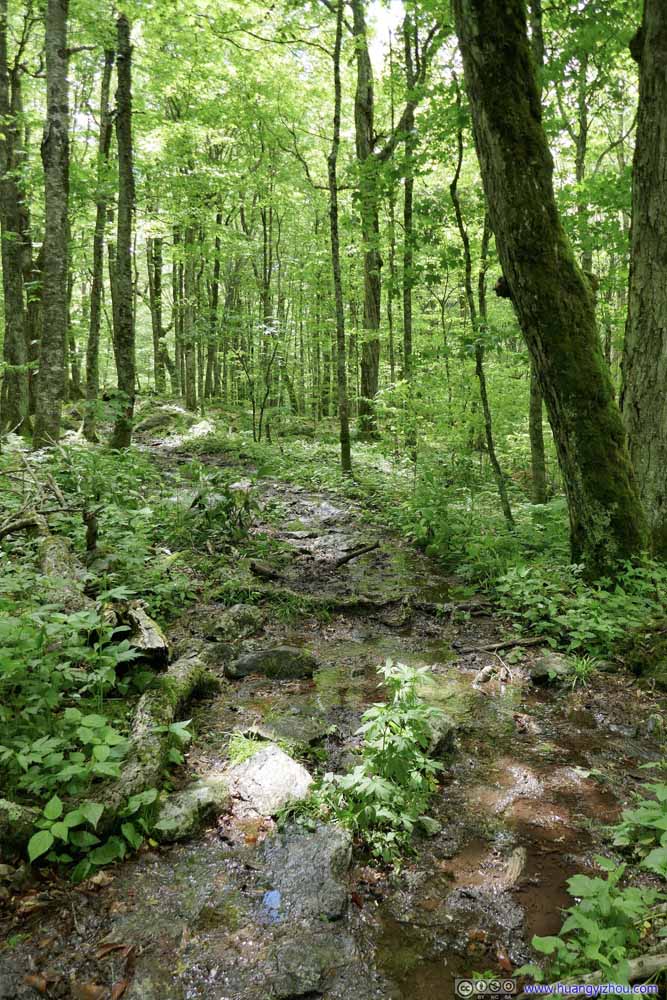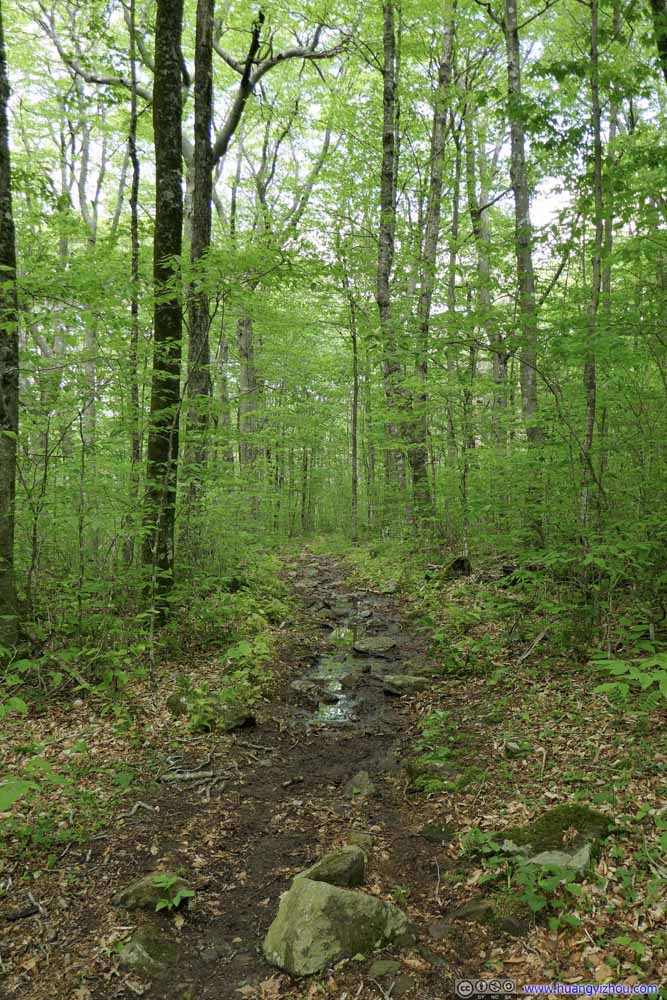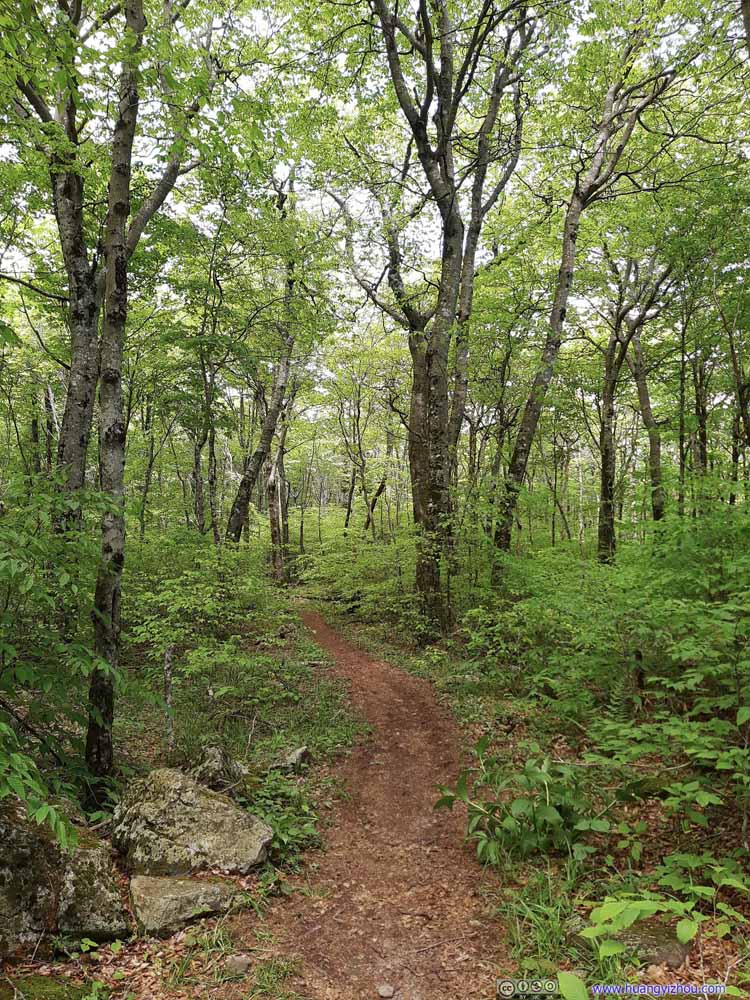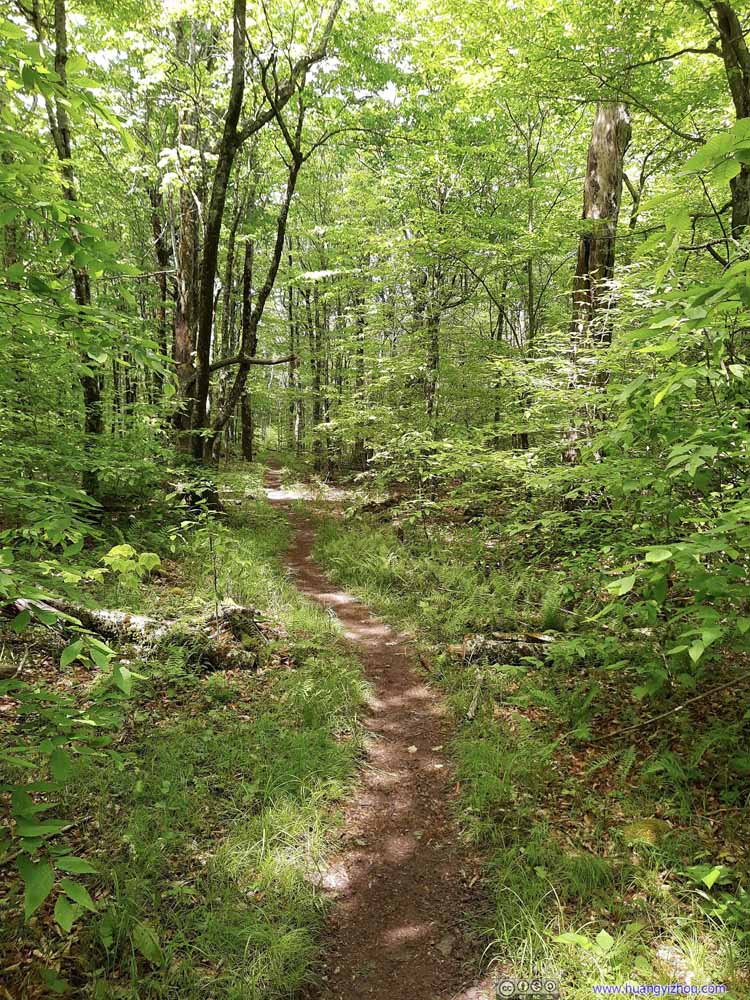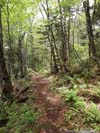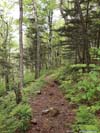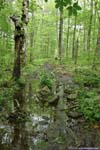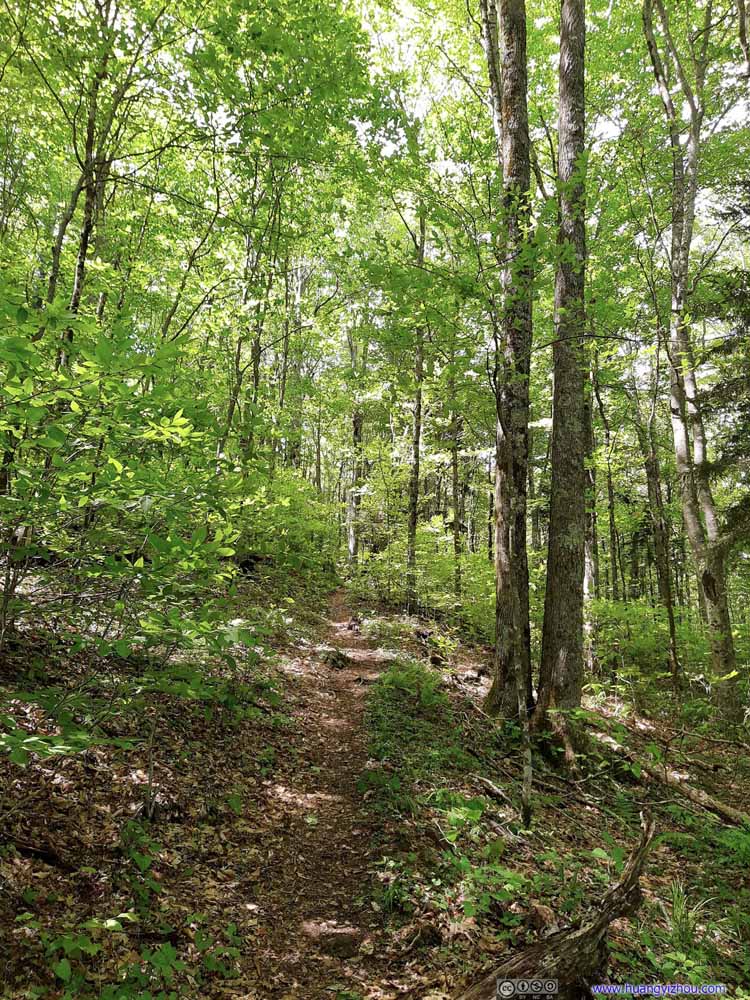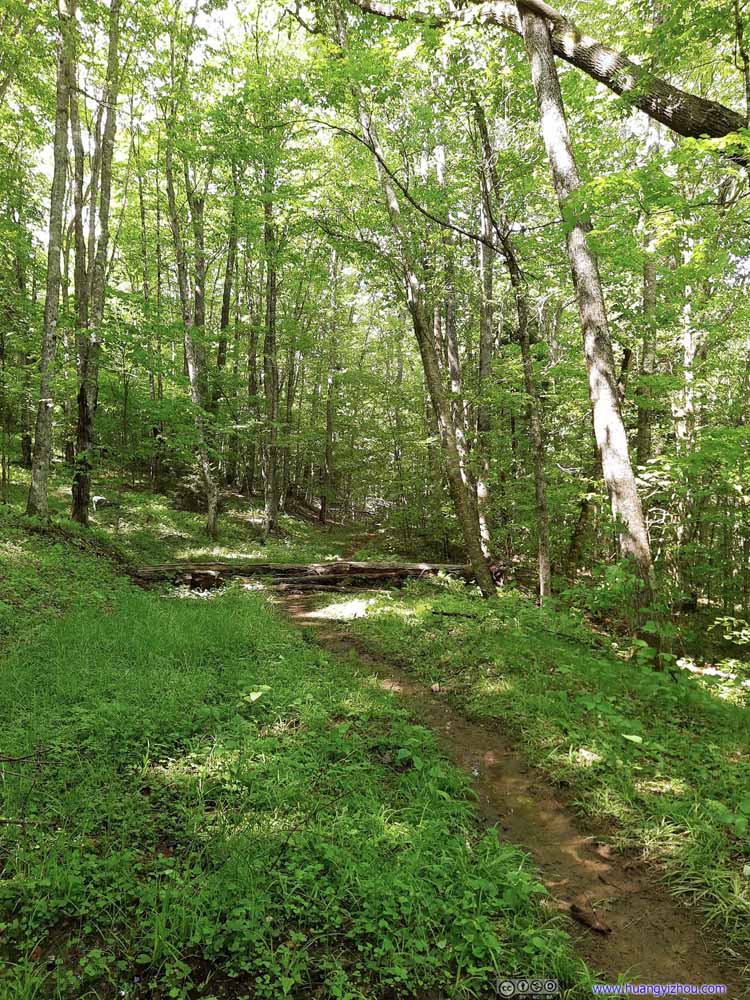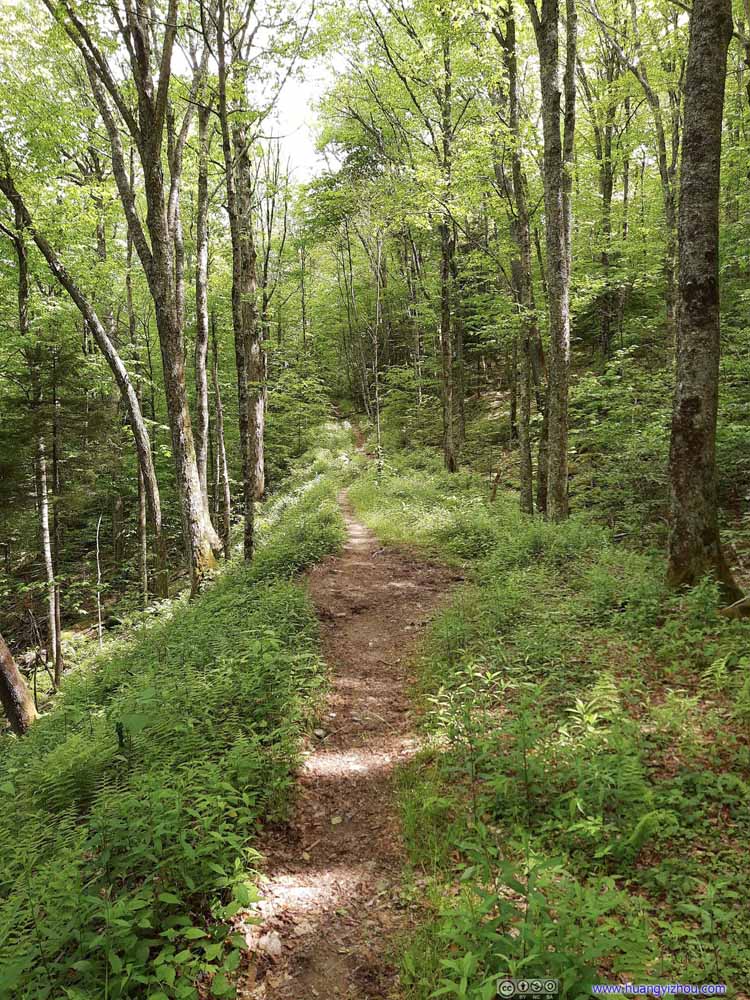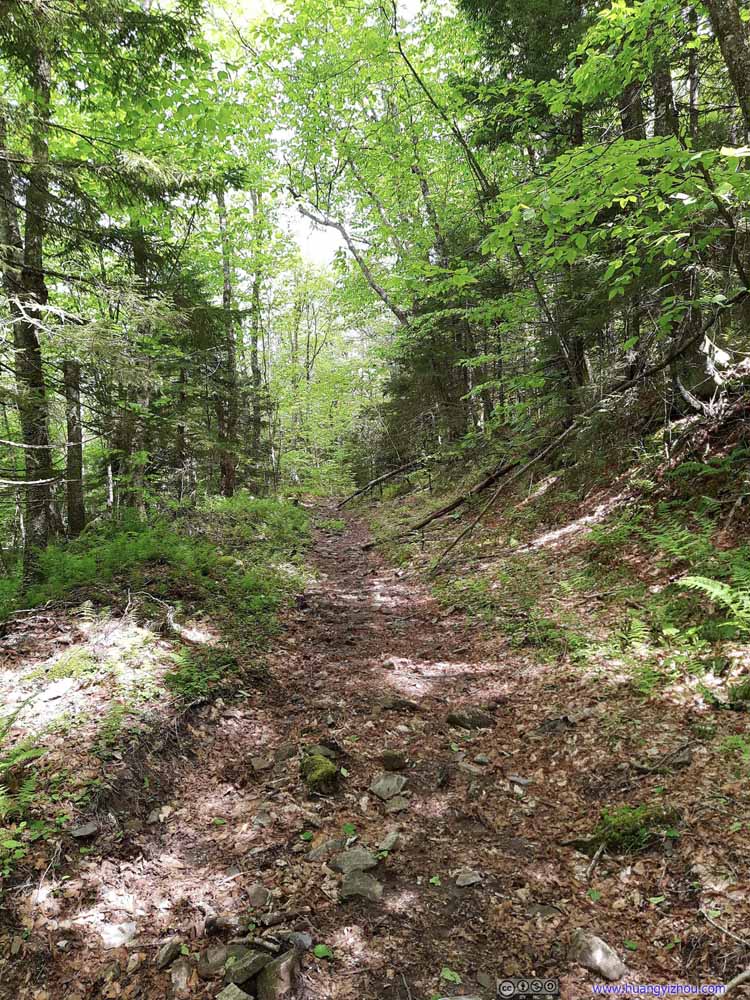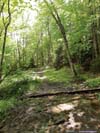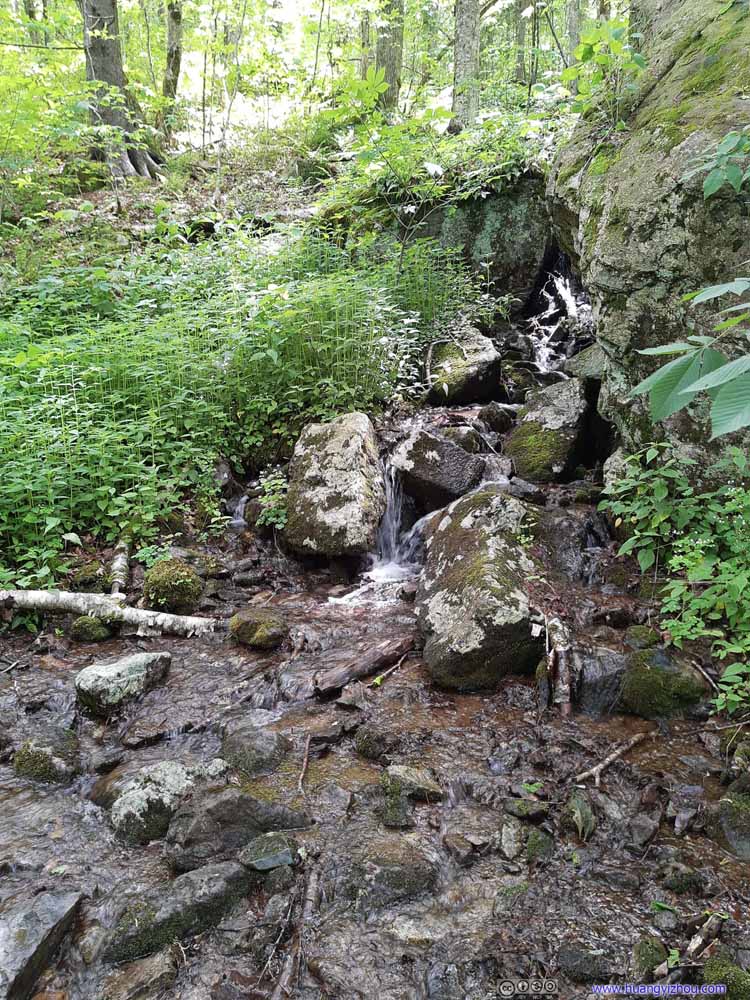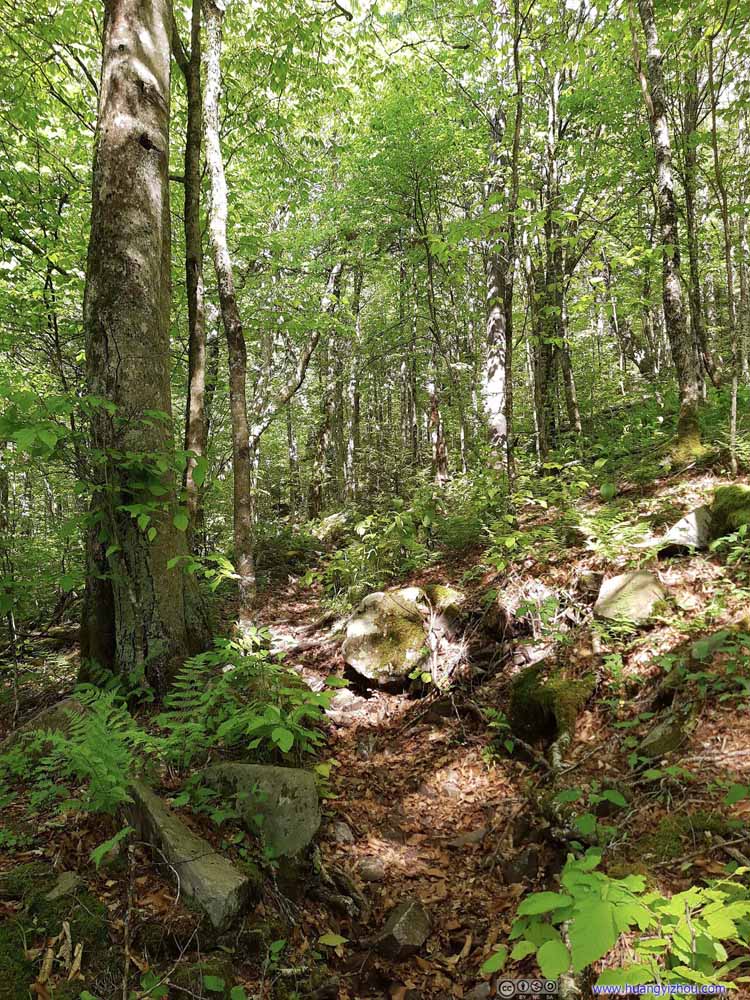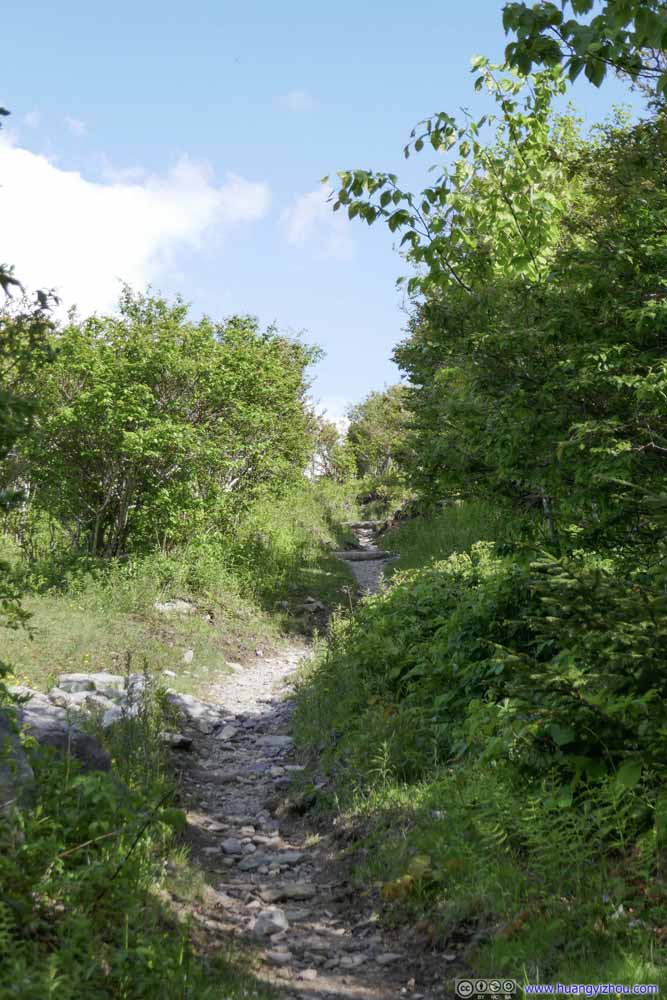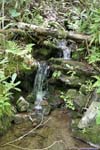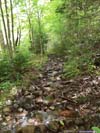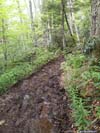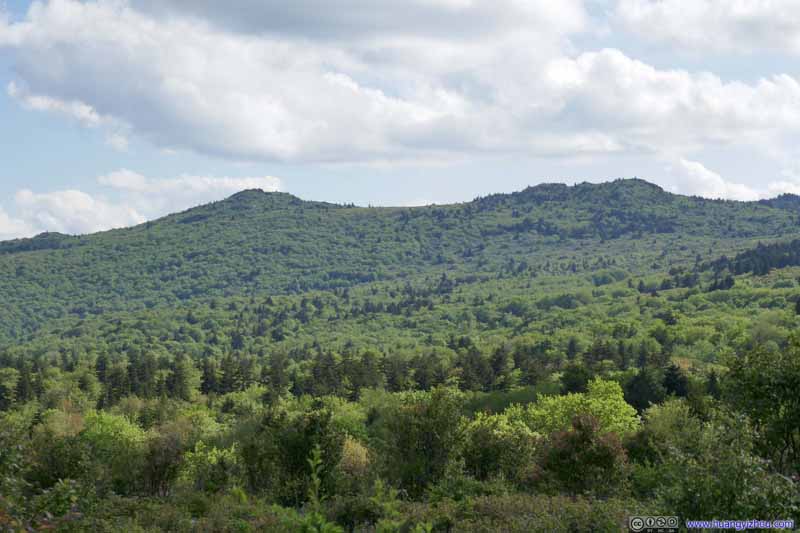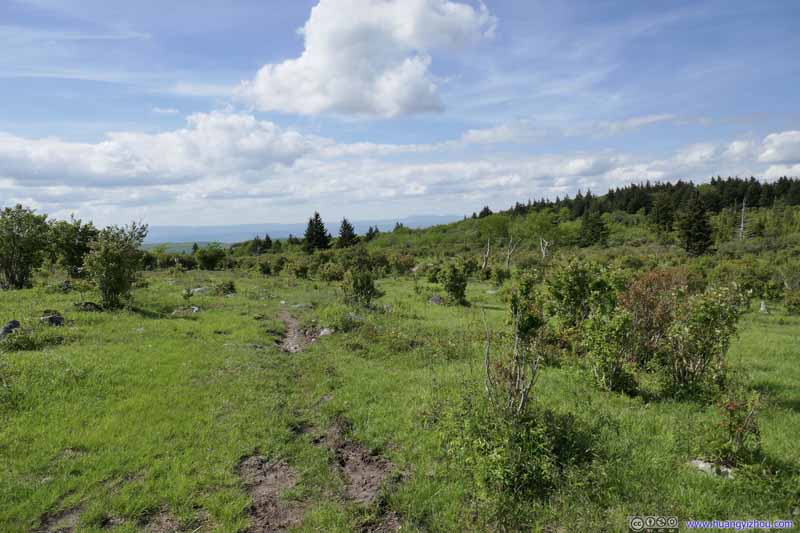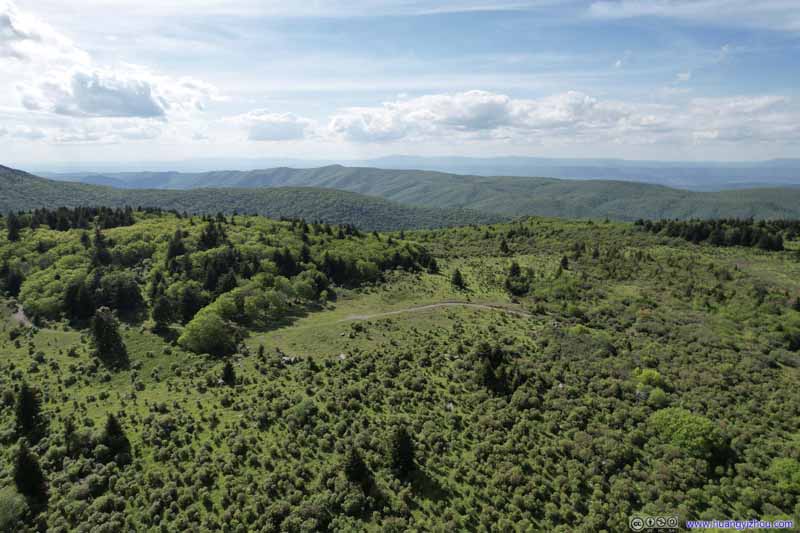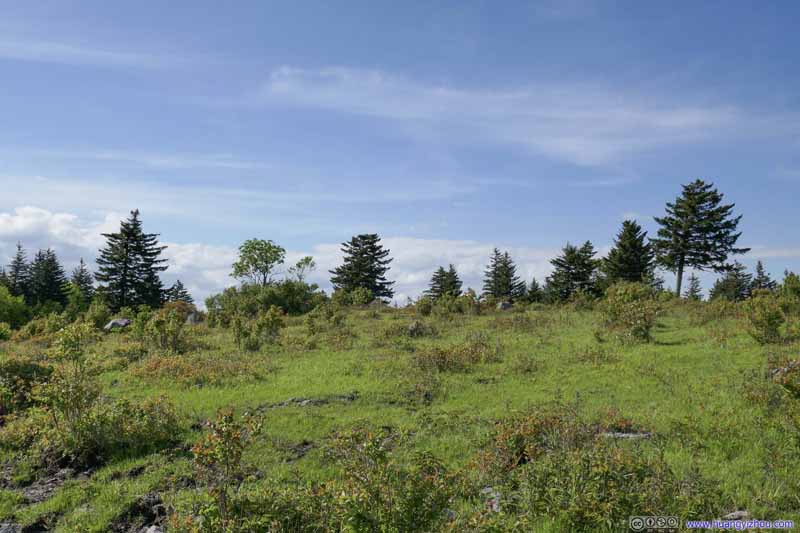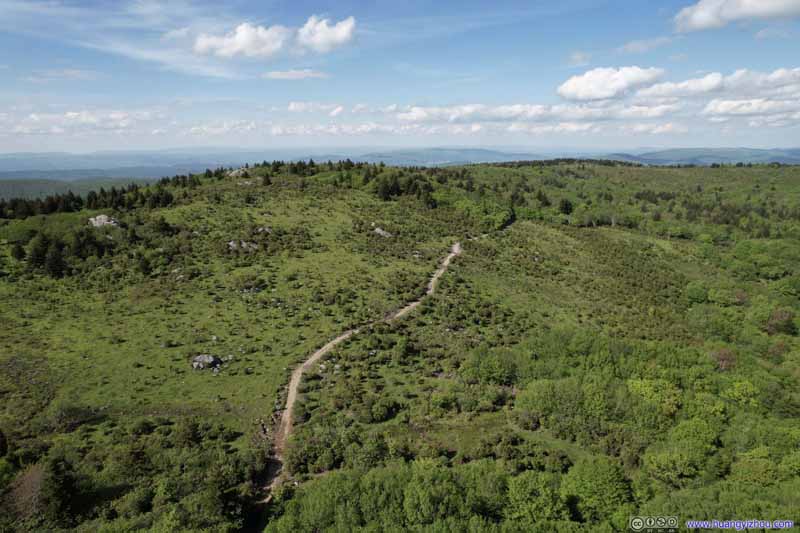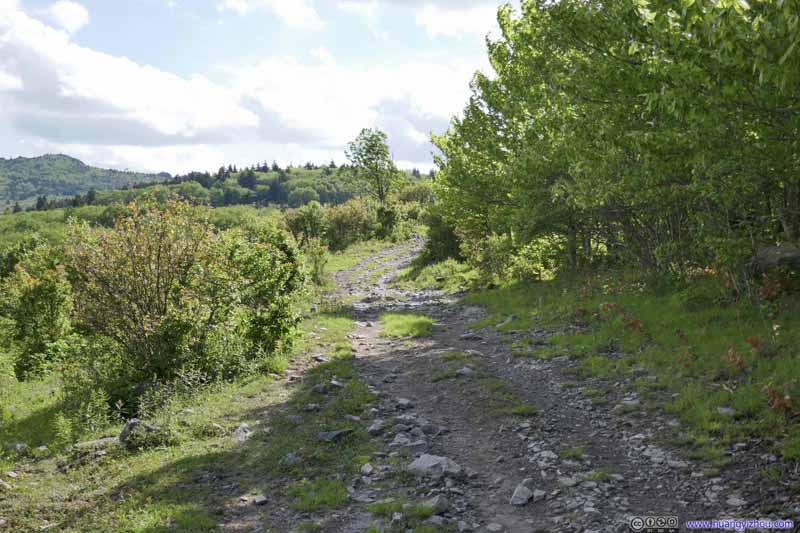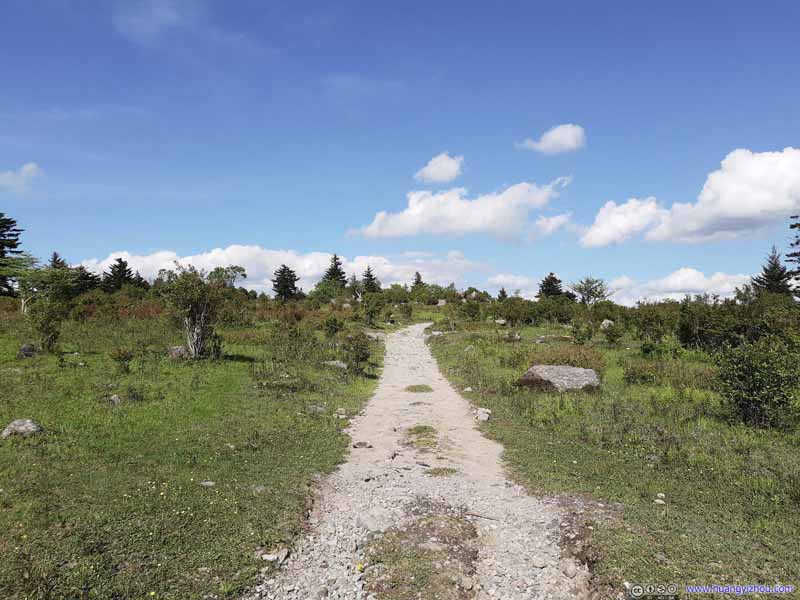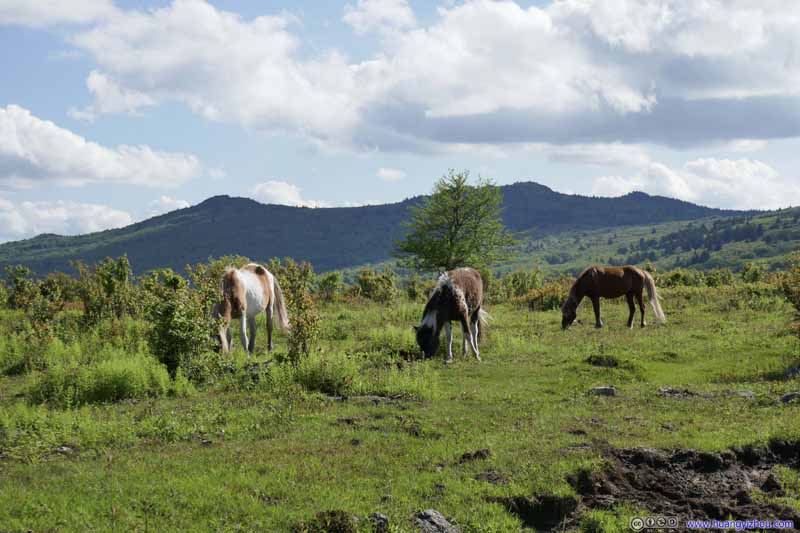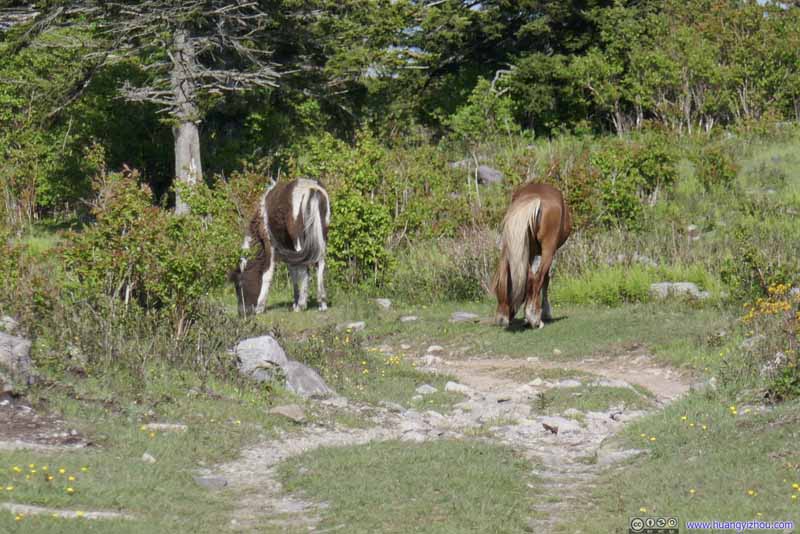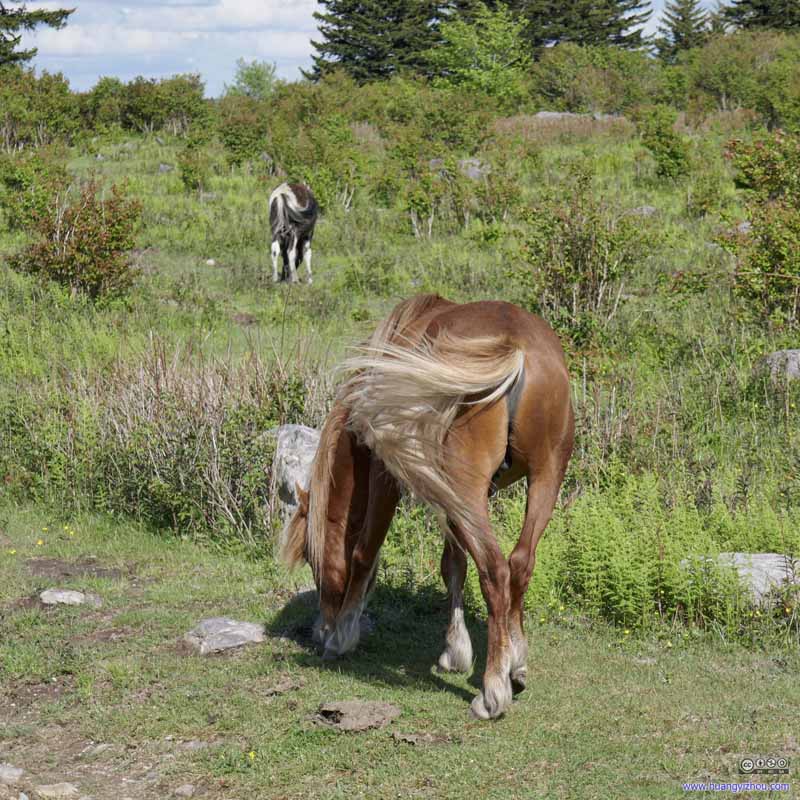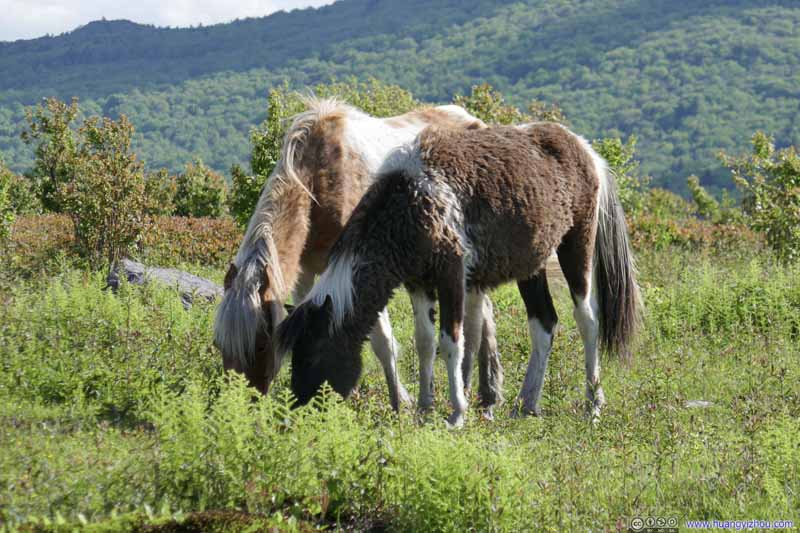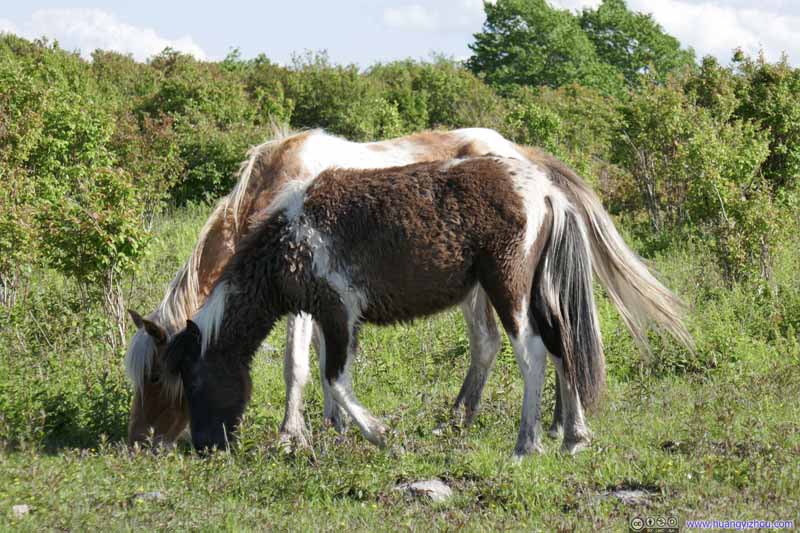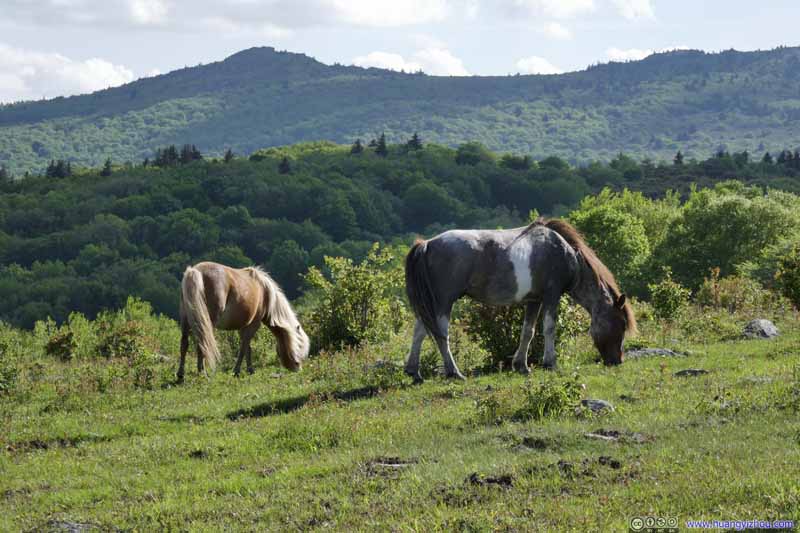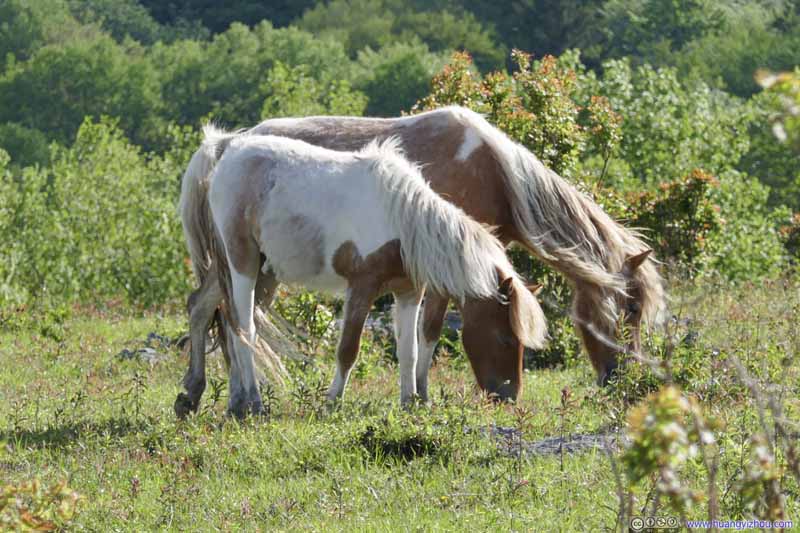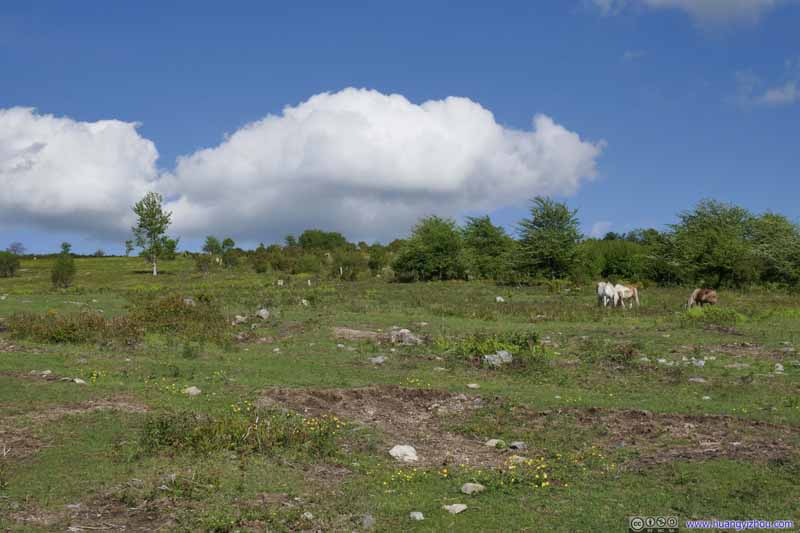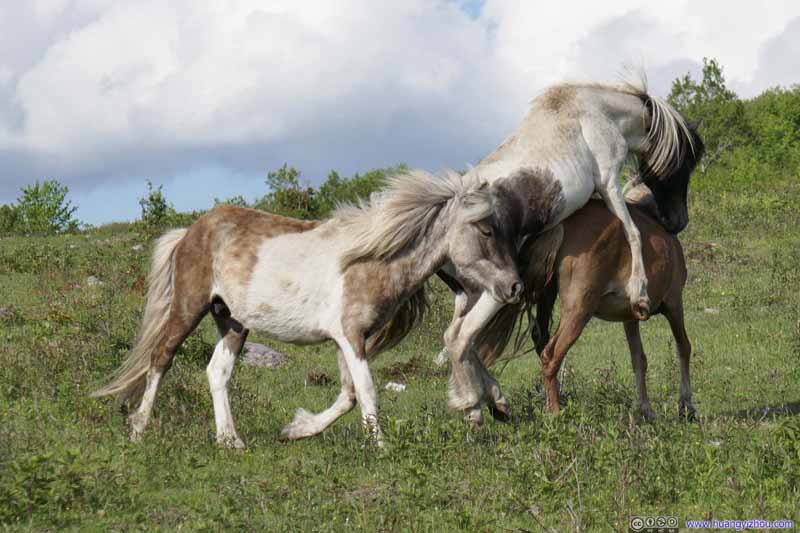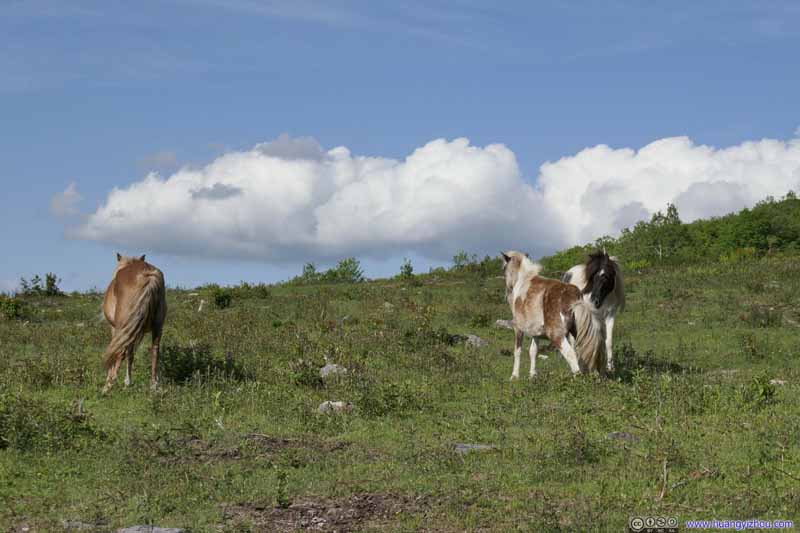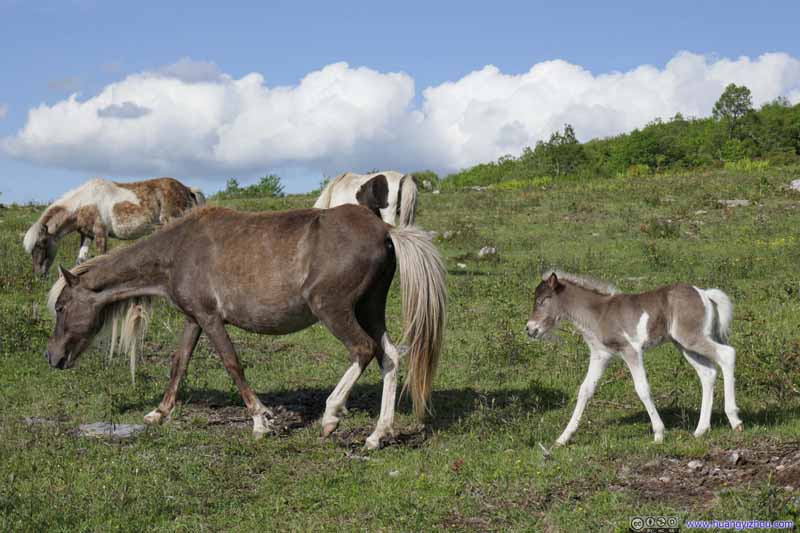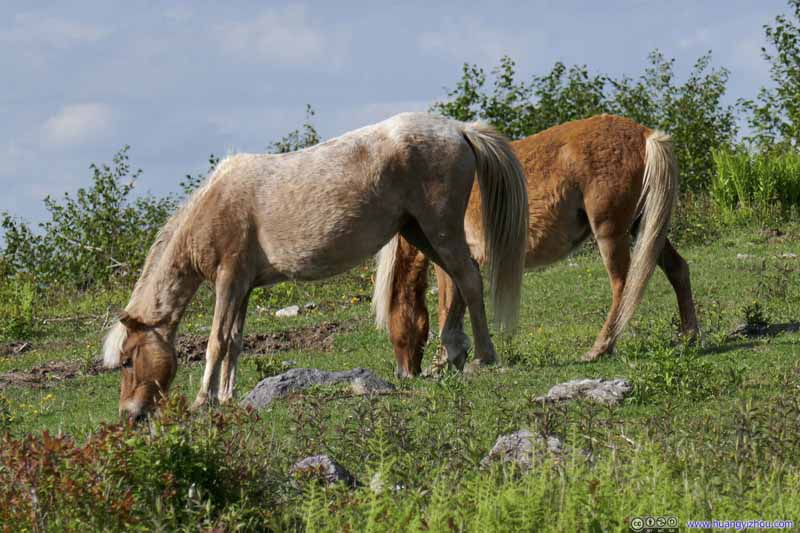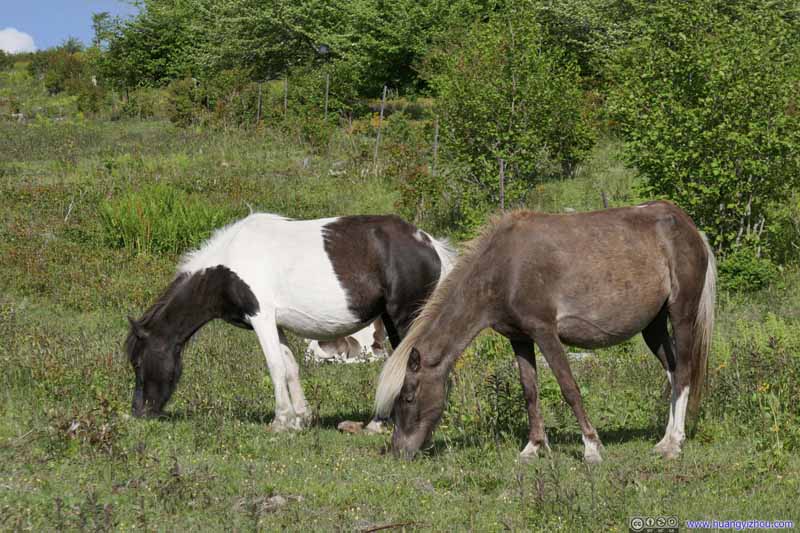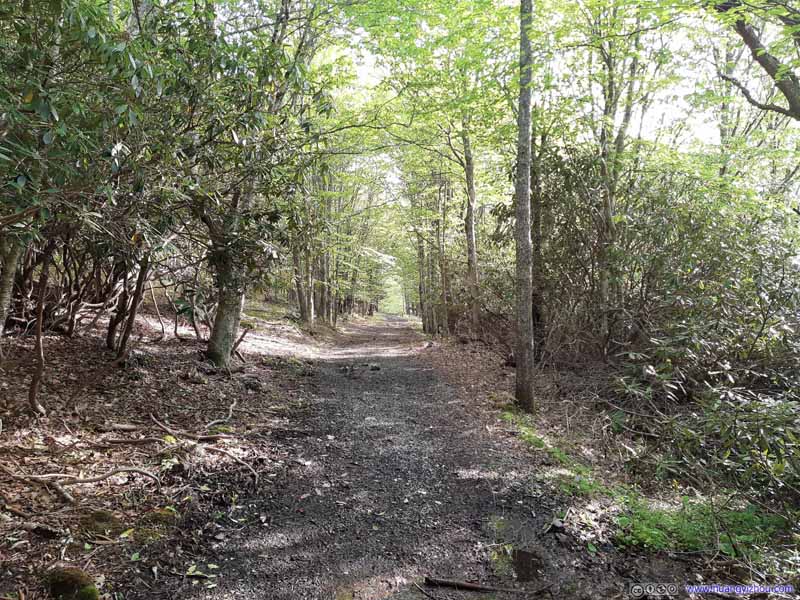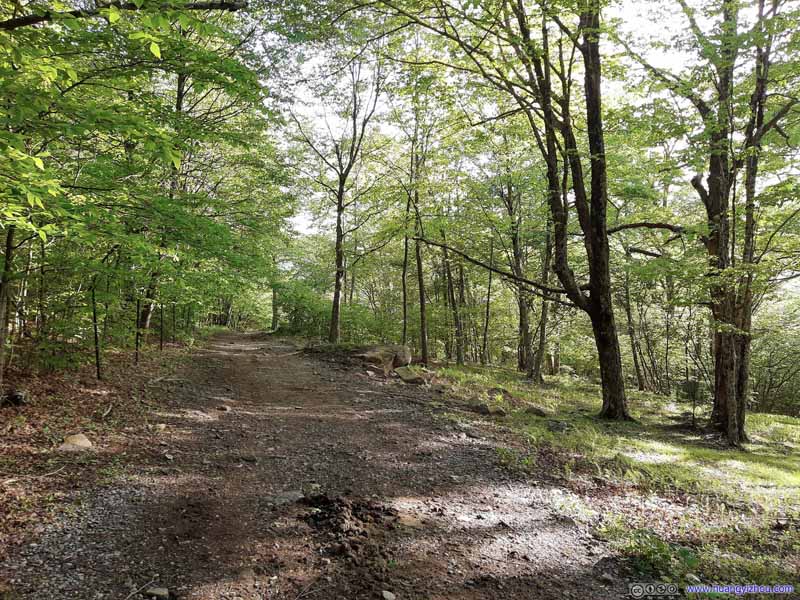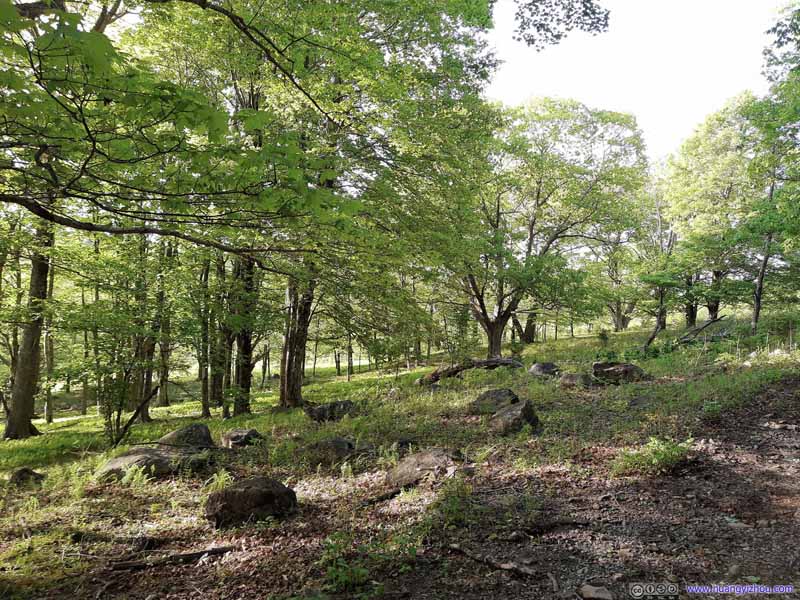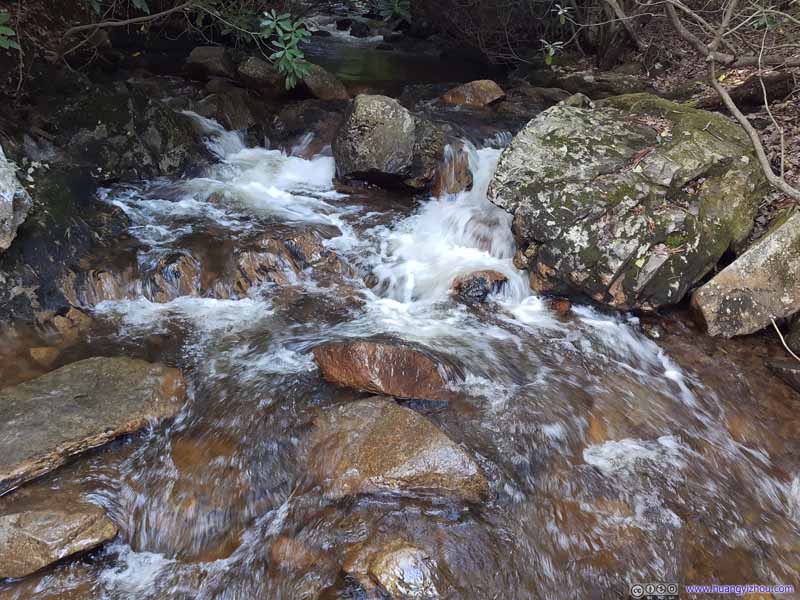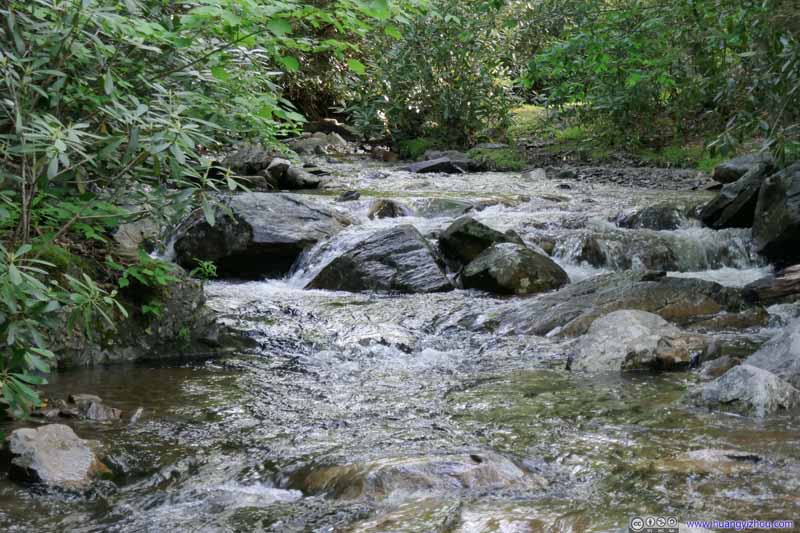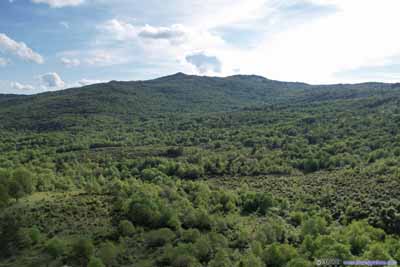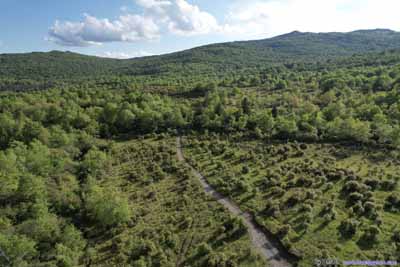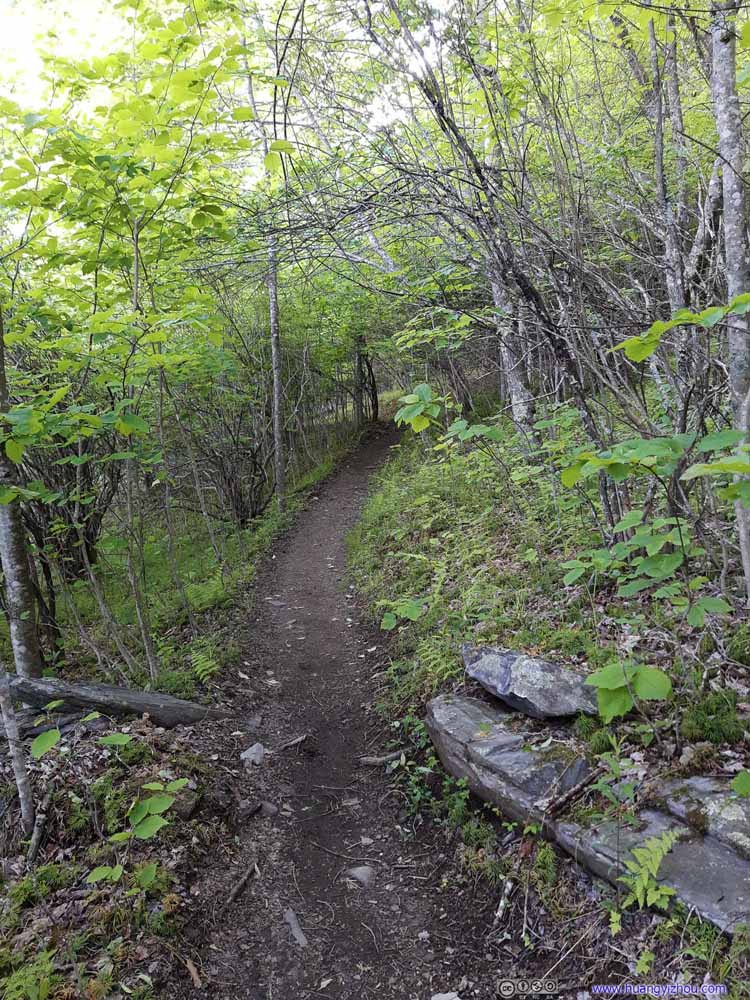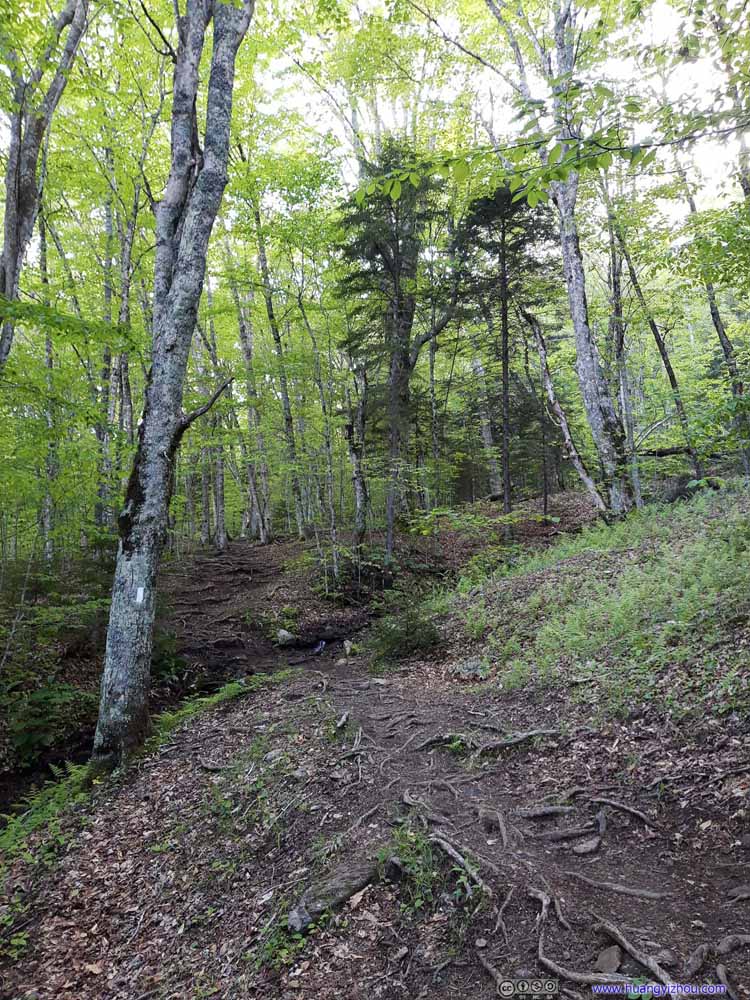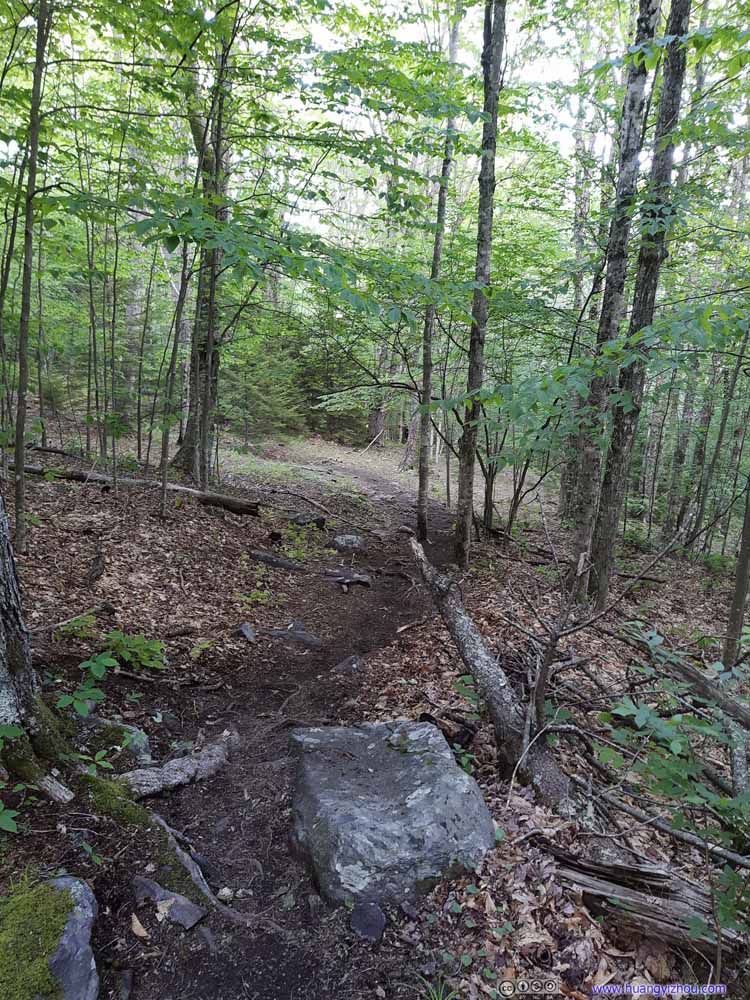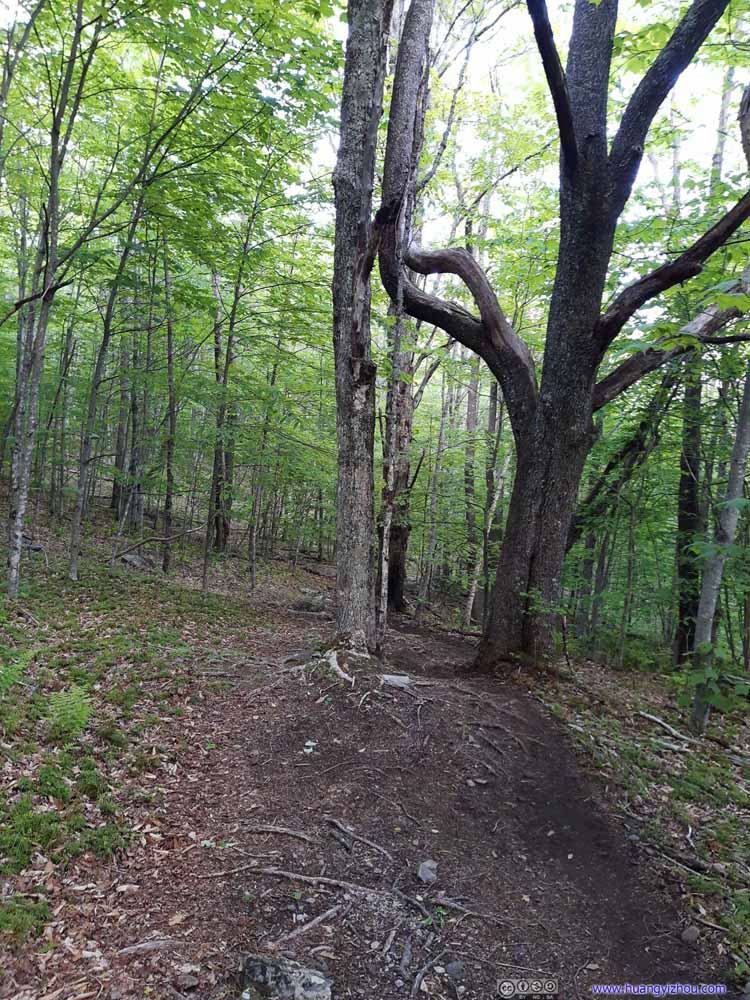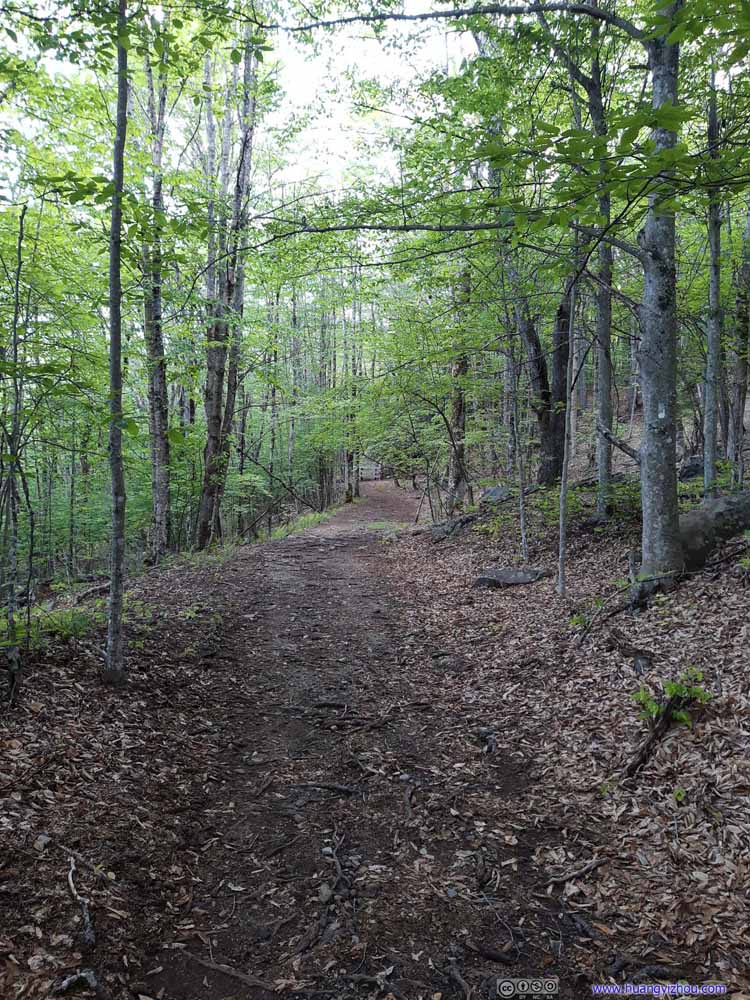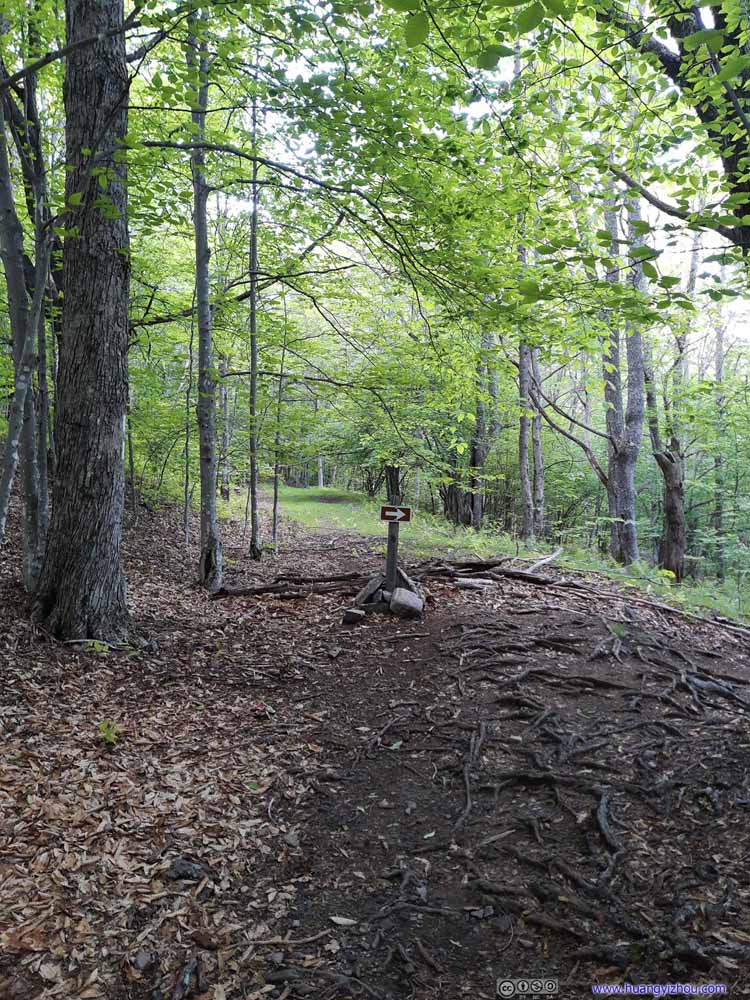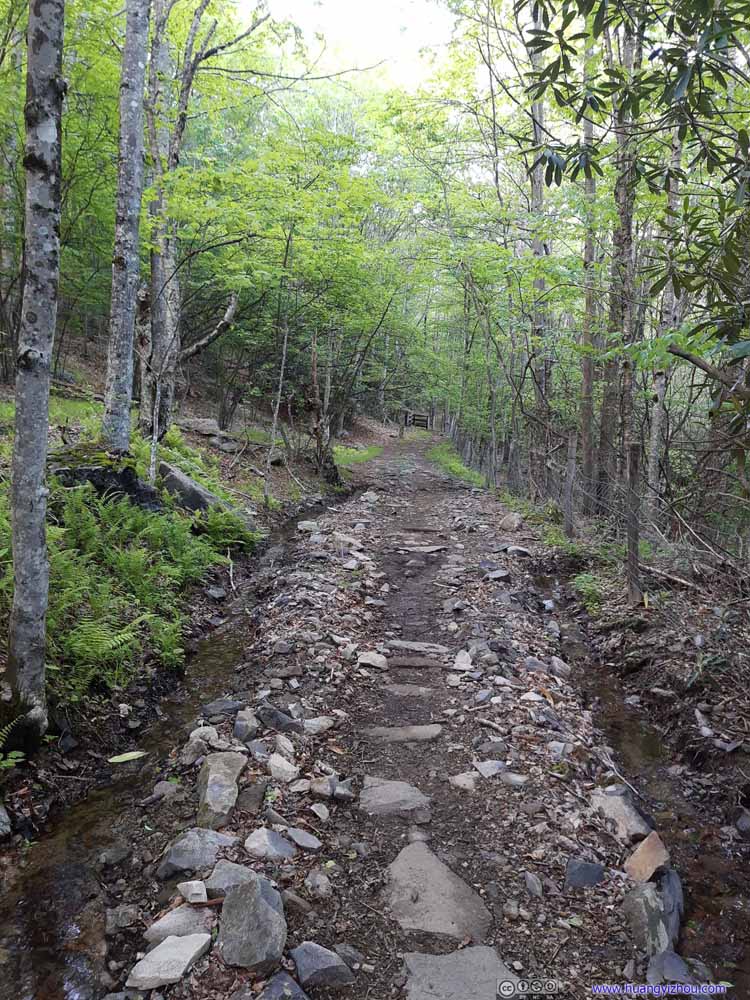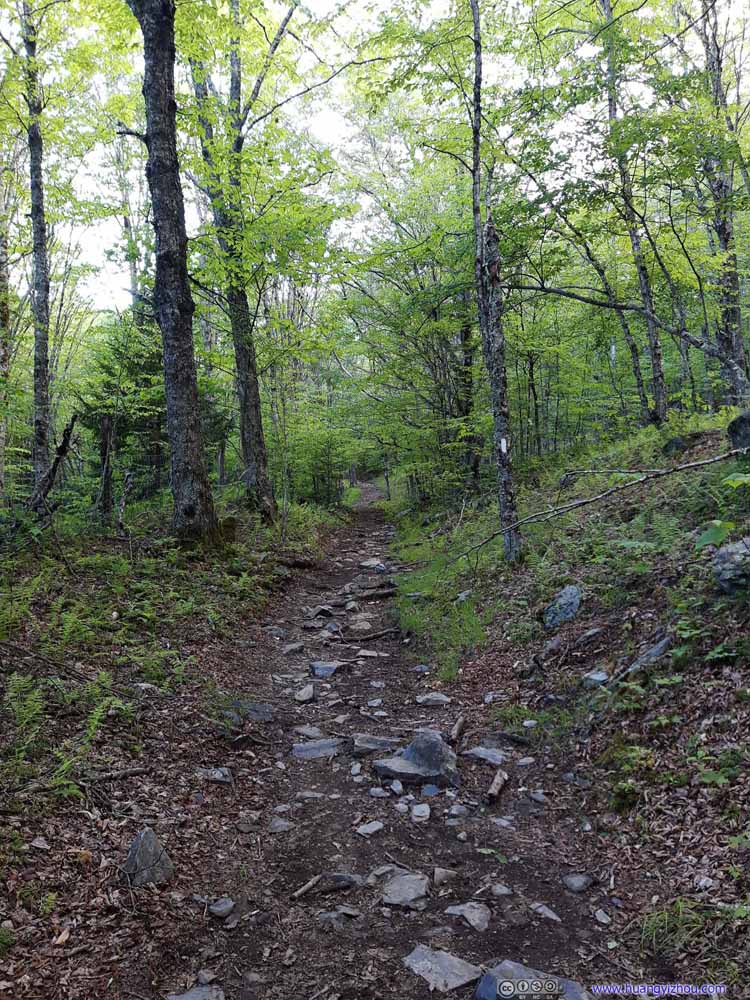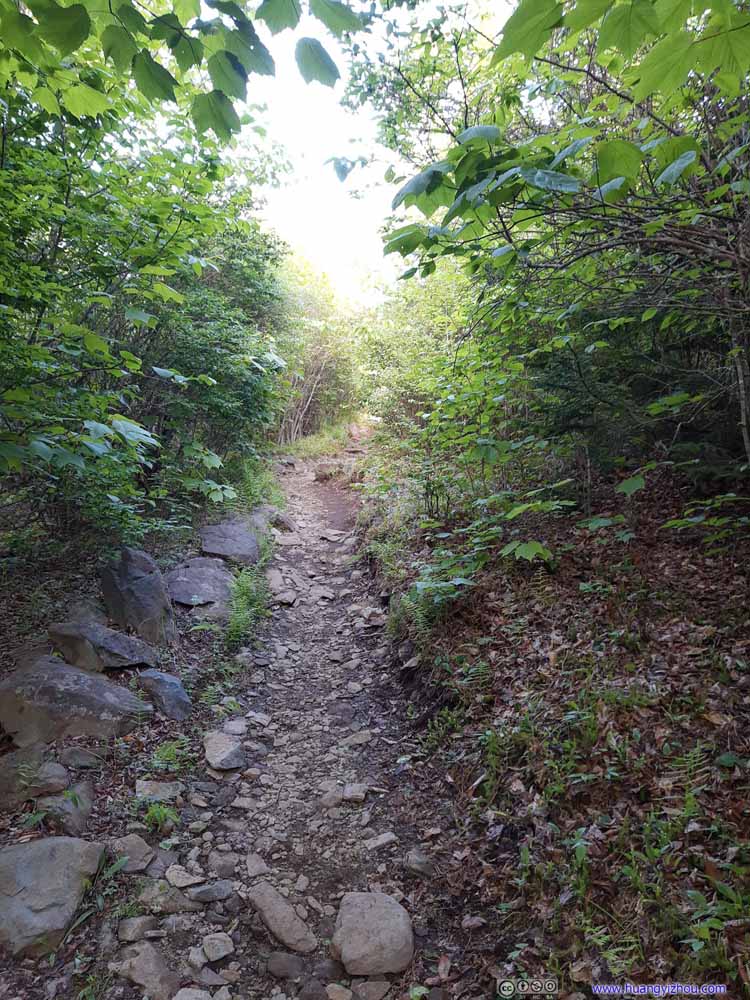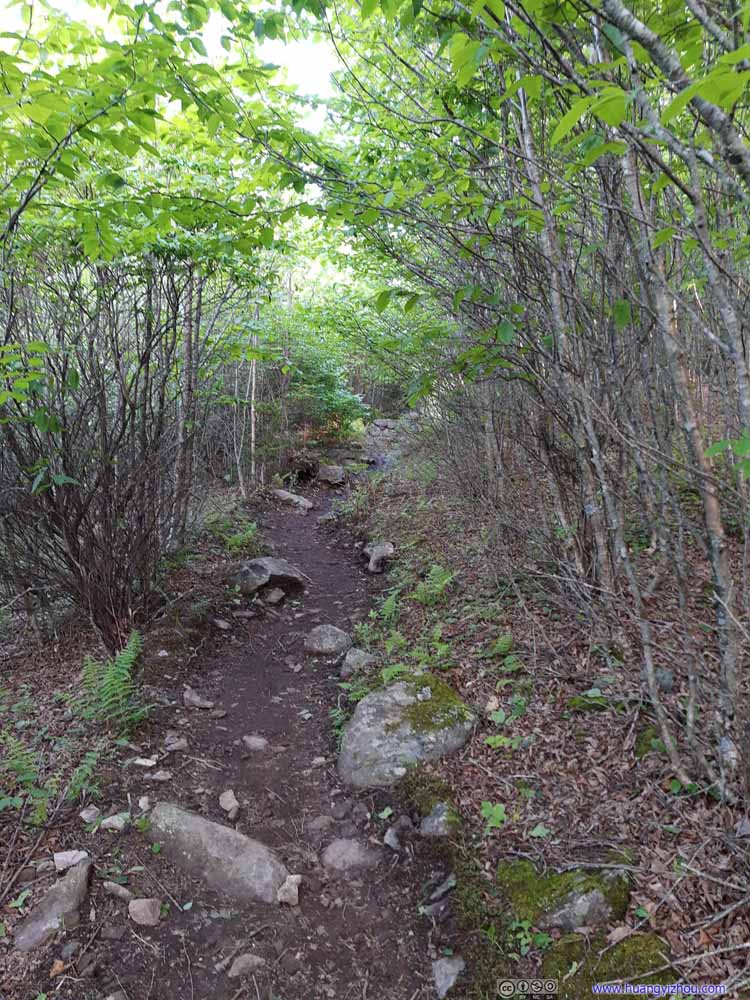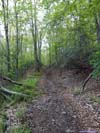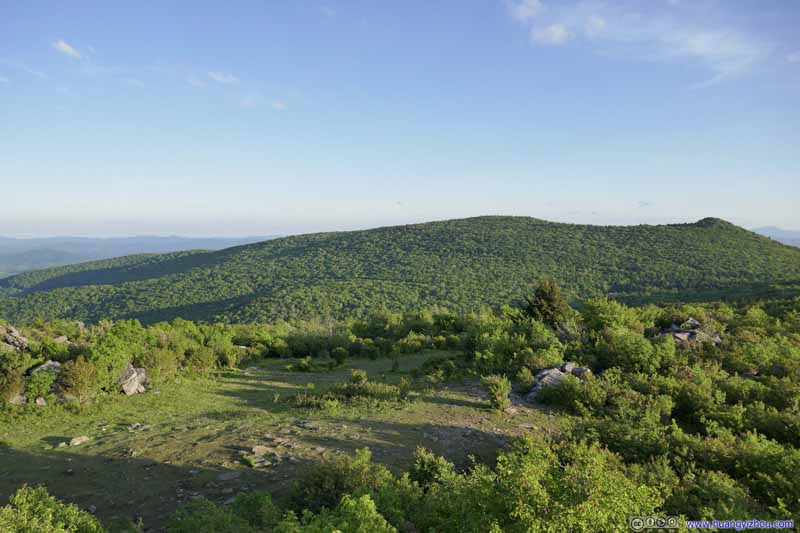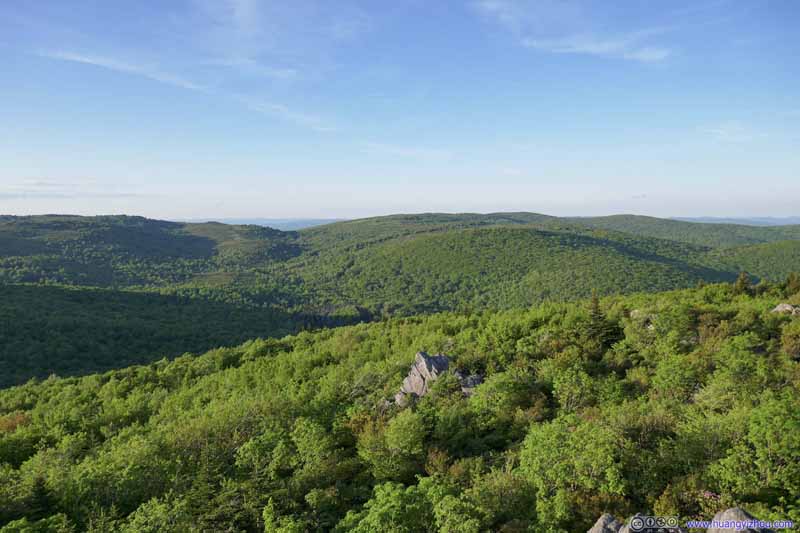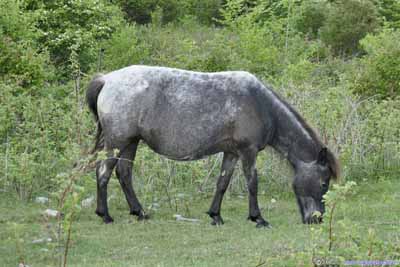Updated on July 17, 2022
Day 3 of May 2022 Virginia Trip, Grayson Highlands
The third day of my 2022 Memorial Day weekend trip. I would be doing a long day hike in Virginia’s Grayson Highlands State Park and the nearby Jefferson National Forest, featuring Mount Rogers as Virginia’s highest elevation point, some fun on the rocks along Wilburn Ridge, and a combination of forests and open meadows which were not a common sight in Virginia. Unfortunately, just like the previous two days, I still had to battle with annoying mud for portions of the hike.
Morning Mist in Wytheville
Mount Rogers/Grayson Highlands were located in a rural area in southern Virginia, while most of the hotels in reasonable proximity were along the I81 corridor. For my visit, I picked one in the city of Wytheville, which was just over an hour from the Grayson Highlands State Park.
My hotel was on a small hill overlooking the city. As I woke up on this Sunday, I was thrilled to find most of the city was veiled behind a layer of morning mist, looking mystically charming. So before I set off for Grayson Highlands State Park, I launched my drone for an aerial tour.
Click here to display photos of Wytheville in mist.
And here’s a video:
Grayson Highlands Long Day Hike
Apart from providing the easiest access to Mount Rogers (which, like most of my day’s hike, was actually located in the nearby Jefferson National Forest), the highest elevation point of Virginia, Grayson Highlands State Park was famous for its “wild” ponies that roamed its surrounding land. In the 19th century, extensive logging operations created patches of meadows that were used for cattle ranching in the early 20th century. After cattle ranching ceased with the creation of the state park, ponies were manually introduced to the area in 1975 to keep the meadow landscape trimmed. And my aesthetics certainly appreciated the meadow landscape as otherwise I was a bit bored with the ubiquitous forests of Blue Ridge Mountains.
Except that their droppings were occasionally visible on the trail.
Grayson Highlands State Park opened at 8am in the morning. However, since I spent some time playing with my drone earlier, and with the mountain road of US58 being rather twisty and demanding, I only started my hike after 9am. It’s Memorial Day Sunday but the parking lot was far from full by the time I arrived.
Overview
Here is a map of my day’s hike, which I took in the clockwise direction:
- Between trailhead and Pine Mountain, there were many community trails in parallel so there’s no worry of getting lost. I took the Wilburn Ridge Trail (dark blue) which involved some rock scrambling, but it also provided the best views on top of a few rocky mounds.
- After Pine Mountain I turned left onto the Appalachian Trail (red). This section was in great condition, with occasional views of vast fields and meadows to the south. There was a spring water source at Thomas Knob Shelter.
- The spur to Mount Rogers Summit (green) was 1mi/1.6km roundtrip, in what looked like rainforests. It’s the highest elevation point in the state of Virginia, unfortunately, no views at the summit.
- The subsequent Appalachian Trail (purple) was starting to get wet. At some open field, I planned to continue on Appalachian (dashed yellow), but went onto Virginia Highland Horse Trail (blue) instead.
- Mount Rogers Trail (brown) after that was narrower, wetter, and sort of boring.
- Lewis Fork Trail (cyan) was the worst part of the day. Probably because it’s on the northern slope of a mountain, it’s very wet and horrendously muddy. I talked with another group of hikers that took a different part of Lewis Fork Trail (dashed red), and they concurred it’s very muddy.
- Crest Trail (green) was decent, with views at certain places. It’s designed as a gravel vehicle road so conditions were mostly great, but with a few muddy spots. I ran into a few ponies along the trail.
- Scales Trail (purple) was a gravel vehicle road, but very wet (not necessarily muddy though) at places. Despite a few exposed rocks it’s still a struggle to stay dry. I planned to take the “Virginia Highland Horse Trail / Wilson Creek Trail” (dashed blue) which from my drone photos may not be as wet, but mistakenly went on Scales Trail.
- The remaining Appalachian Trail (cyan) was well-maintained, a typical walk in the woods like many other hikes in the Blue Ridge Mountains, not particularly exciting though. After reentering Grayson Highlands State Park there were a few rocky mounds offering decent views.
And here was a collection of GoPro videos that I took along portions of the trail. Warning: video playback at 8.3x speed, which could cause motion sickness to some audiences.
- 0:00 Introduction
- 0:05 Starting off (orange)
- 0:43 Appalachian Trail (orange), to state park boundary.
- 2:04 Wilburn Ridge Trail (dark blue), between the first overlook and actual “Wilburn Ridge”, crossing Rhododendron Gap Trail at 2:22.
- 3:43 Wilburn Ridge Trail, onto a small overlook near “Pine Mountain”.
- 4:27 Appalachian Trail, from “Pine Mountain” to the intersection of Crest Trail.
- 4:45 At the open field, following Virginia Highland Horse Trail (blue) into Lewis Fork Wilderness.
- 5:44 Crest Trail (green), onto Scales Campground.
And here’s GPS tracking for the day:
Wilburn Ridge
I opted to take the hike in the clockwise direction, so as to visit the most exciting Wilburn Ridge first.
Click here to display photos of the slideshow

Wilburn Ridge
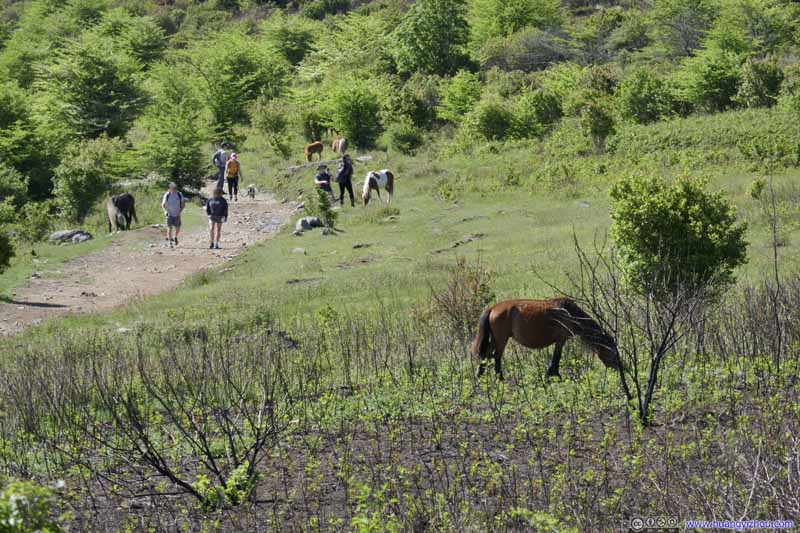
Horses along Trail
Not long after entering Jefferson National Forest, Wilburn Ridge Trail forked from the Appalachian Trail. First, the trail would ascend onto a small rocky mound, some sort of a preview of the rock scrambling to come.
Click here to display photos of the slideshow
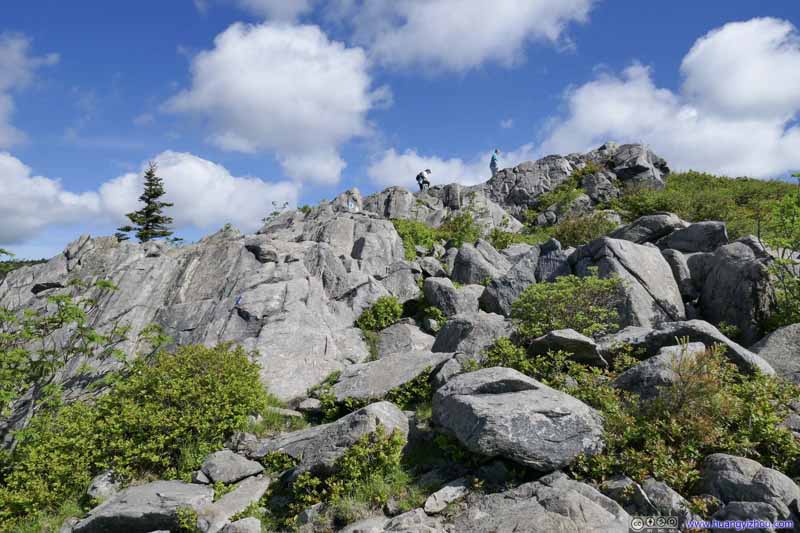
Trail on Rocks
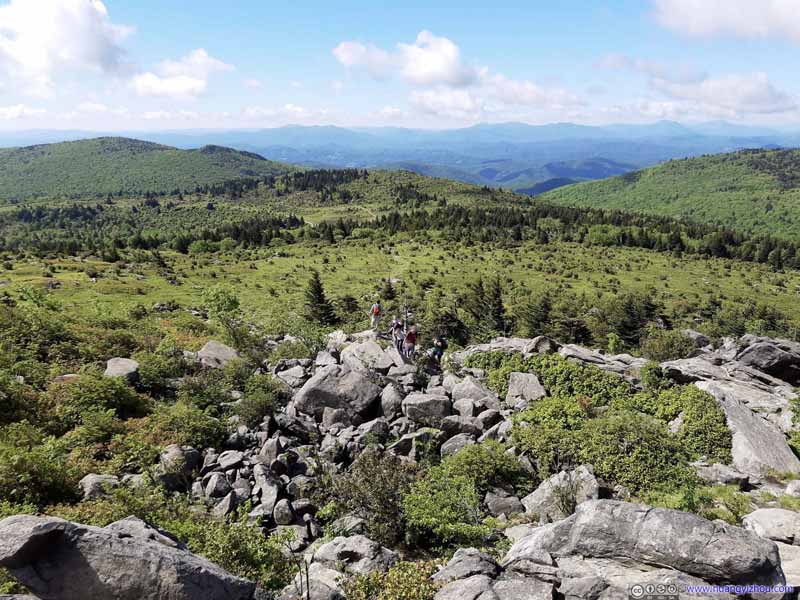
Looking Back at Grayson Highlands State ParkAnother group of hikers tackling the rock scrambling section.
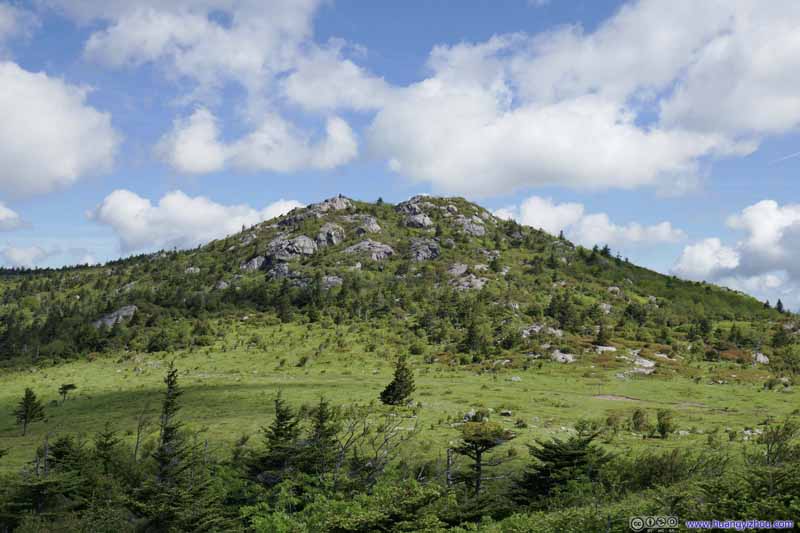
Wilburn RidgeThe actual Wilburn Ridge, which was another hill of rocks to the north, that was higher and larger.
After descending down the previous rocky mound, Wilburn Ridge Trail crossed the Appalachian Trail again, then made its way up the actual Wilburn Ridge on maps, where the views (below) were better.
Click here to display photos of from Wilburn Ridge.
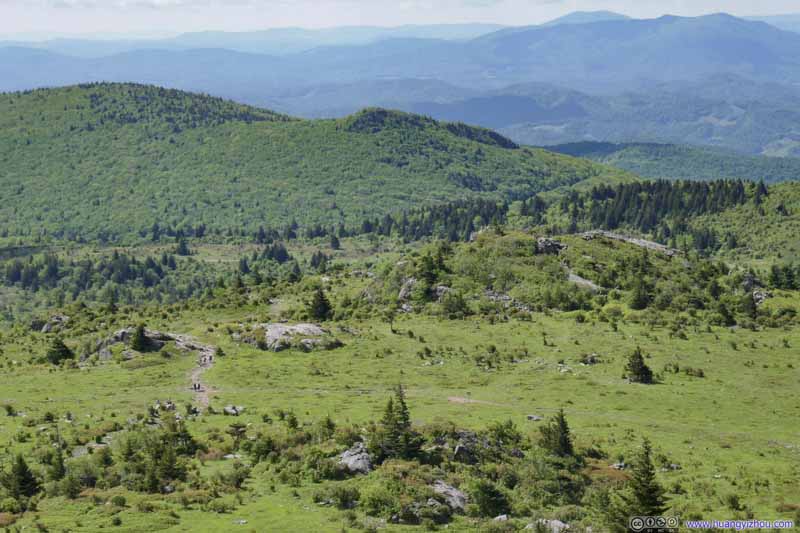
Fields
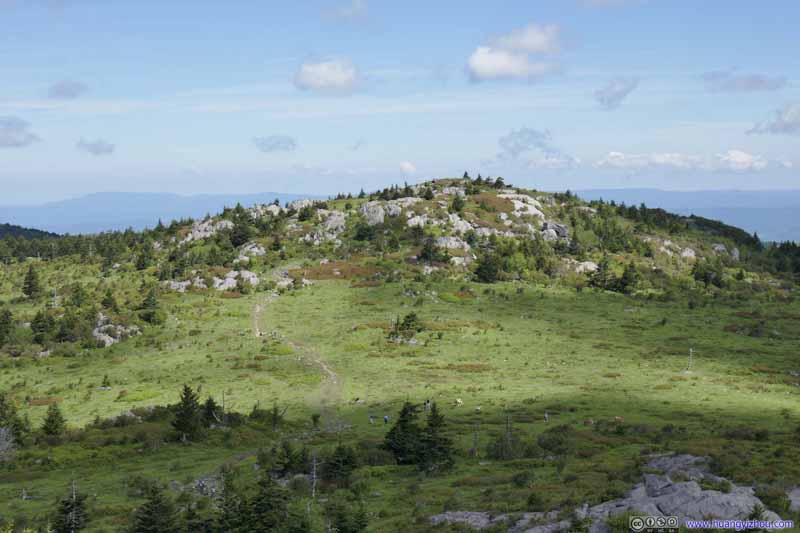
Hill
It’s also a more spacious mound where more people were resting.
Leaving Wilburn Ridge, the trail ducked its way through shallow bushes until it reached the Appalachian Trail (not the most pleasant for tall people).
Click here to display photos of the slideshow
At “Pine Mountain”, I took a small detour from the trail and found a piece of rock with views to the east, where I enjoyed some solitude with snacks, the breeze and the view.
Click here to display photos of the slideshow
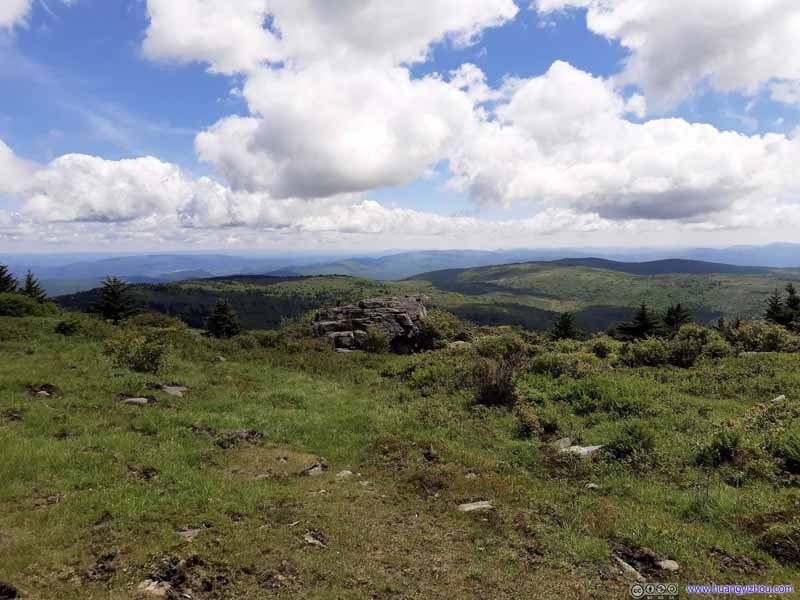
Rock in Field
Finally, I reached the intersection of Crest Trail and the Appalachian Trail at 11:30am. Not far from the intersection, there were a few boulders which offered decent views. So in line with my tradition of the day, I climbed on top of them and grabbed a few photos. Unlike the previous rocks, here I got views of rolling forests to the north, typical of Blue Ridge Mountains.
Click here to display photos of the slideshow
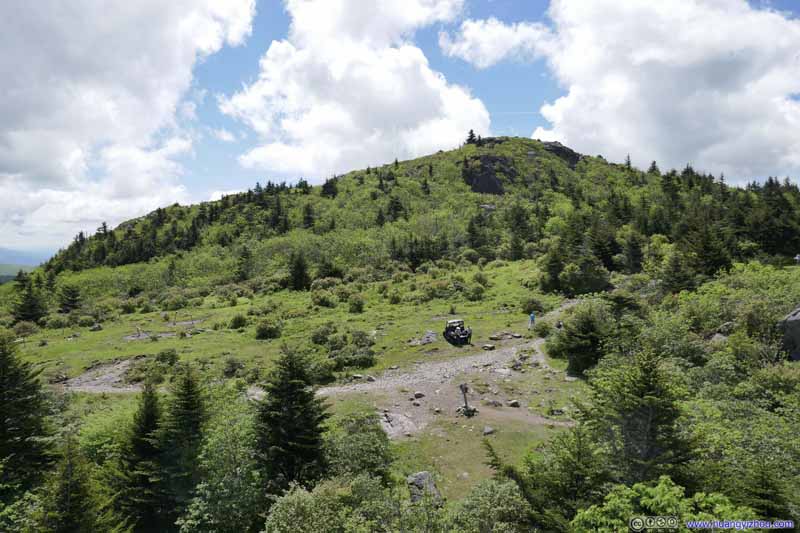
Hill to the South“Pine Mountain”. Two National Forest rangers in the foreground, providing information services.
Appalachian Trail 1
Up till this point, I had been having fun with the rocks and the scenery along Wilburn Ridge Trail. Hiking in open fields like this wasn’t typical in Blue Ridge Mountains, and I have been cherishing the moments.
After that, I made a left turn and joined the Appalachian Trail towards Mount Rogers (red line on map). With occasional views of vast fields and meadows to the south, I still enjoyed this part of the hike.
Click here to display photos of the slideshow
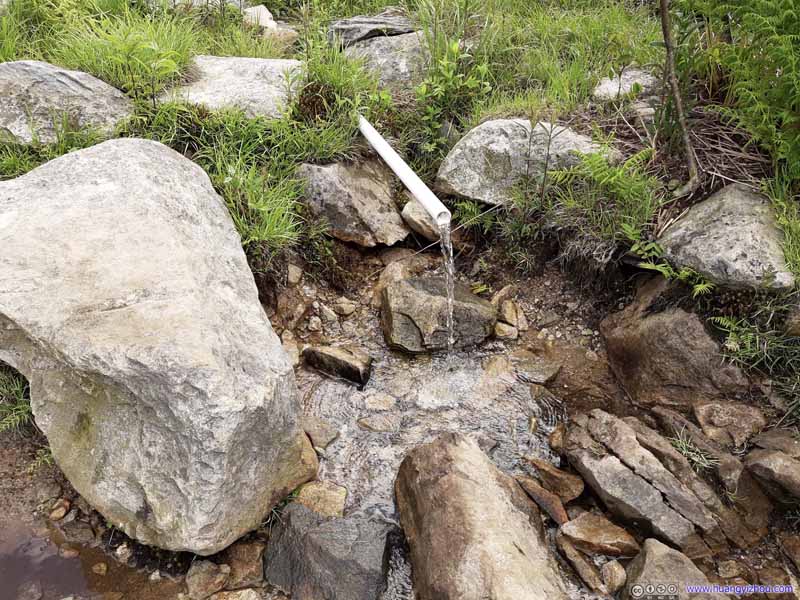
Spring
Mount Rogers Summit
After that, I reached the intersection of Mount Rogers Spur at 12:15pm. Despite knowing there wouldn’t be any views at the summit, I still liked to add it to my state high points collection.
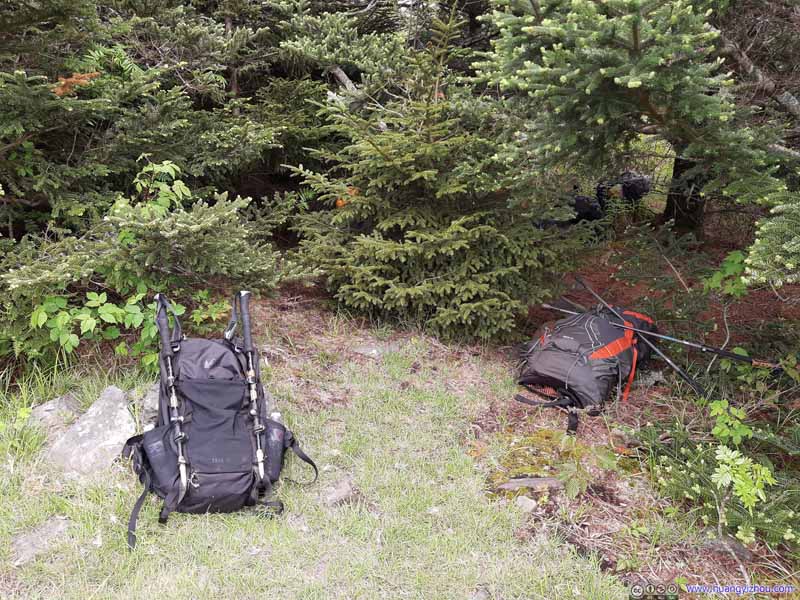
Bag Stashing
Click here to display photos of the trail to Mount Rogers Summit.
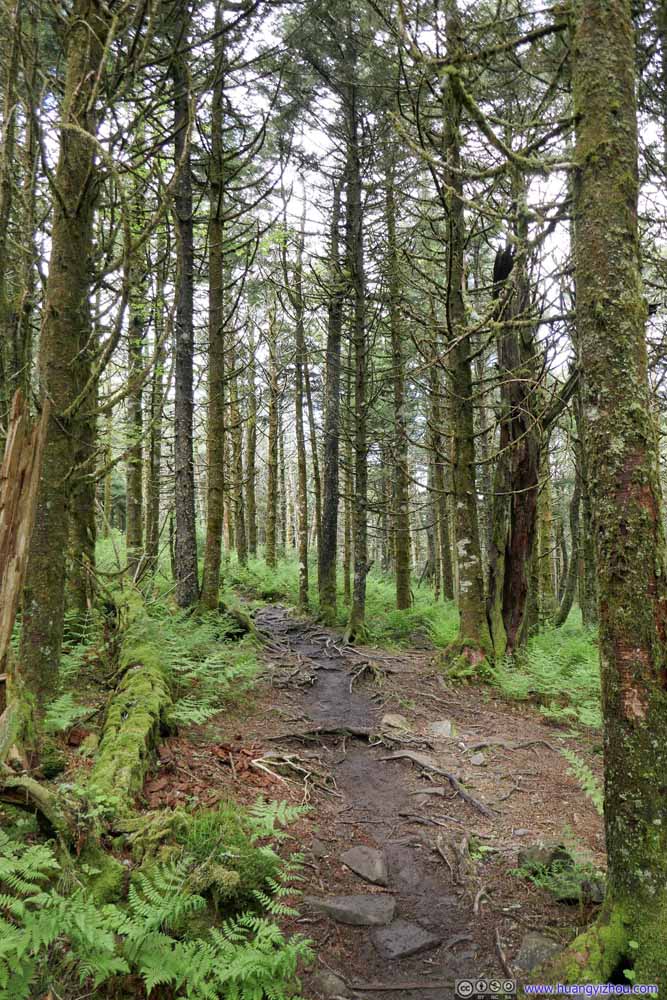
Trail

Trail
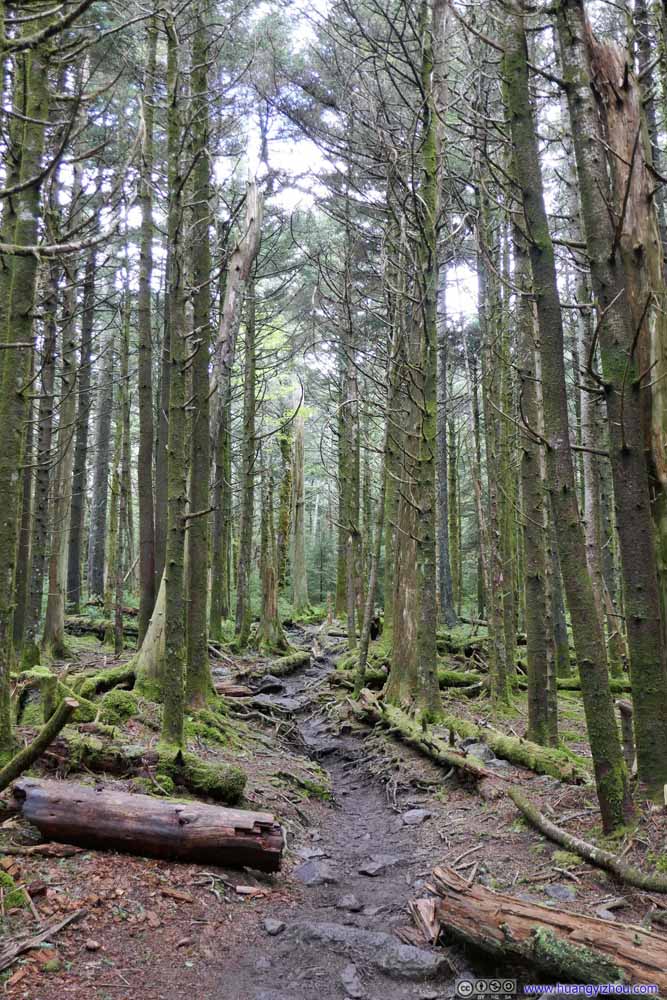
Trail
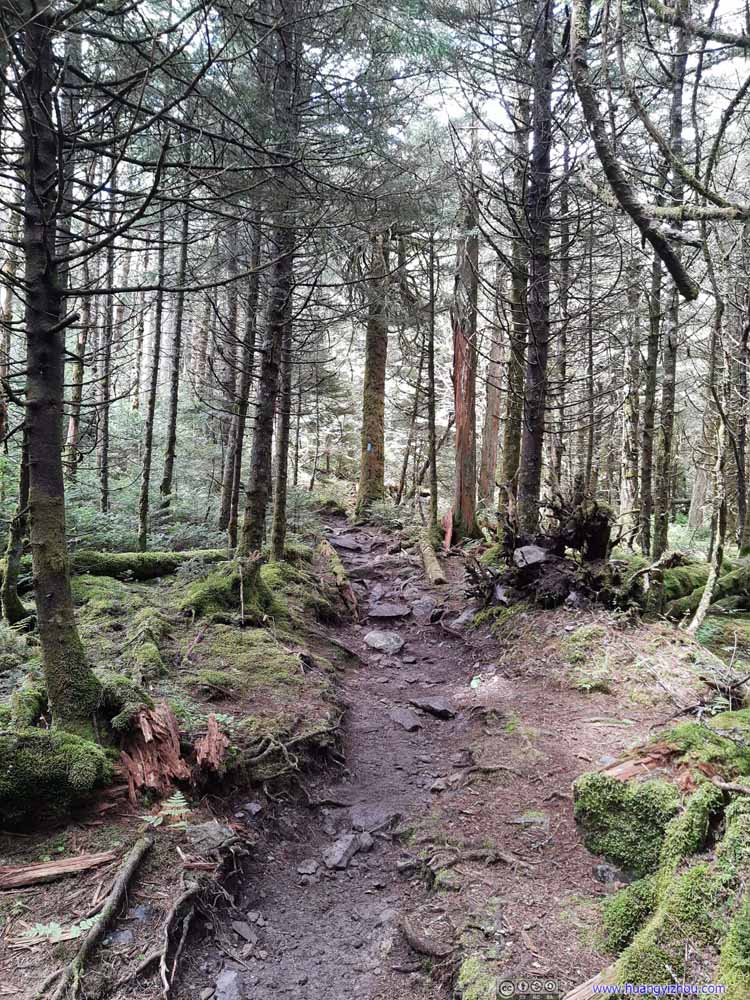
Trail
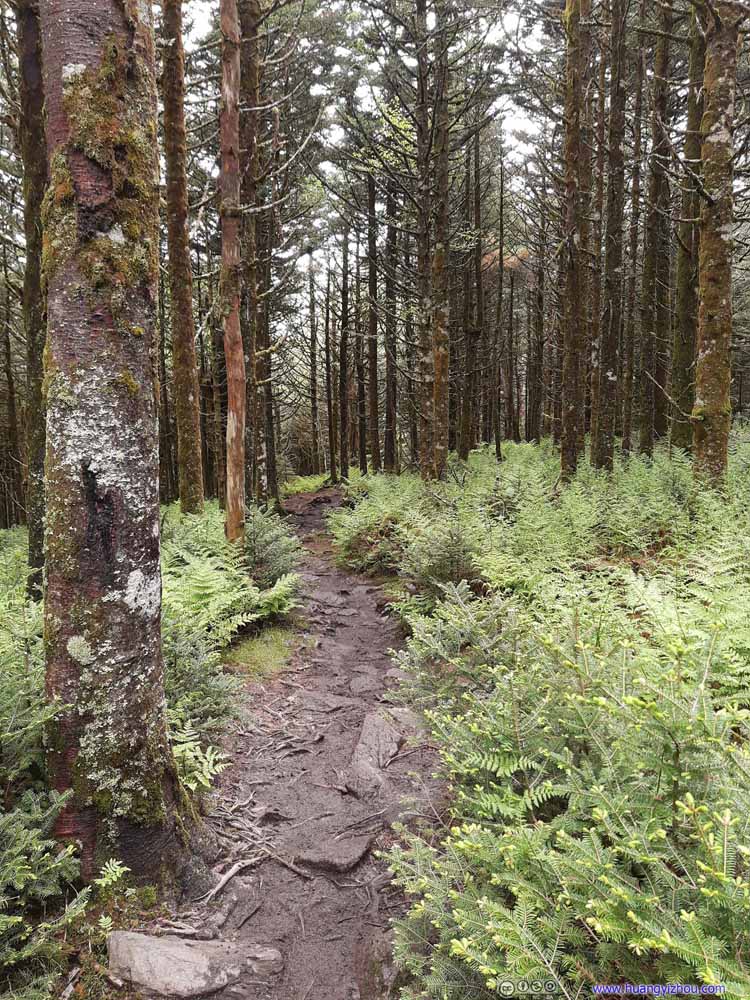
Trail
The sight of extensive mold on trees during the latter part of the trail was really refreshing to me, as an exciting novelty to the Blue Ridge Mountains.
At 1746m elevation, Mount Rogers is the highest elevation point in the state of Virginia. The summit was among similar landscapes like previous rainforests. Unfortunately the humid environment meant a few bugs were bothering me at the summit. So I spent about 7 minutes taking a few photos before heading back down.
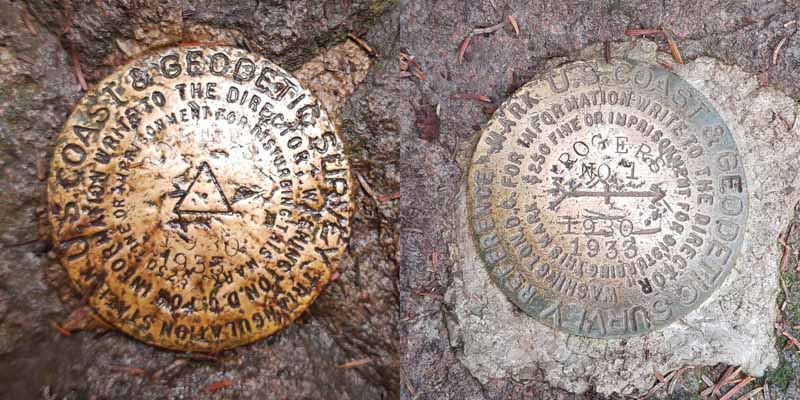
Markers on Mt Rogers Summit
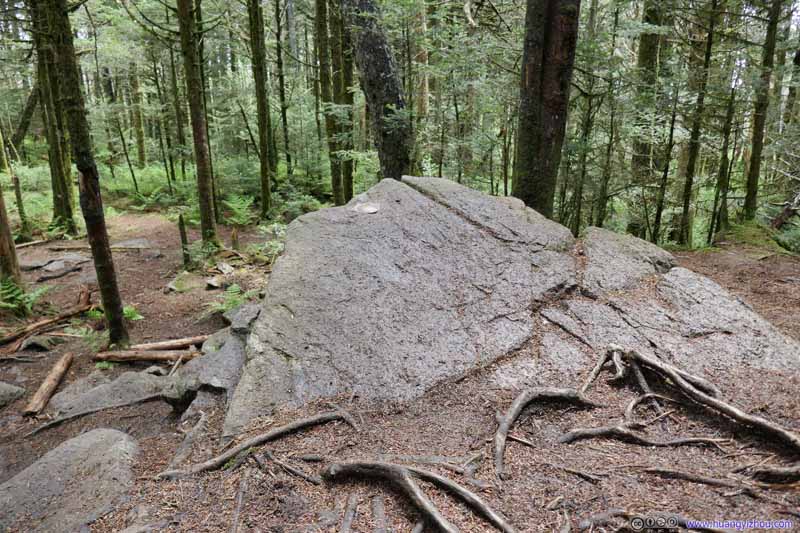
Summit of Mount RogersAs a result, I picked my favorite rock between the two, and decided to call it the summit.
Misery with Mud
After taking a short rest at the intersection, I continued onto the Appalachian Trail at 1pm. This time, I tried to circumvent Mount Rogers.
While going downhill, the conditions of the trail quickly deteriorated with the emergence of a few muddy spots.
Click here to display photos of the trail.

CreekThese creeks created a few water crossings, probably the culprit of all the mud along the trail.
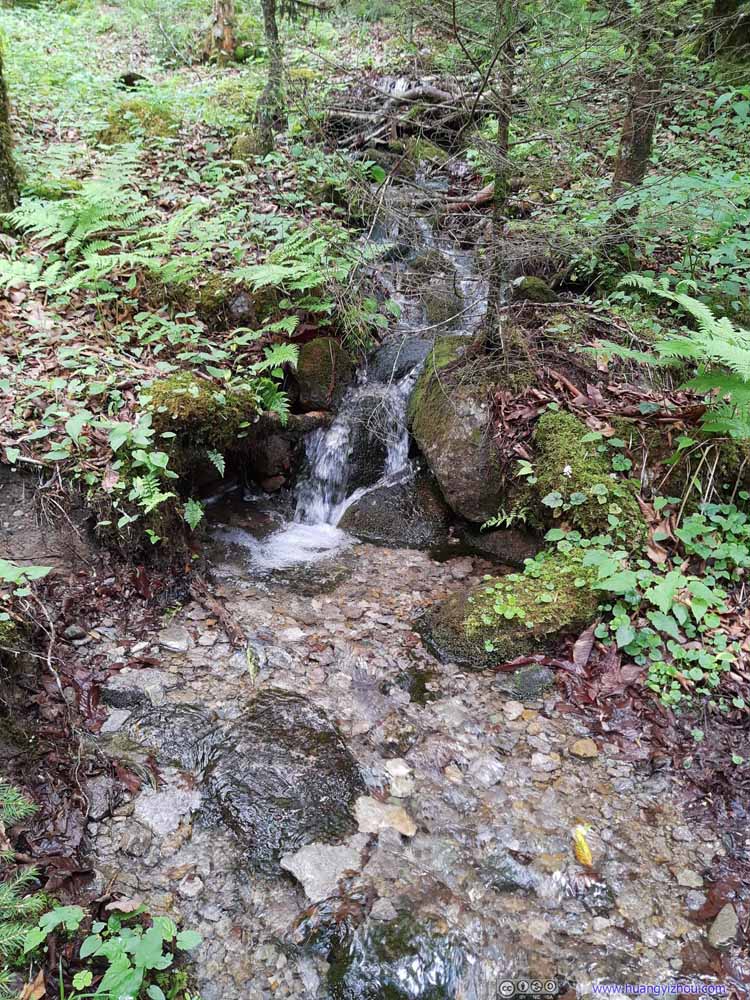
CreekThese creeks created a few water crossings, probably the culprit of all the mud along the trail.
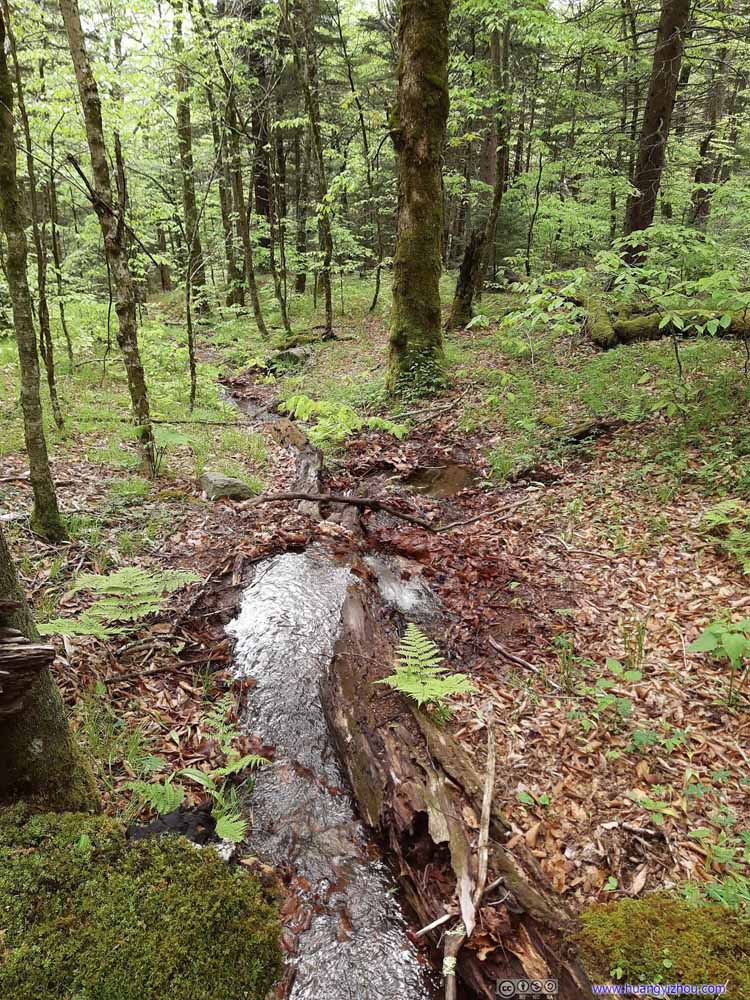
CreekThese creeks created a few water crossings, probably the culprit of all the mud along the trail.
At about 1:30pm, I reached an open field (at the intersection of the purple and dark blue line in the trail map). Having endured the misery of mud, I was rather rejuvenated by the pleasant sceneries in sight.
Click here to display photos of the slideshow
Originally, I planned to continue on Appalachian Trail (dashed yellow line on map), but I was a bit carried away by the scenery that I decided to wander around in such open meadows. As a result, I went onto the nearby Virginia Highlands Horse Trail (blue line on map). It’s not a big deal as the two trails went parallel to each other. After entering Lewis Fork Wilderness, the Horse Trail had a few wet spots, but its rocky surface meant staying dry was relatively easy.
Click here to display photos of the slideshow
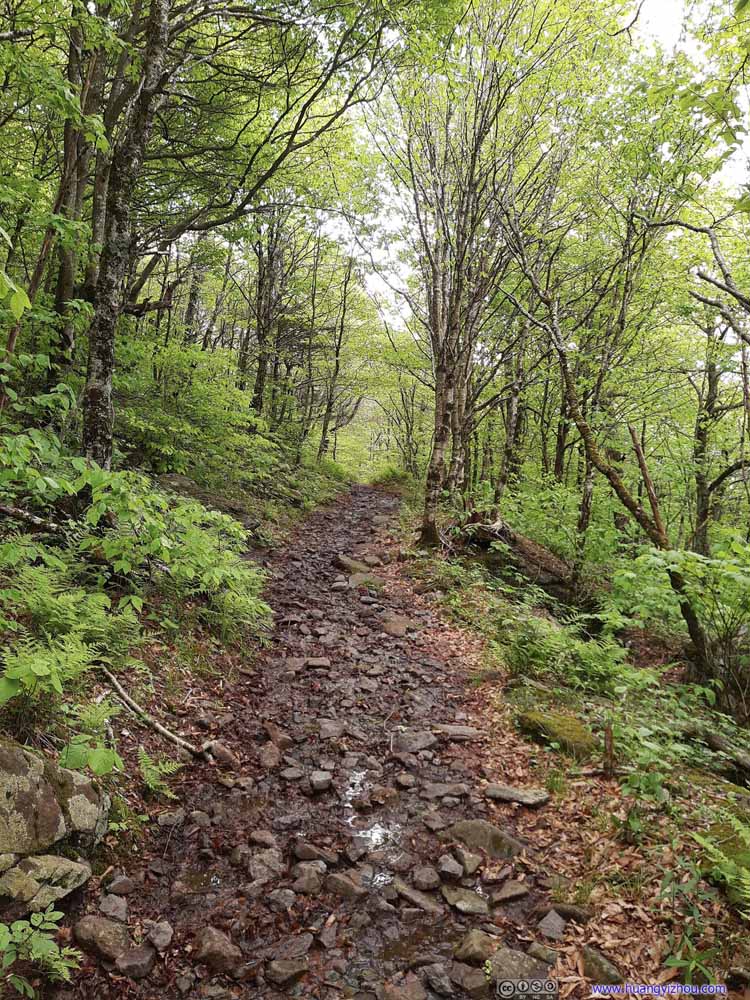
Virginia Highland Horse Trail
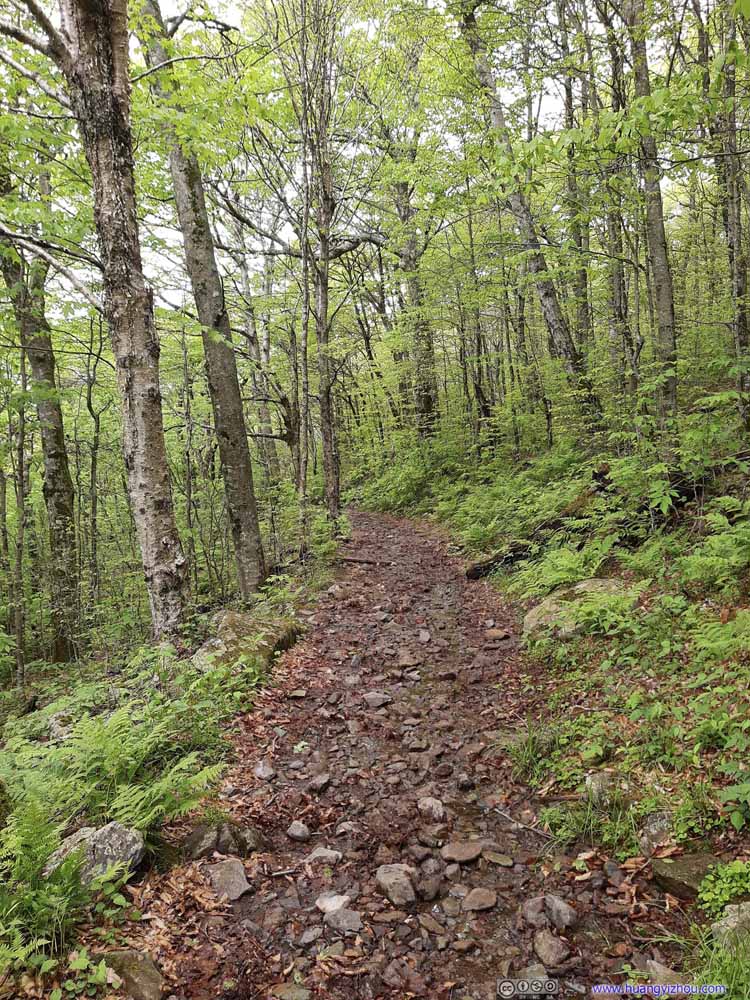
Virginia Highland Horse Trail
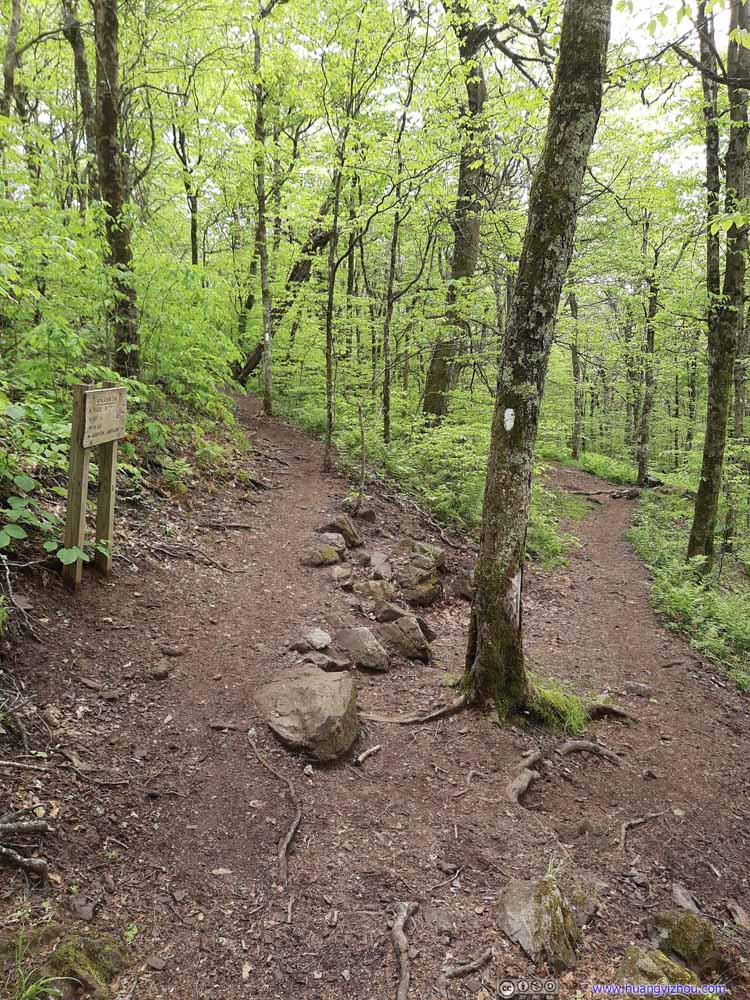
Intersection of Appalachian Trail
Click here to display photos of the Mount Rogers Trail.
At 2:15pm, I went onto Mount Rogers Trail (brown on map). It’s much narrower, among a diverse forest landscape. There were quite a few muddy spots, especially towards the end, which was quite disheartening.
At 3:07pm, I reached the intersection of Mount Rogers and Lewis Fork Trail, where I could rest my legs on a few stumps (there weren’t any good spots to rest along Mount Rogers Trail). Here I ran into another group of hikers that were doing a similar loop as me but in reverse direction. They informed me that Lewis Fork Trail was “very very muddy”, which sunk my heart.
If there had to be some encouraging news, they took the “lower” part of Lewis Fork Trail (dashed red line on map, shorter but with more elevation gain), and I intended to take the “upper” part (cyan line on map). I consoled myself that things wouldn’t be as wet on higher elevations.
Click here to display photos of the Lewis Fork Trail.
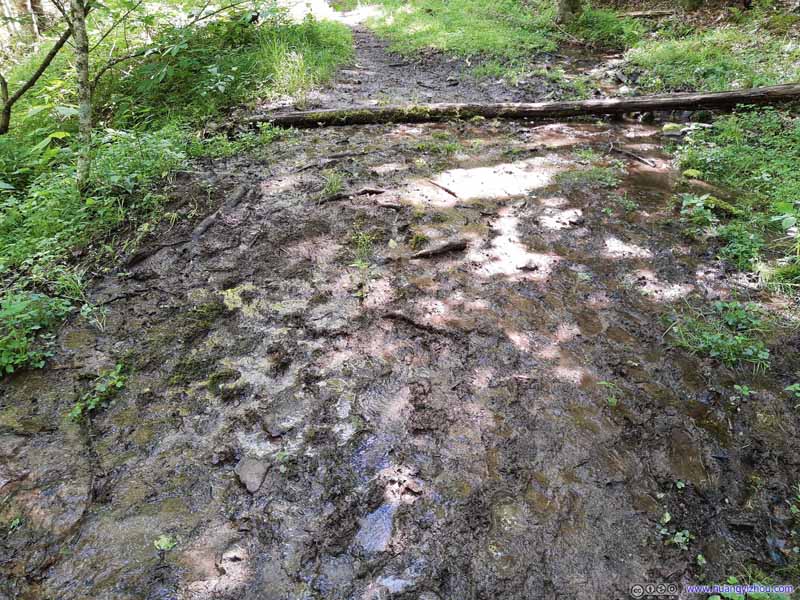
Muddy Section of Lewis Fork Trail
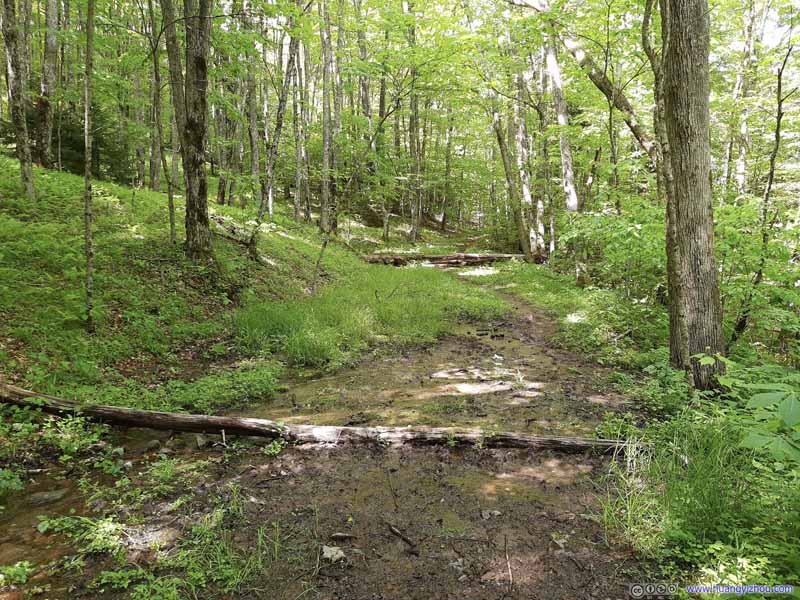
Muddy Section of Lewis Fork Trail

Muddy Section of Lewis Fork Trail
It turned out that sections of Lewis Fork Trail, especially the southern part, was muddy as hell. With the aid of hiking poles, my passage wasn’t that torturous. The previous group of hikers informed me that Lewis Fork Trail was mainly intended for horses, so there wasn’t as much incentive to construct drainage and improvements along it.
Click here to display photos of the Lewis Fork Trail.

Wet Trail
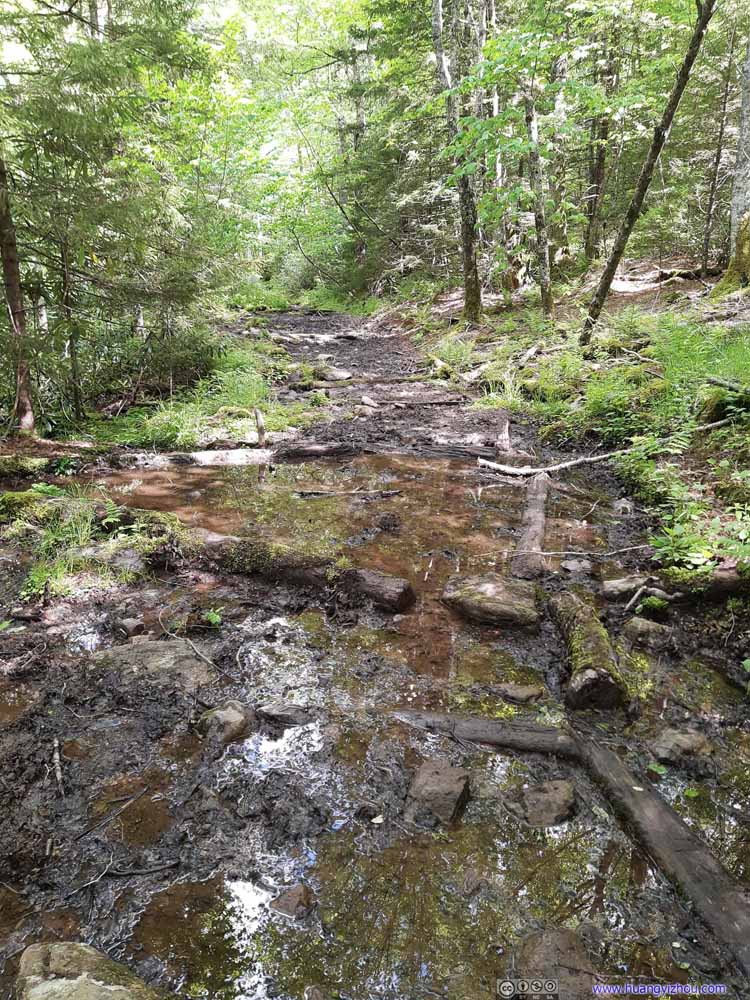
Wet Trail
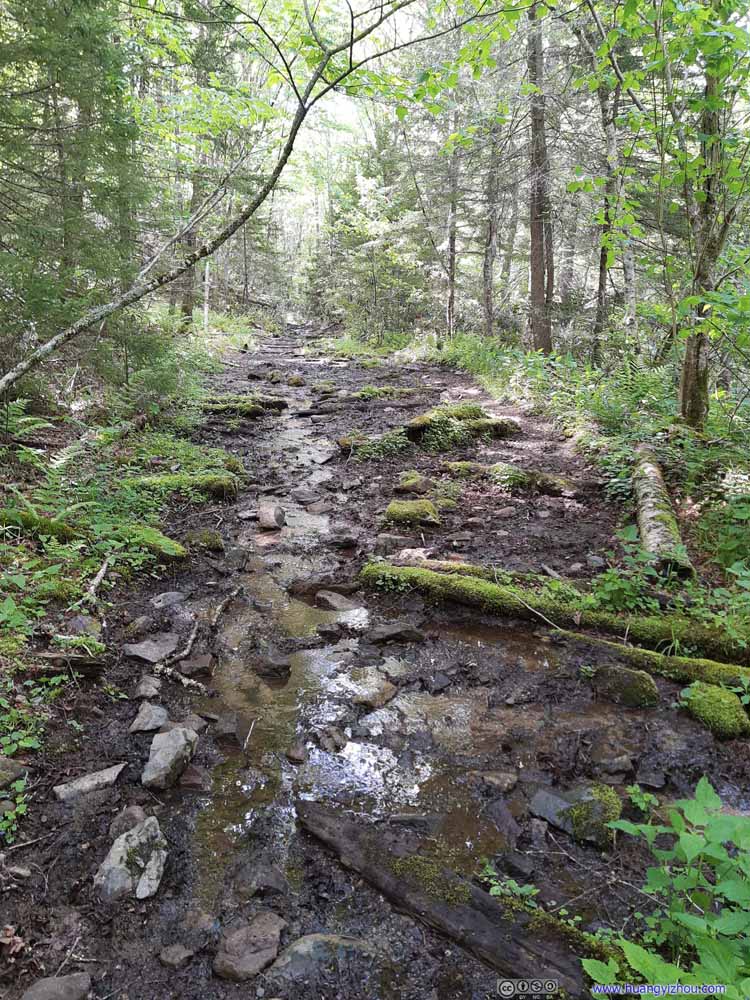
Wet Trail
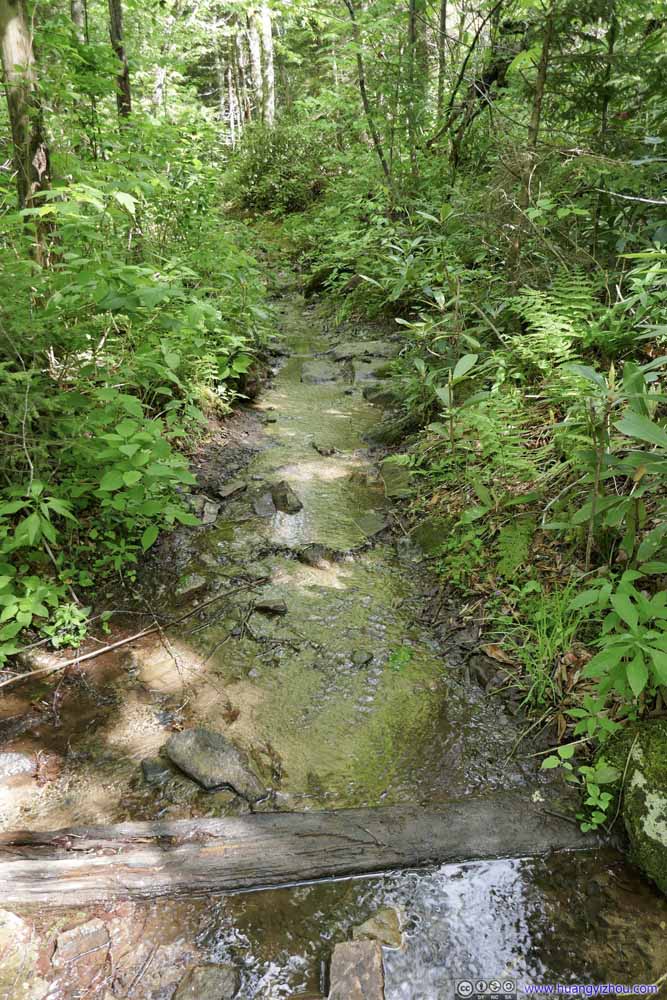
Wet Trail

Wet Trail
Crest Trail
Finally, at 4:40pm, I came out of the miseries of mud along Lewis Fork Trail, and back to the sunlit Crest Trail.
Nearby there was a campground and another water source, which I assumed to be untreated spring water. I had enough water in the backpack so I didn’t check it out.
Click here to display photos of the slideshow
For Crest Trail, it’s rather a gravel road for forest rangers’ ATVs, so for hiking it’s actually in decent shape. Despite that, there were still a few muddy spots.
And with open fields surrounding Crest Trail, I launched my drone for an aerial tour. Here’s a video:
And I also tested out the drone’s “follow” feature, which worked great on such flat and open trail.
It’s also along Crest Trail that I ran into a few groups of ponies grazing. Otherwise, I would probably begin to doubt whether the ponies were really that popular since I saw few earlier today.
Click here to display photos of the ponies.
At the end of Crest Trail it’s Scales Campground, reachable by car through a dirt road (FS613). It’s an enclosed campground, most likely to keep the horses from innocent campers.
On a hill to the east of the campground, quite a few horses were grazing. I felt I hadn’t seen enough ponies for today, so I decided to check them out.
Click here to display photos of the slideshow
Scales Trail
Scales Campground was the intersection of a few trails, incluing Appalachian. So to go back to the trailhead, I had a few options. I ruled out the Appalachian Trail first since it’s a longer detour. I planned to take the combination of Virginia Highland Horse Trail and Wilson Creek Trail (dashed blue line on map), but instead went on the Scales Trail, since start of these two were very close to each other.
It ended up that Scales Trail was a gravel vehicle road, but it’s very wet, like a creek with a few exposed rocks. (In addition I believed the views along the other trail would be better.)
Click here to display photos of the slideshow
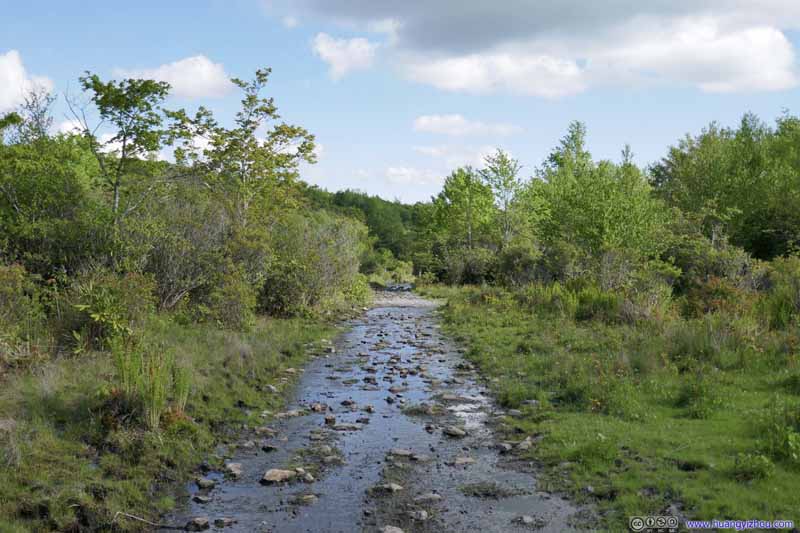
Scales Trail
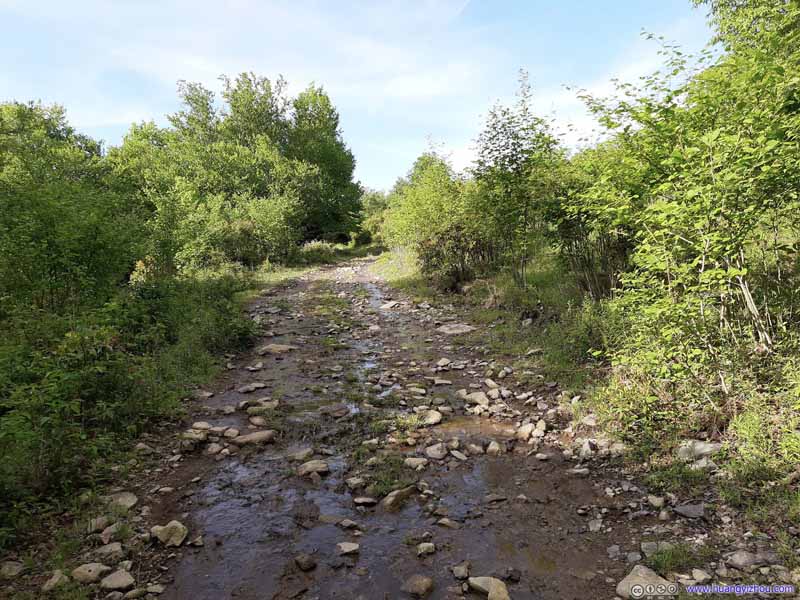
Scales Trail
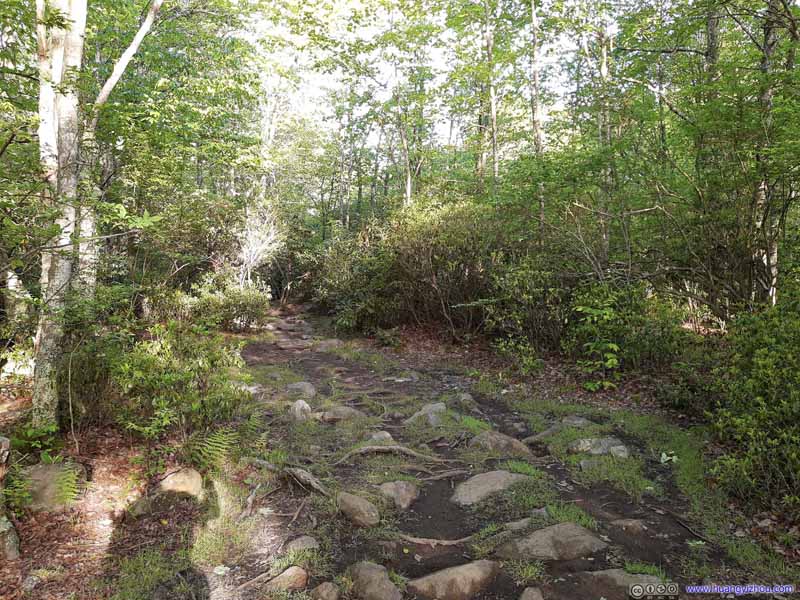
Appalachian Trail
Along the way, I launched my drone for some aerial tour.
And here’s a video from the fields around Wilson Creek:
Appalachian Trail 2
Finally, just before 7pm, I crossed both Wilson Creeks and got back to the Appalachian Trail (cyan on map). After that, it was a steady uphill back to Grayson Highlands State Park. This section felt like a walk in the woods, typical of Blue Ridge Mountains. It was getting dark so I raced through it without much delay.
Click here to display photos of the Appalachian Trail.
After the Appalachian Trail reaches the top of a ridge, it’s lined with groups of boulders. I climbed onto one of them for some views. Much to my surprise, I got cellular signal there.
Click here to display photos of the slideshow
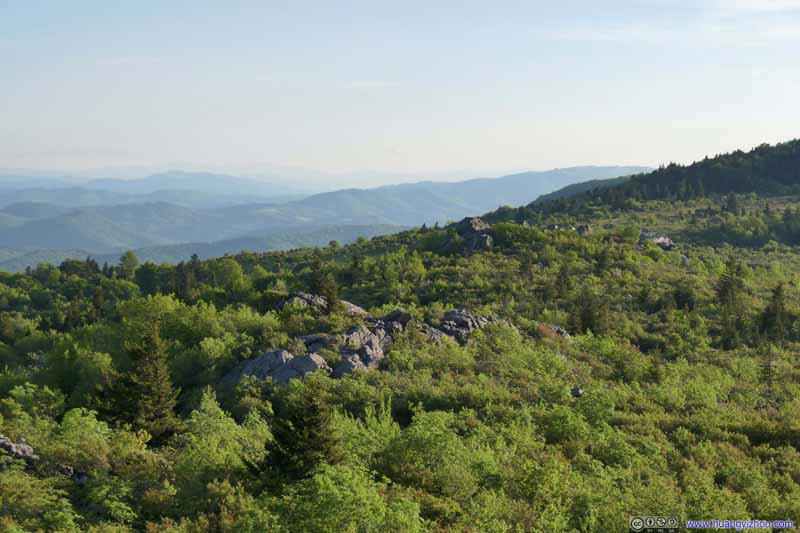
BouldersThe Appalachian Trail passed through the woods. Rolling mountains in the distant background.

Hill of Boulders

Finally, I got back to the trailhead at 8:20pm, 11 hours after I started, finishing this very long day.
END
![]() Day 3 of May 2022 Virginia Trip, Grayson Highlands by Huang's Site is licensed under a Creative Commons Attribution-NonCommercial-ShareAlike 4.0 International License.
Day 3 of May 2022 Virginia Trip, Grayson Highlands by Huang's Site is licensed under a Creative Commons Attribution-NonCommercial-ShareAlike 4.0 International License.

